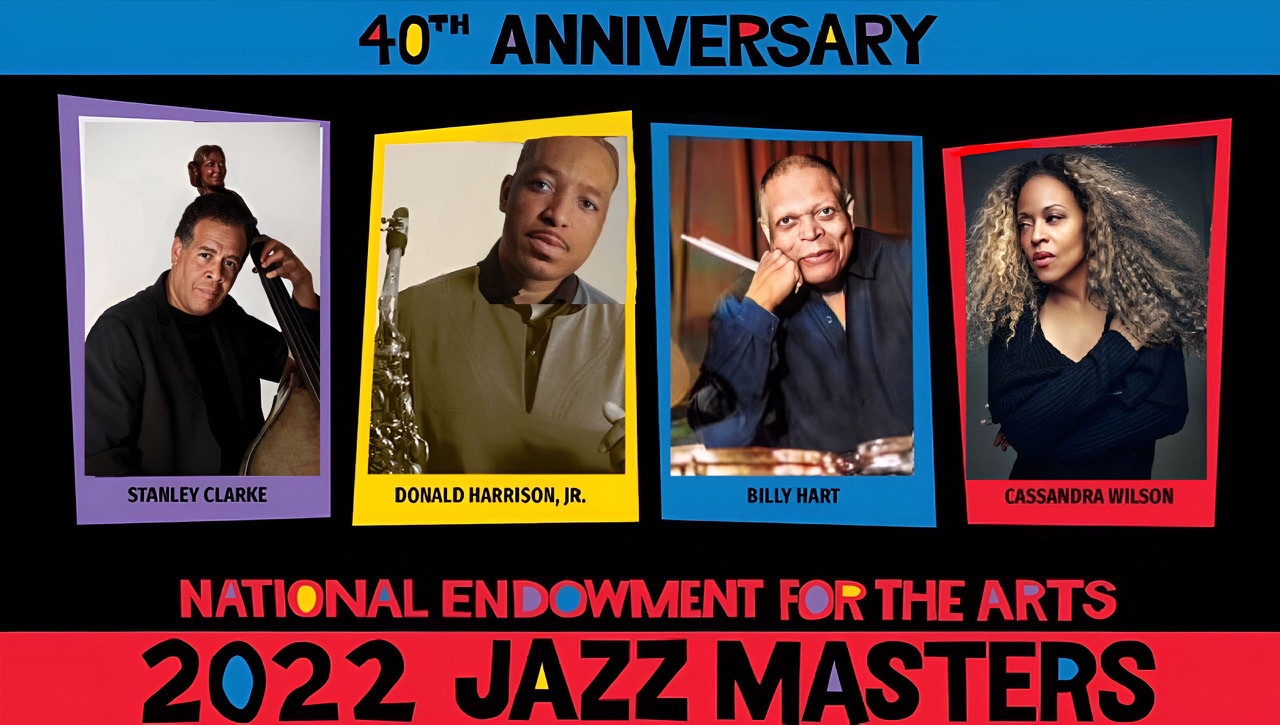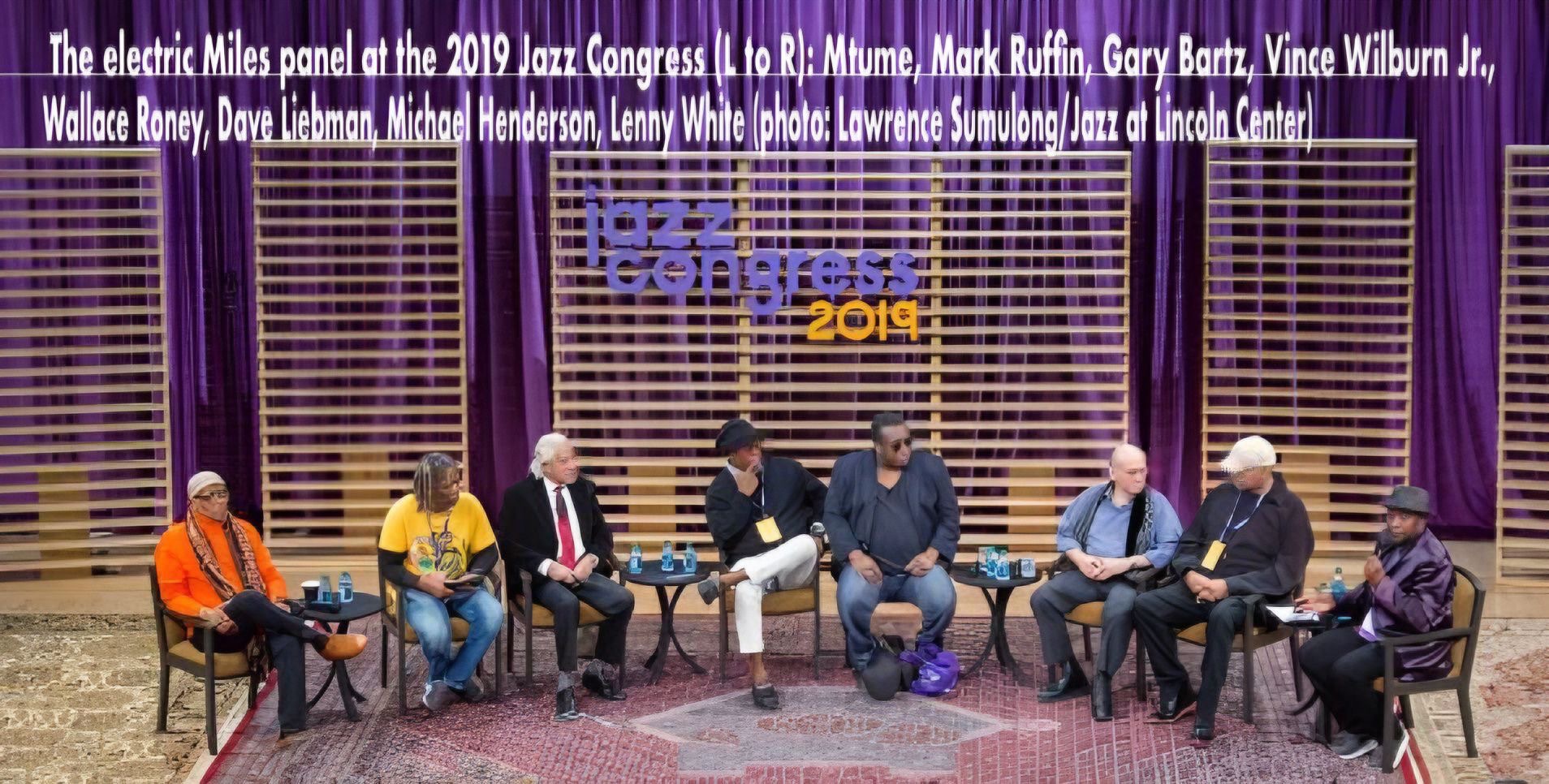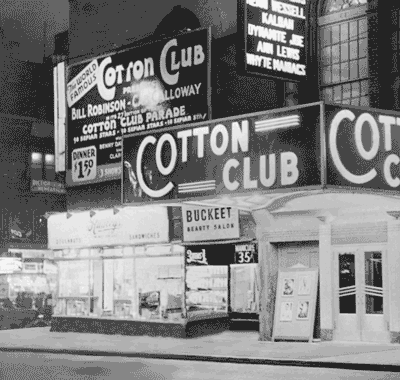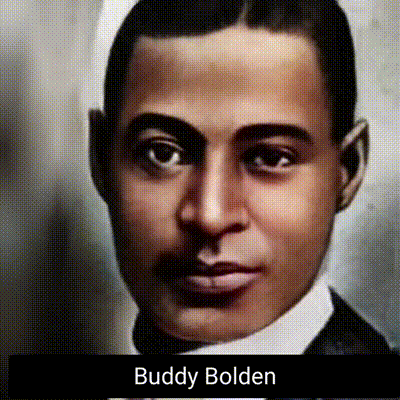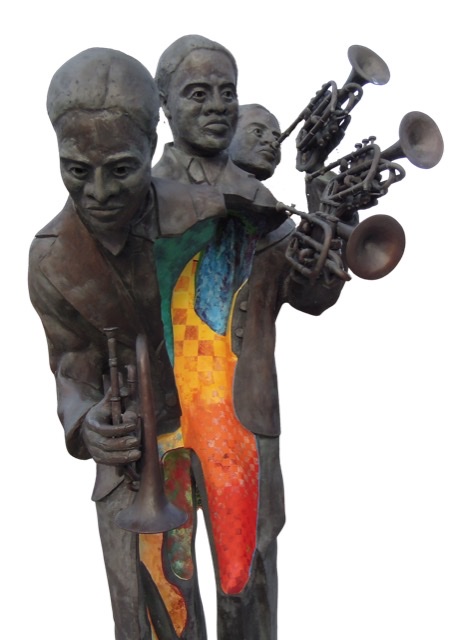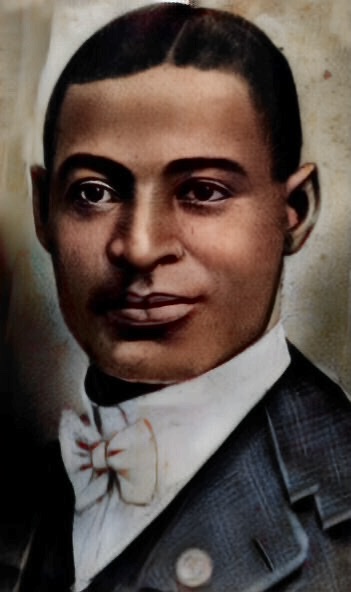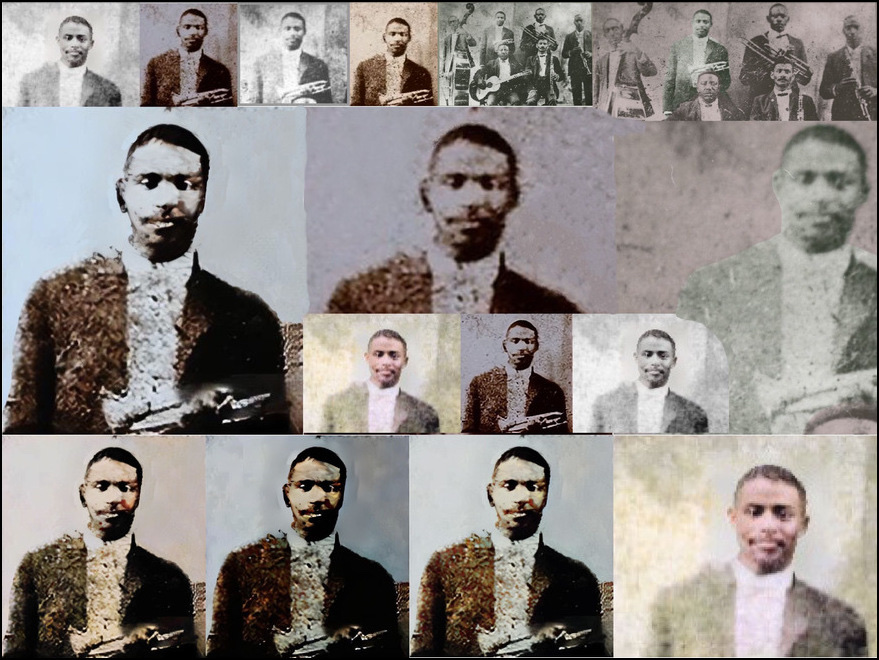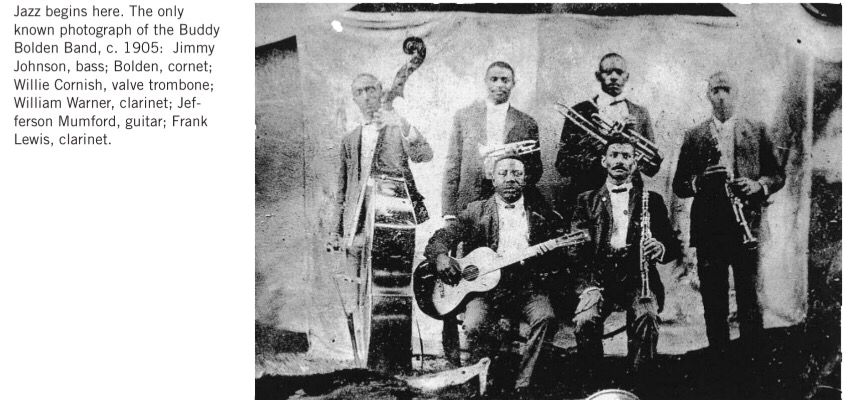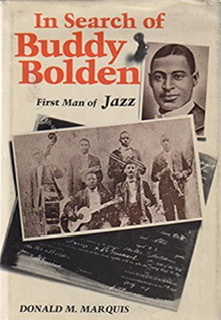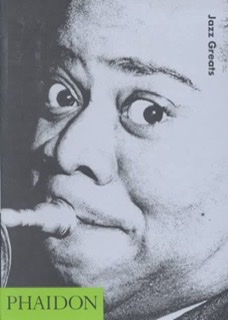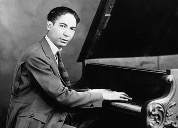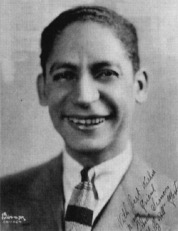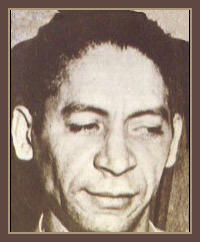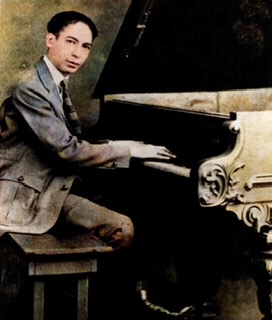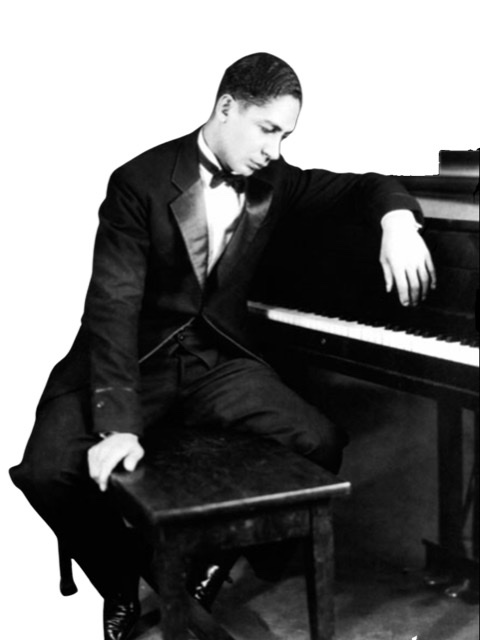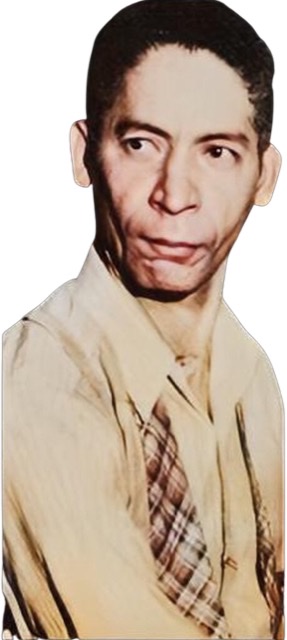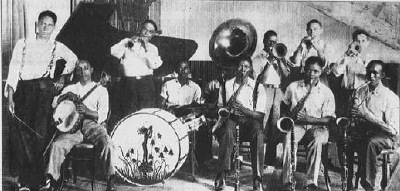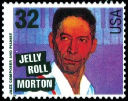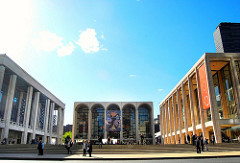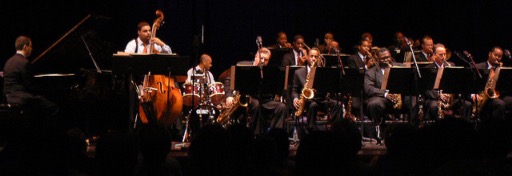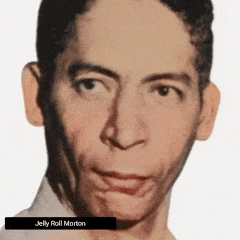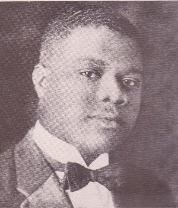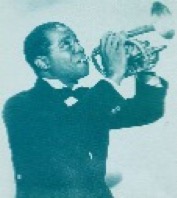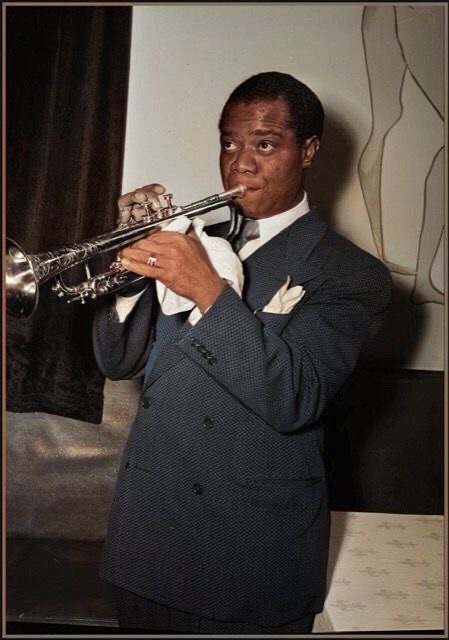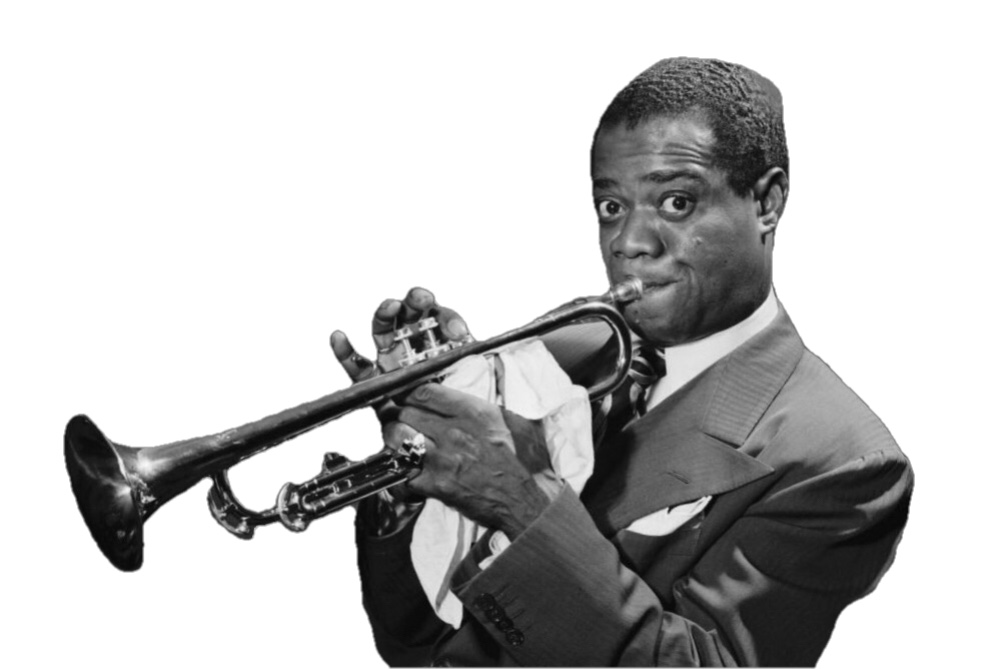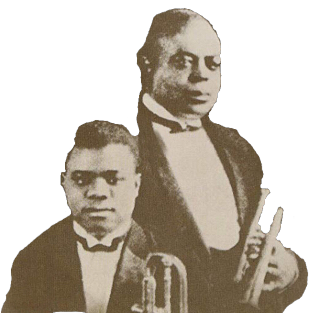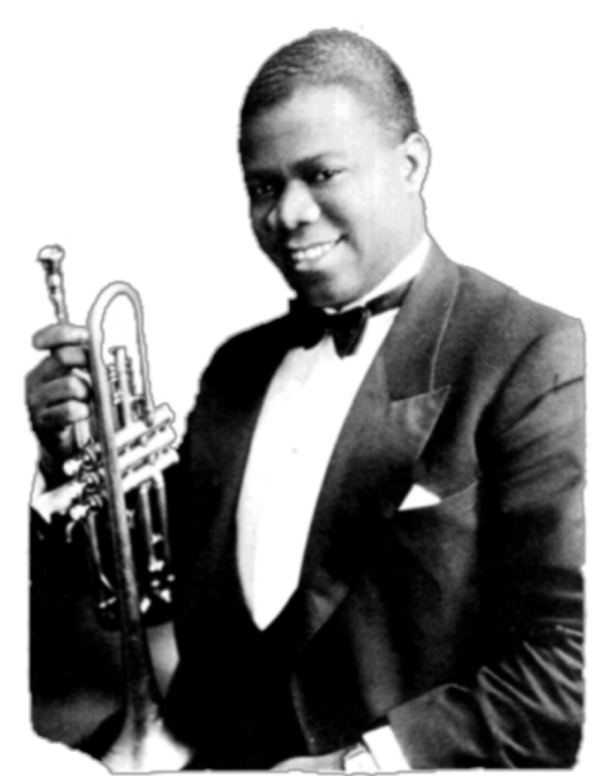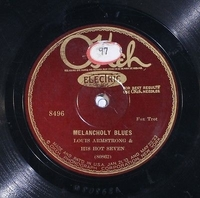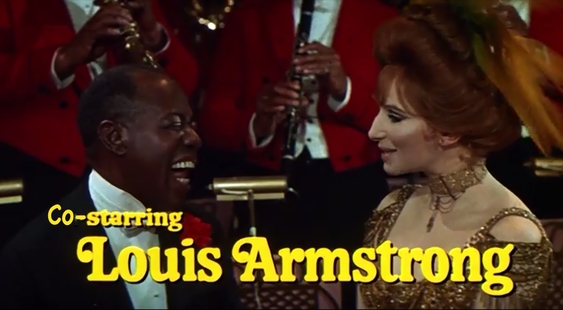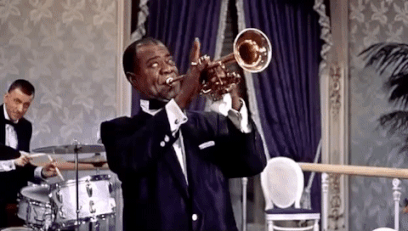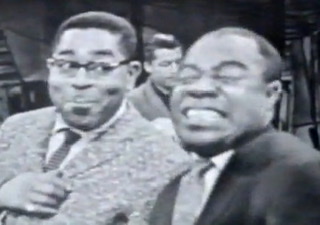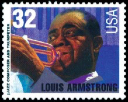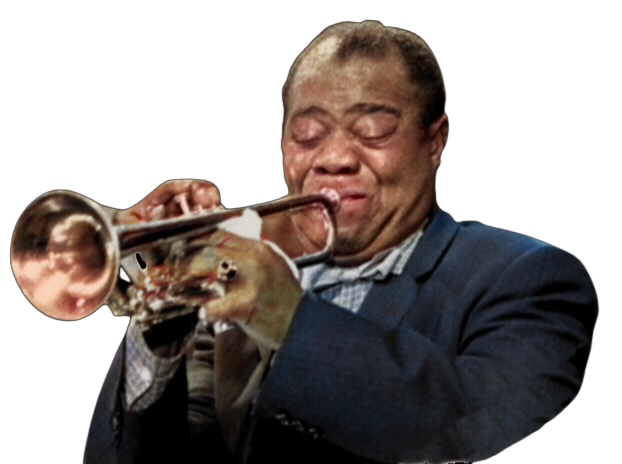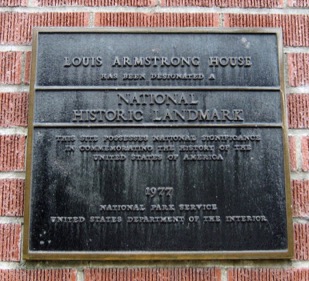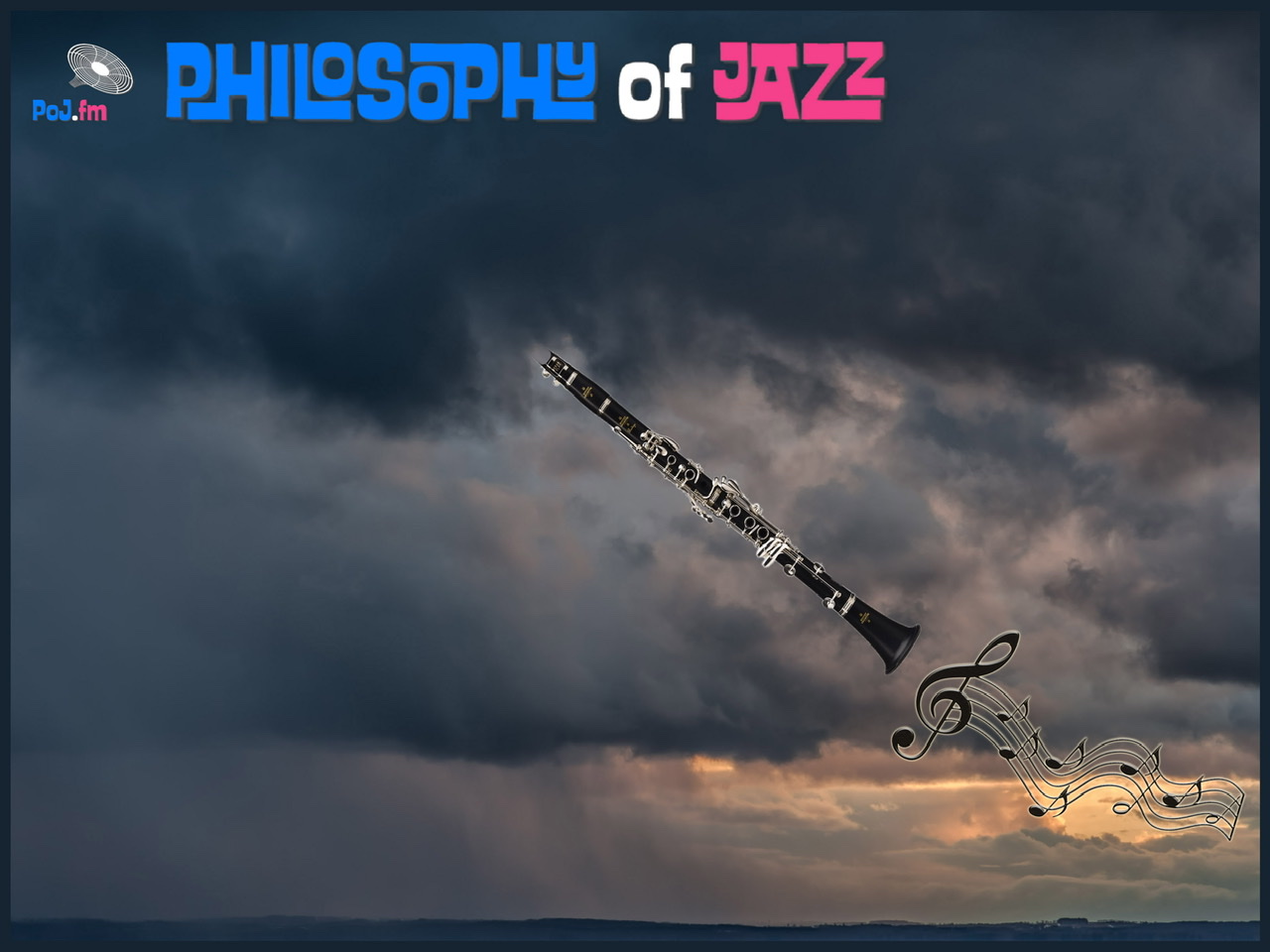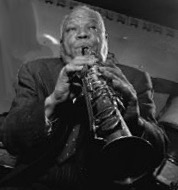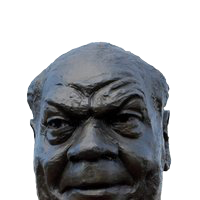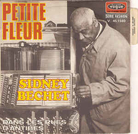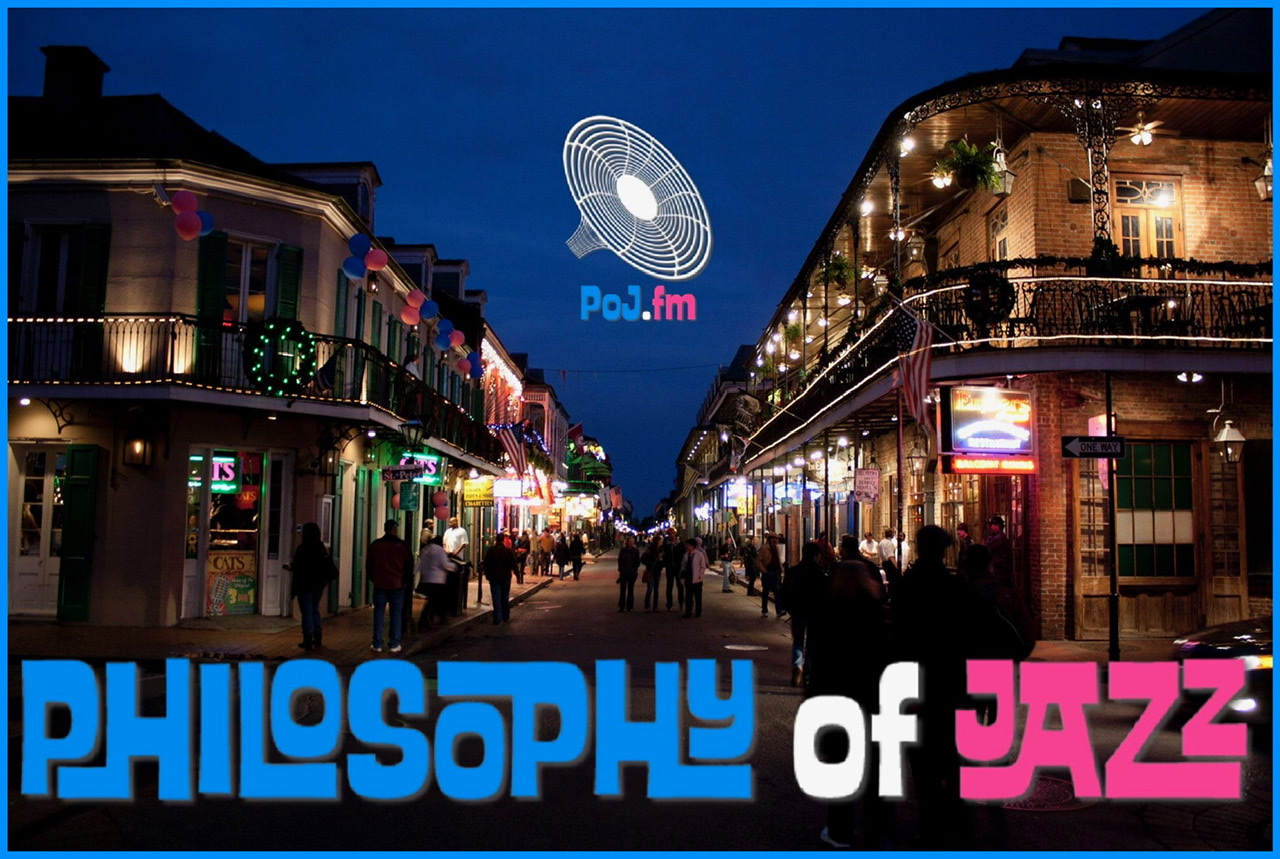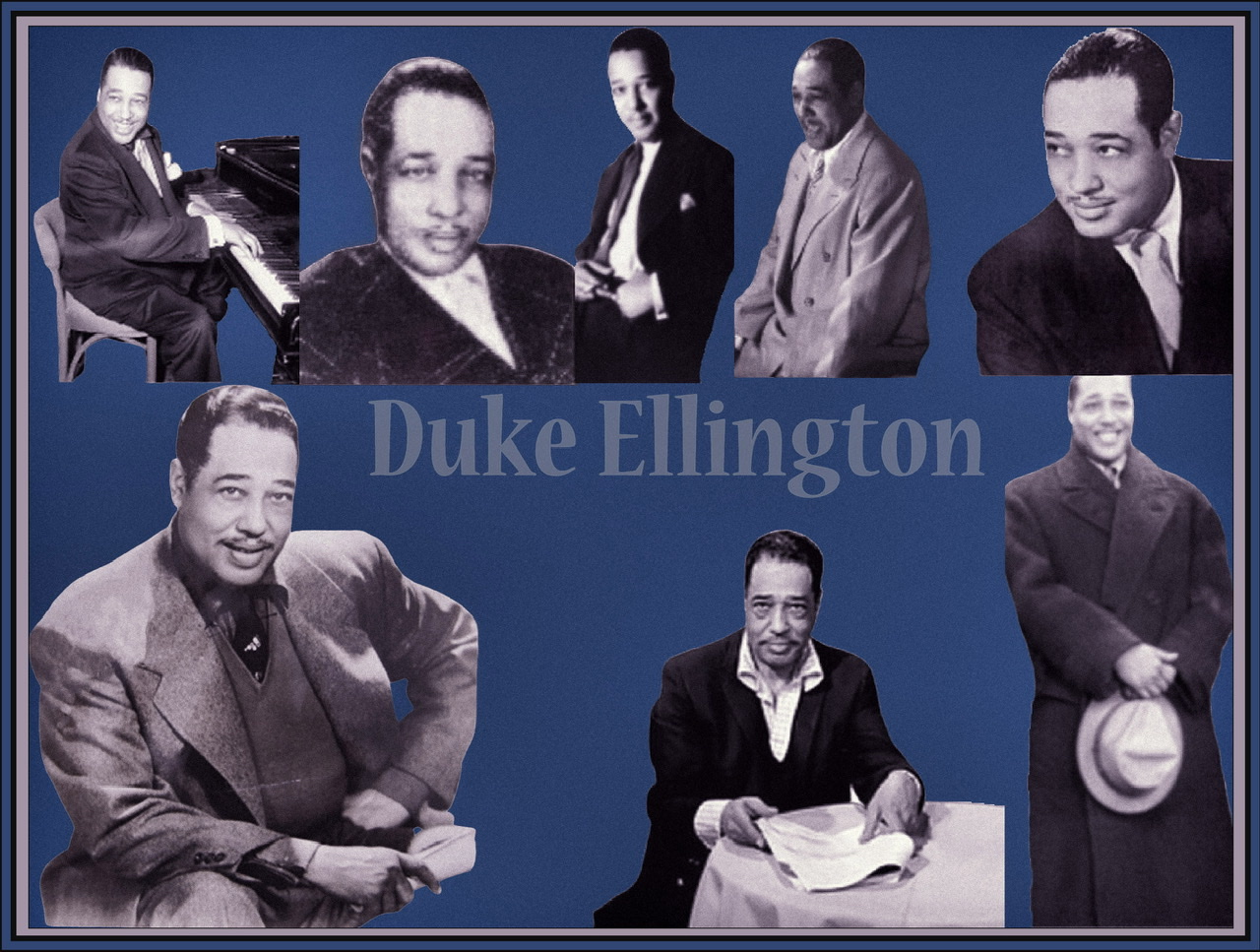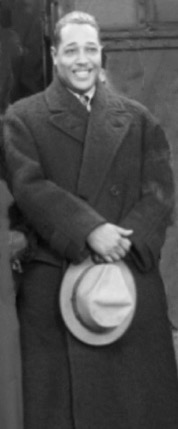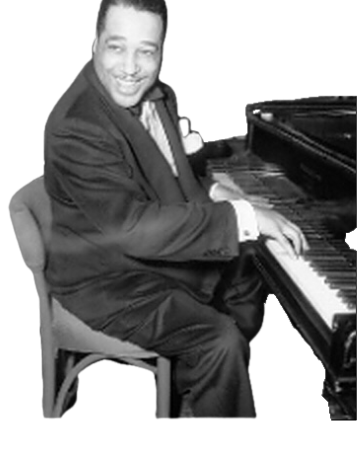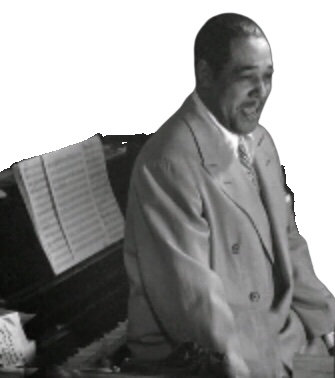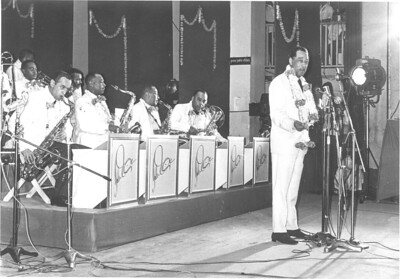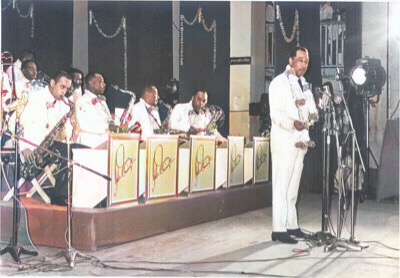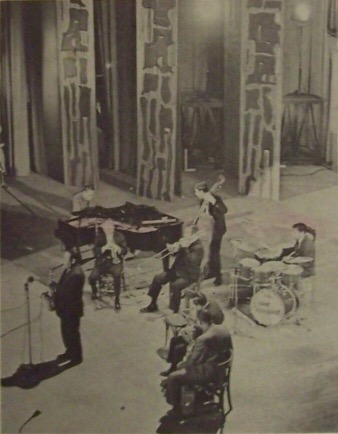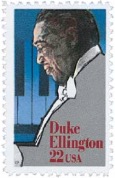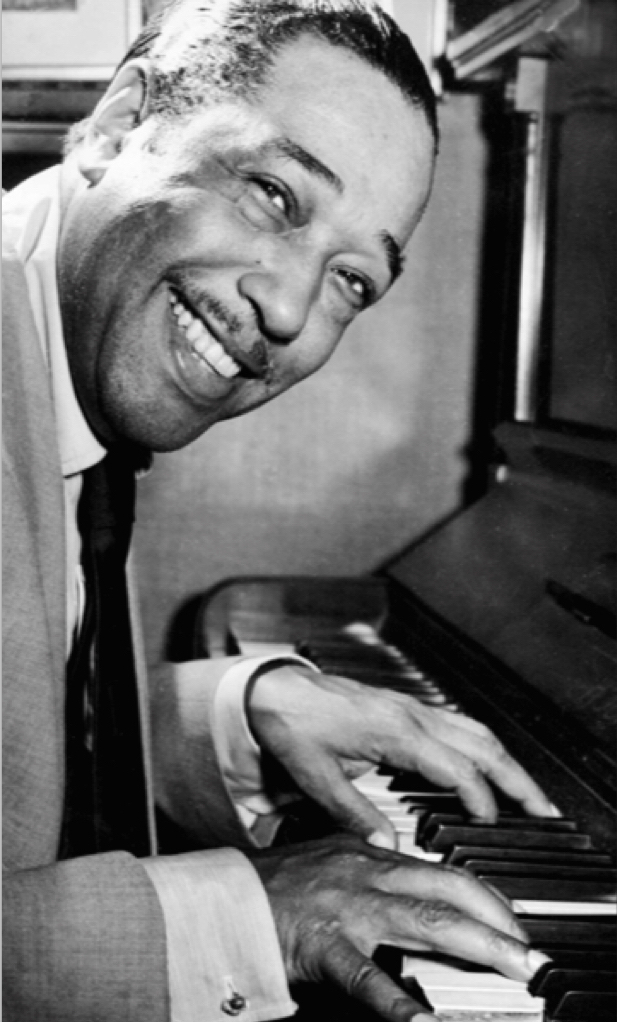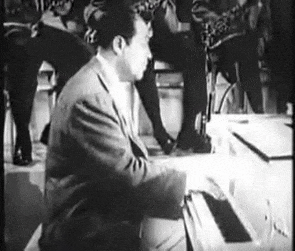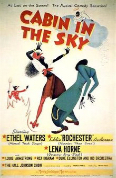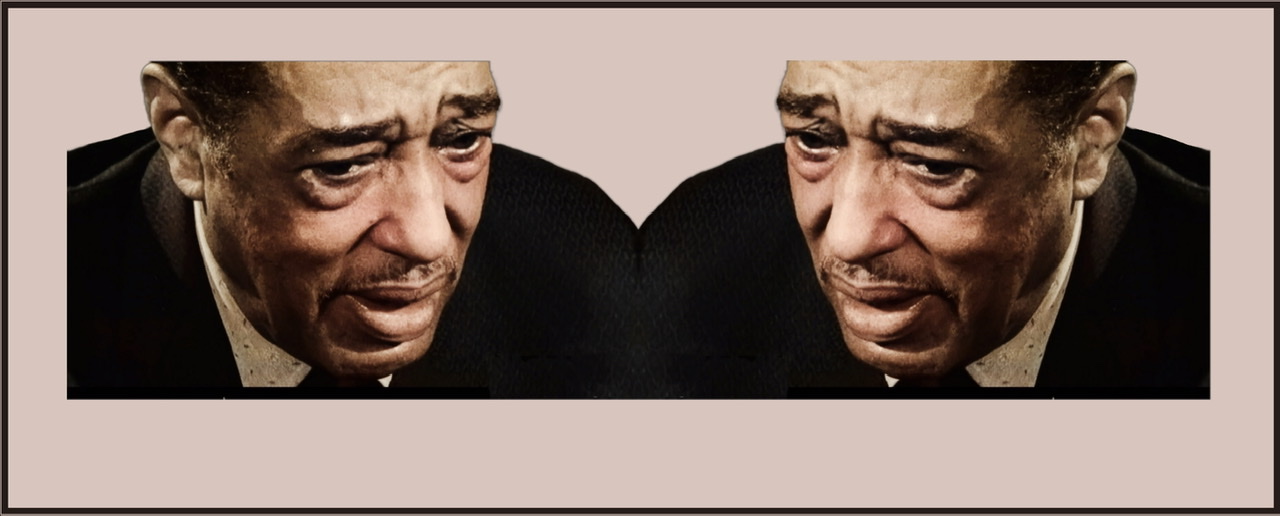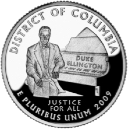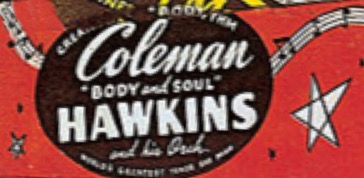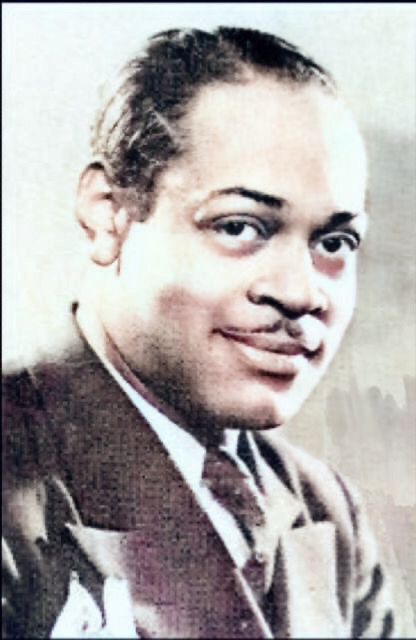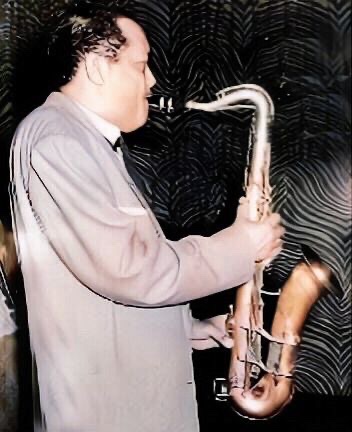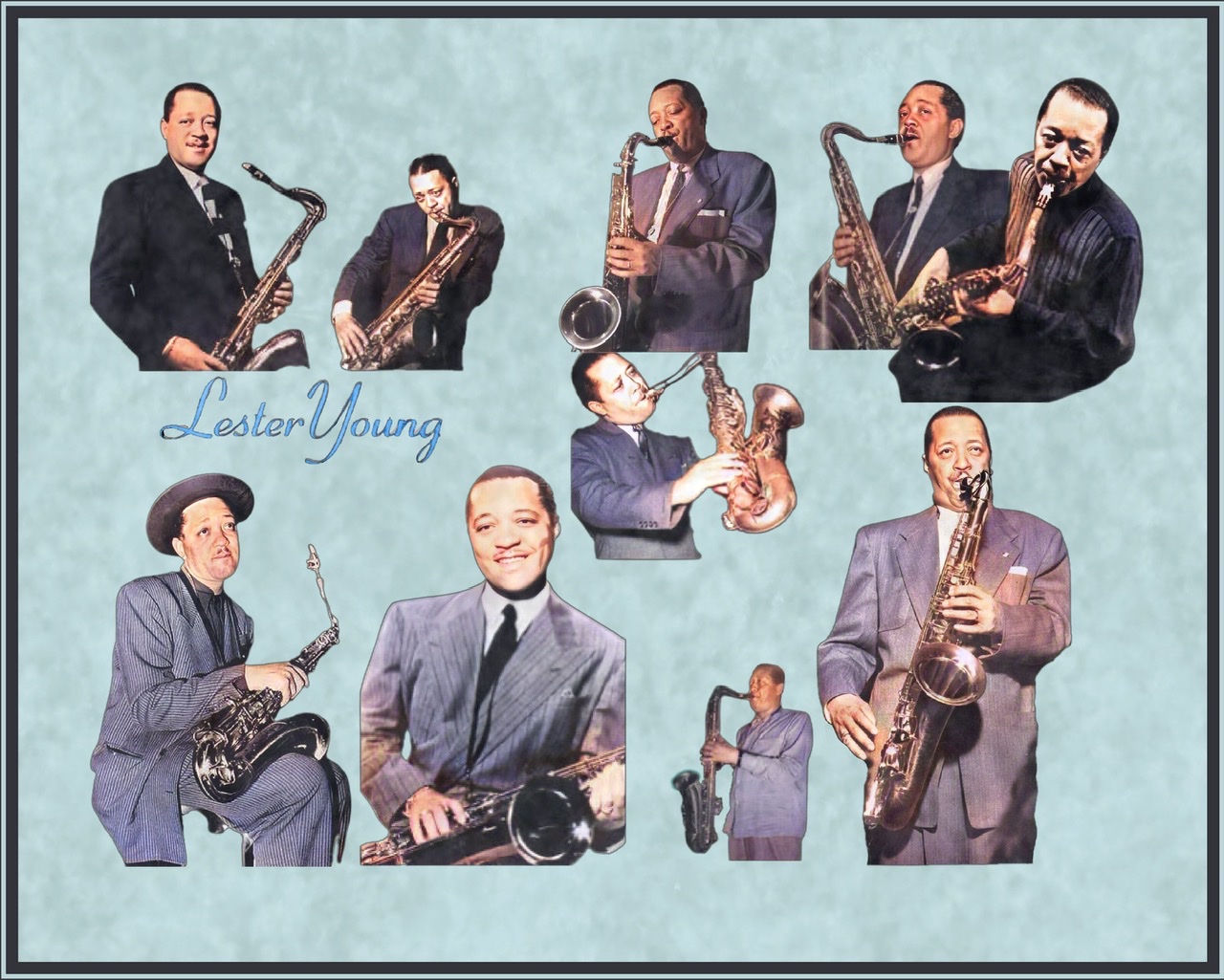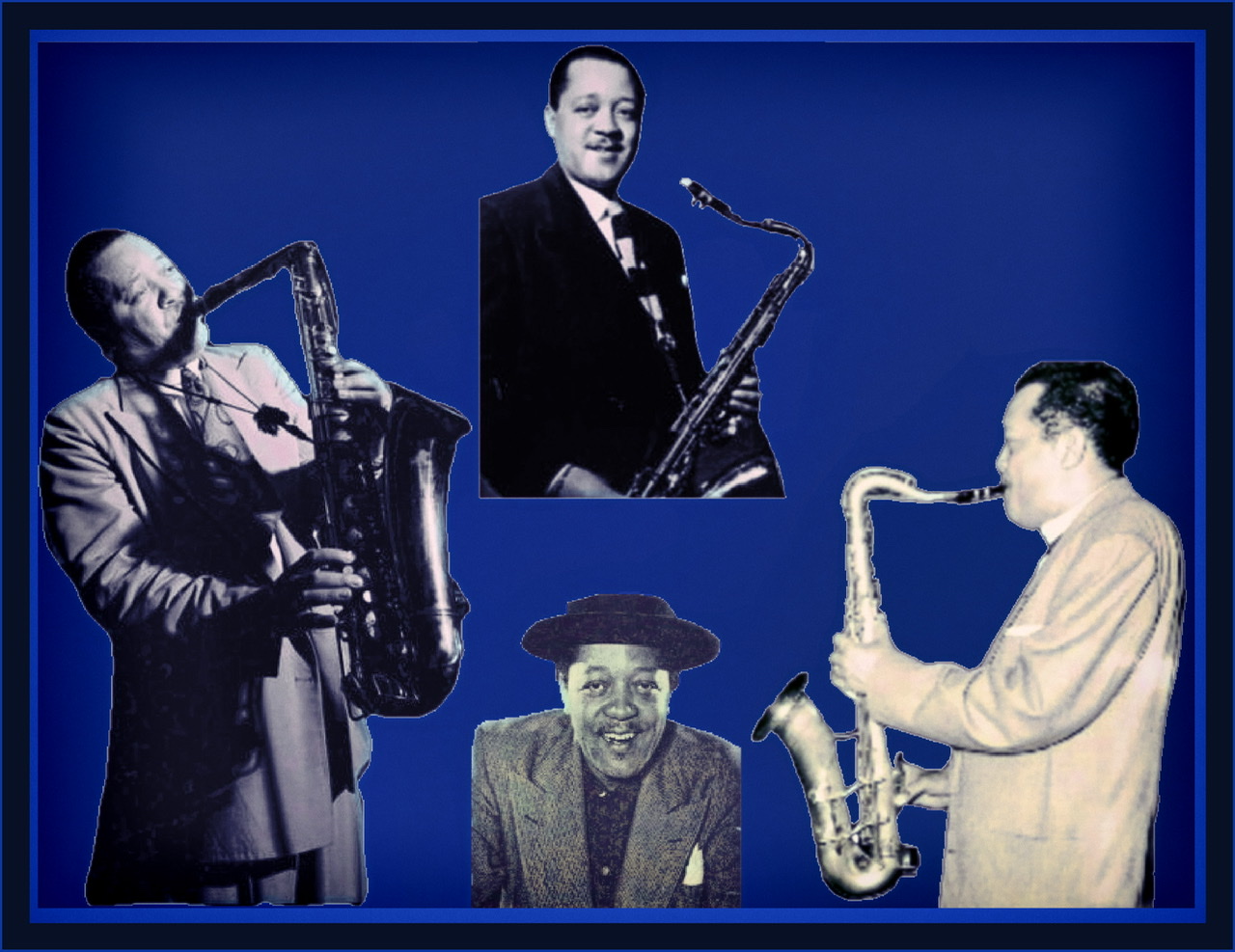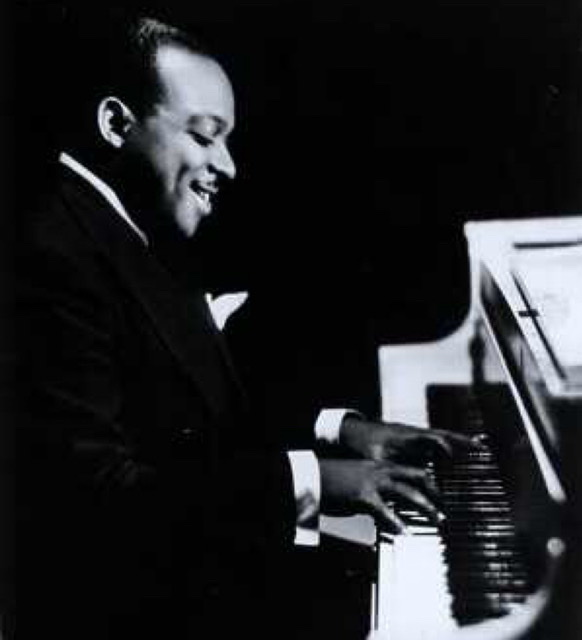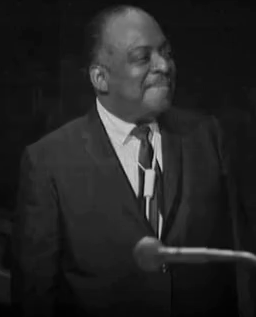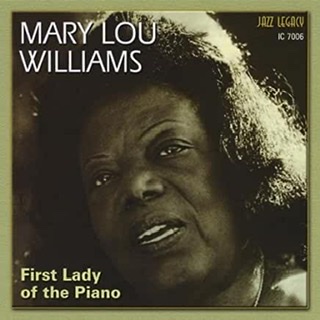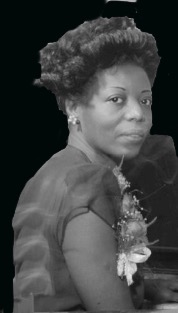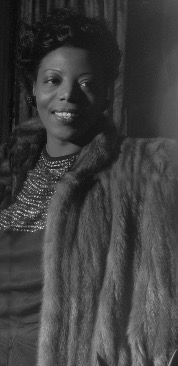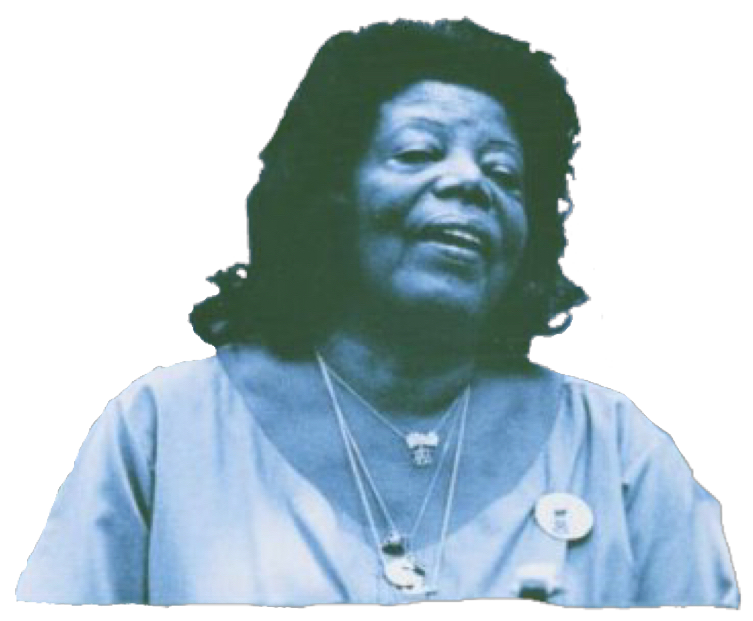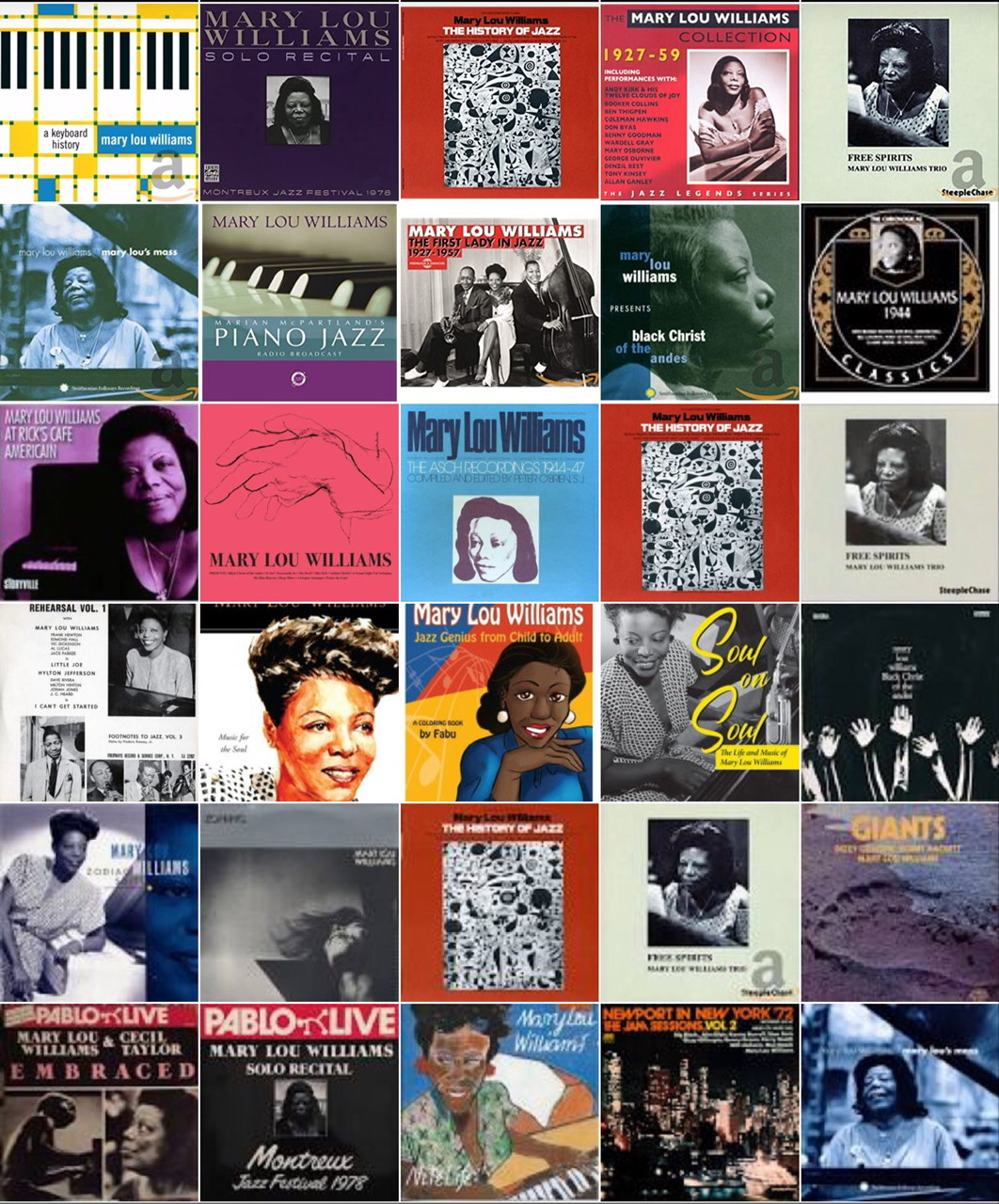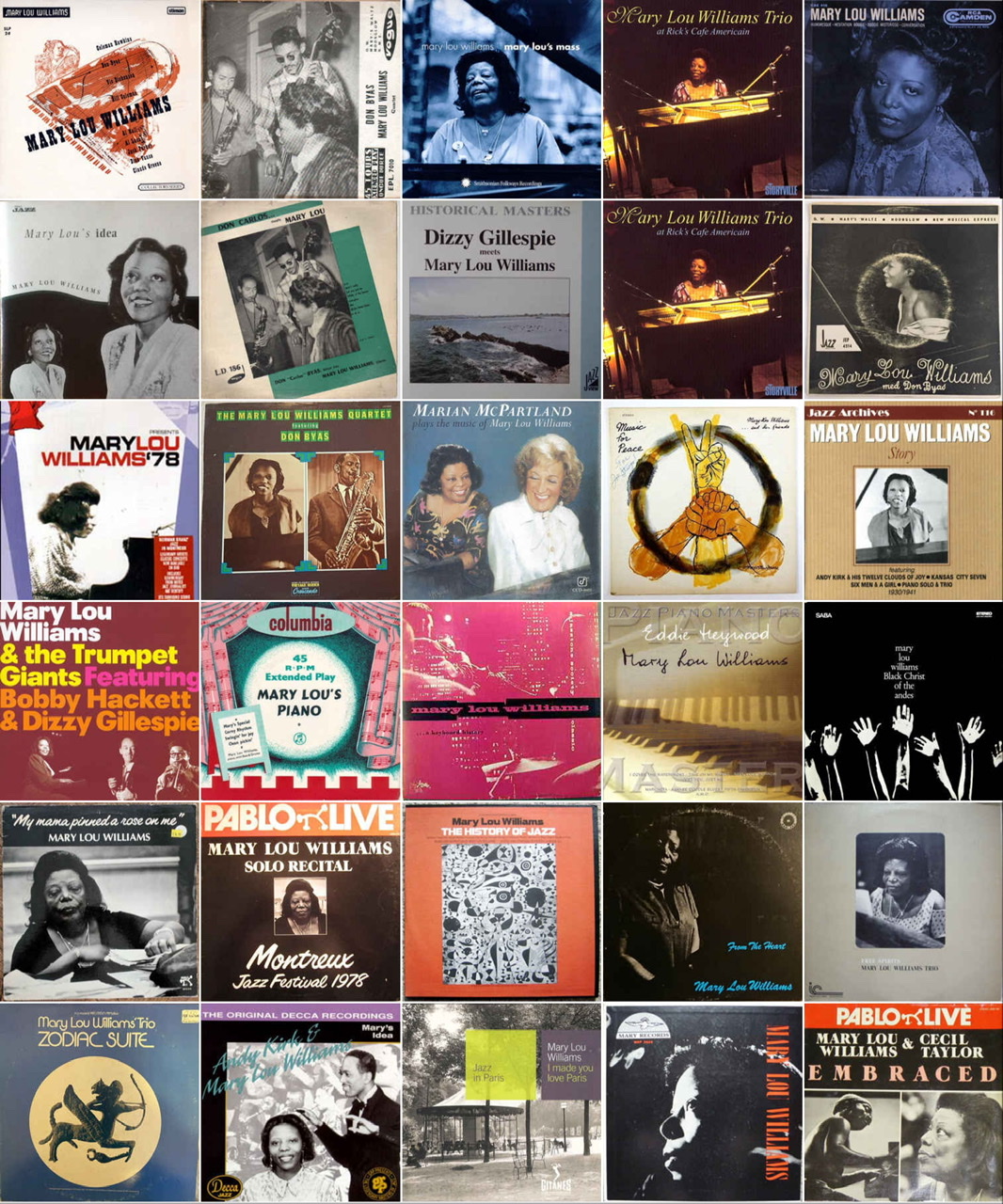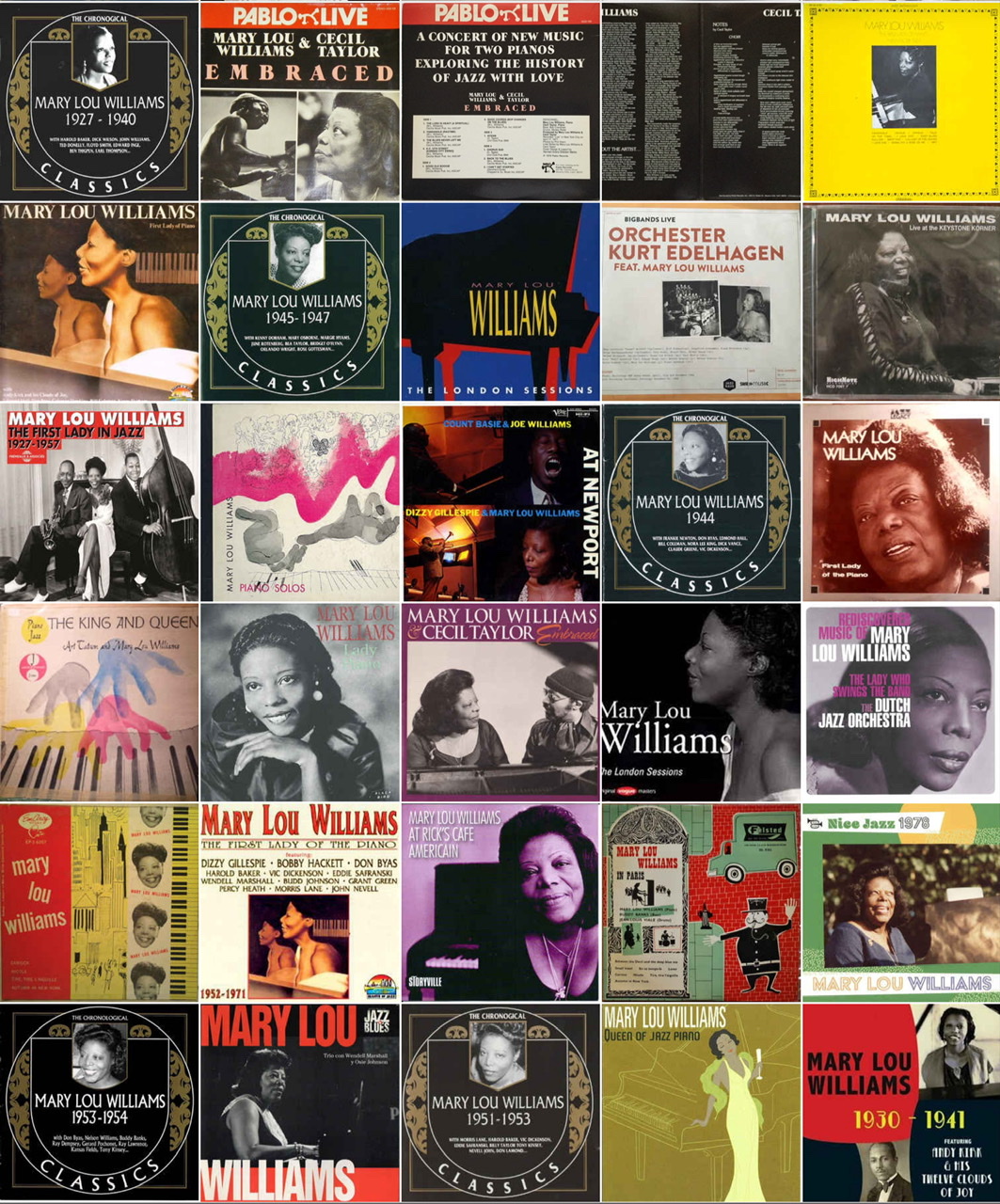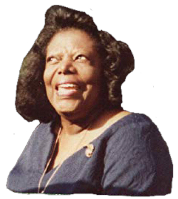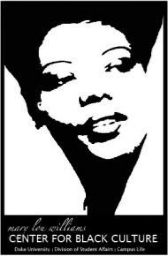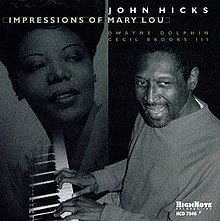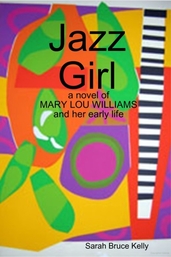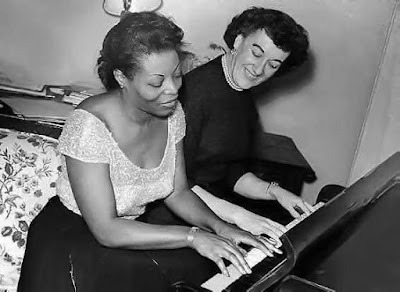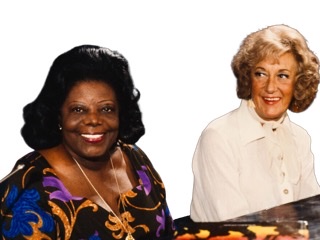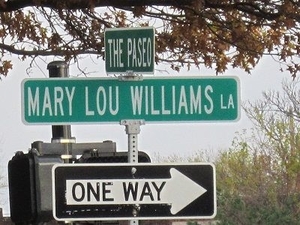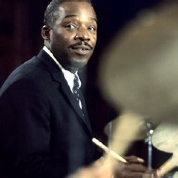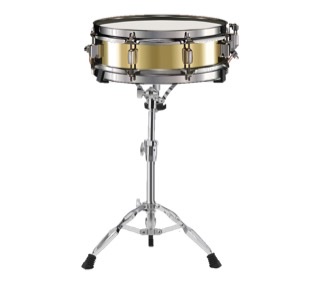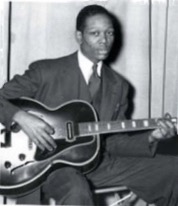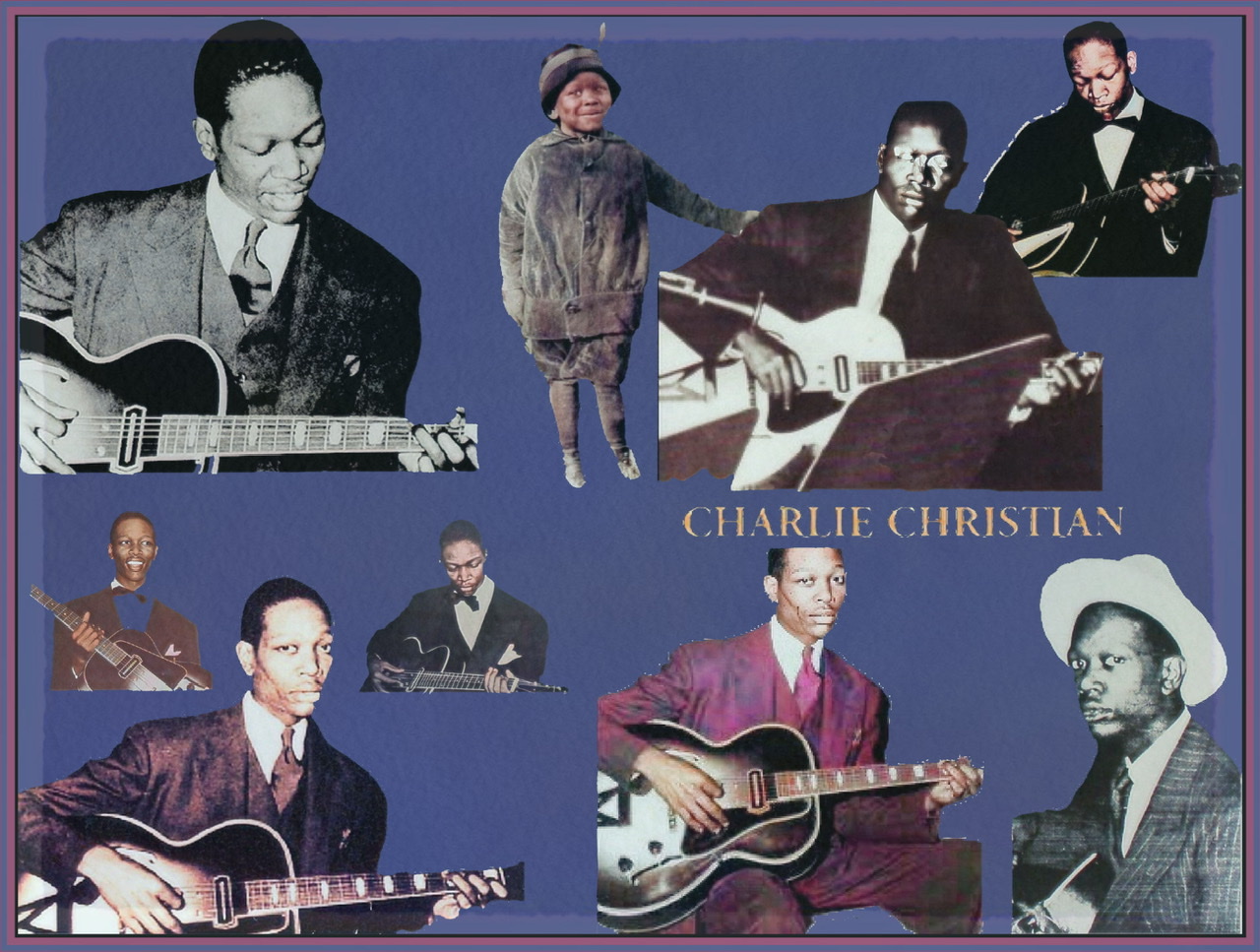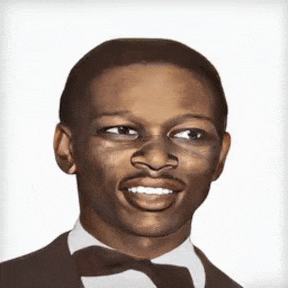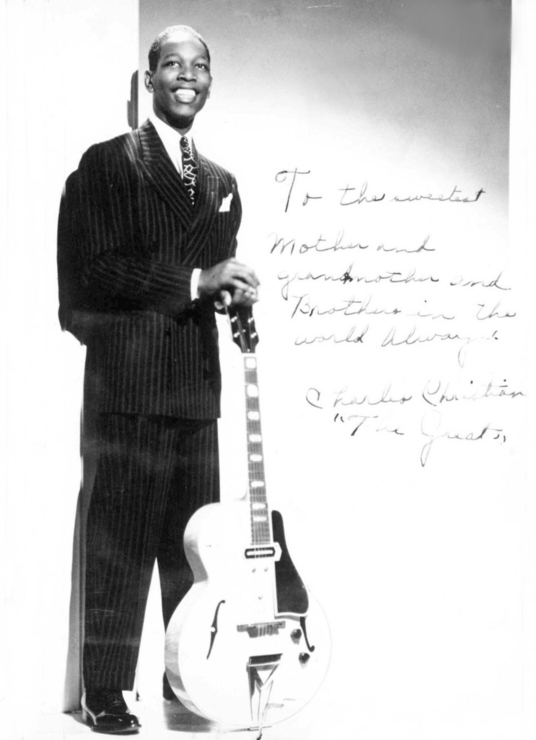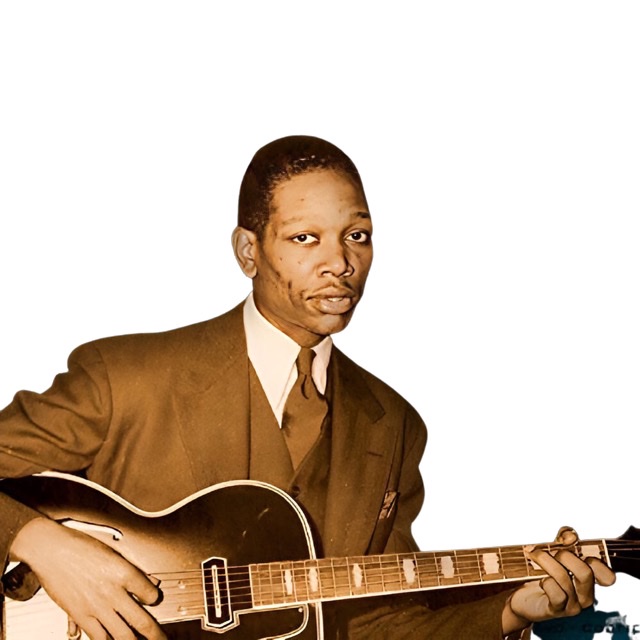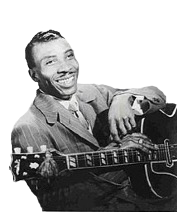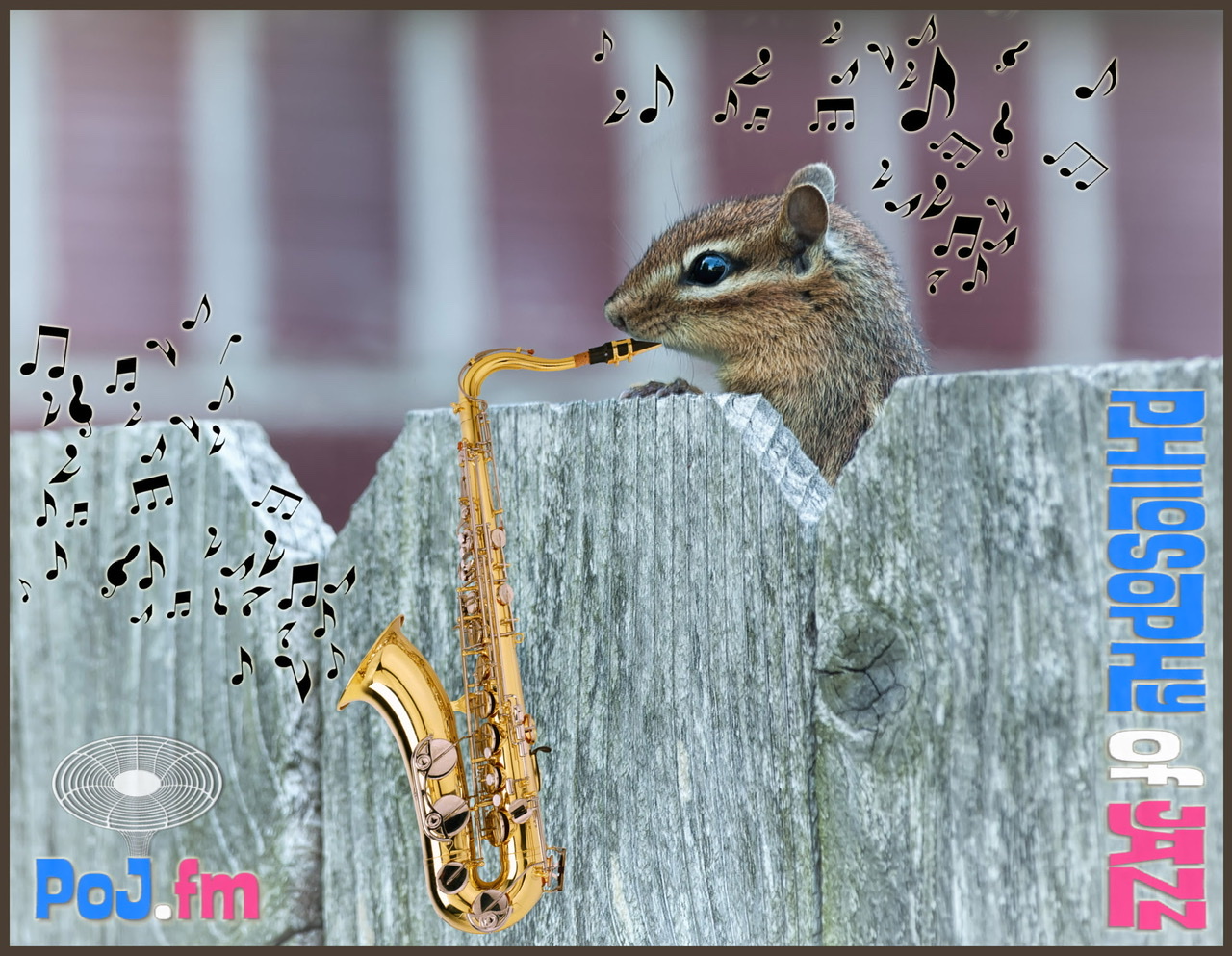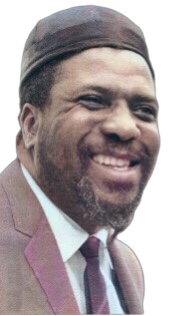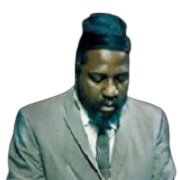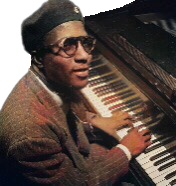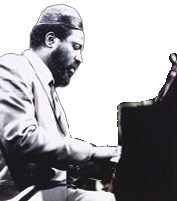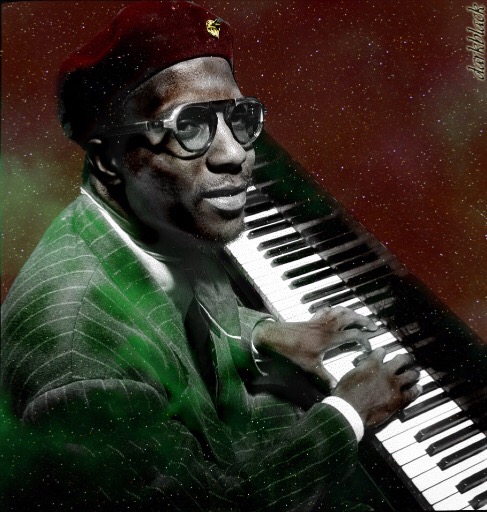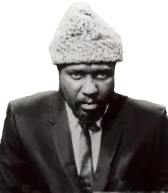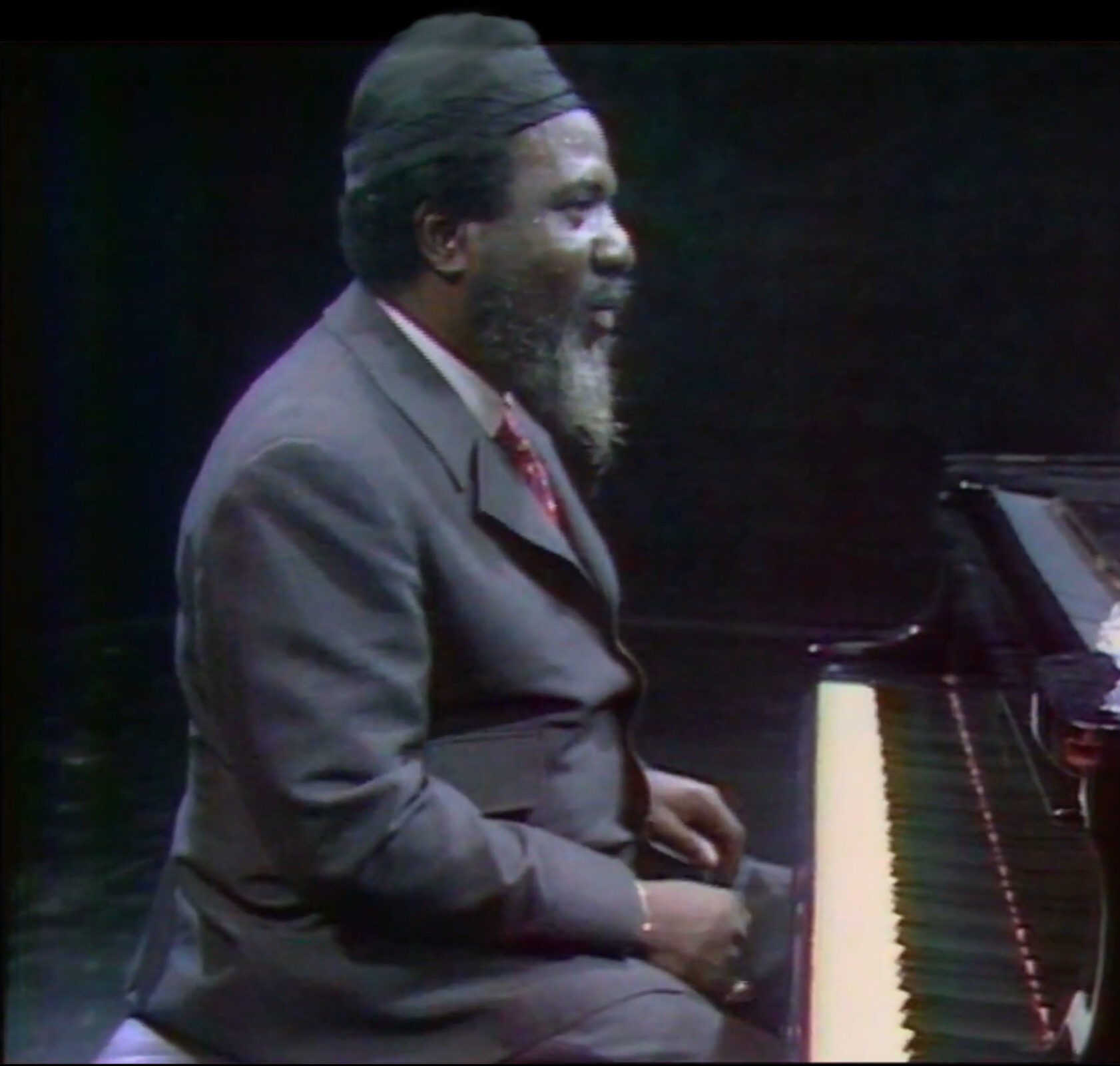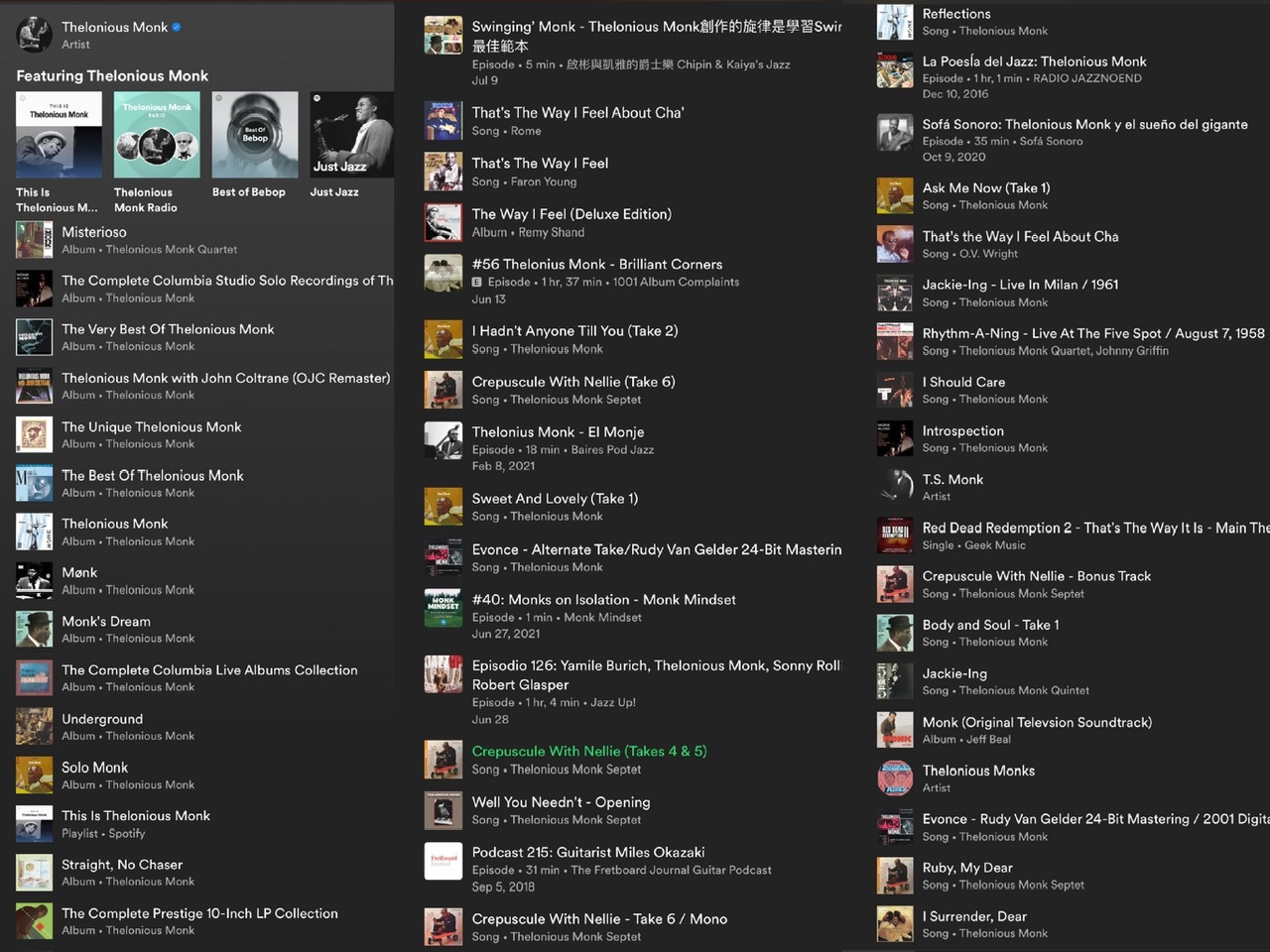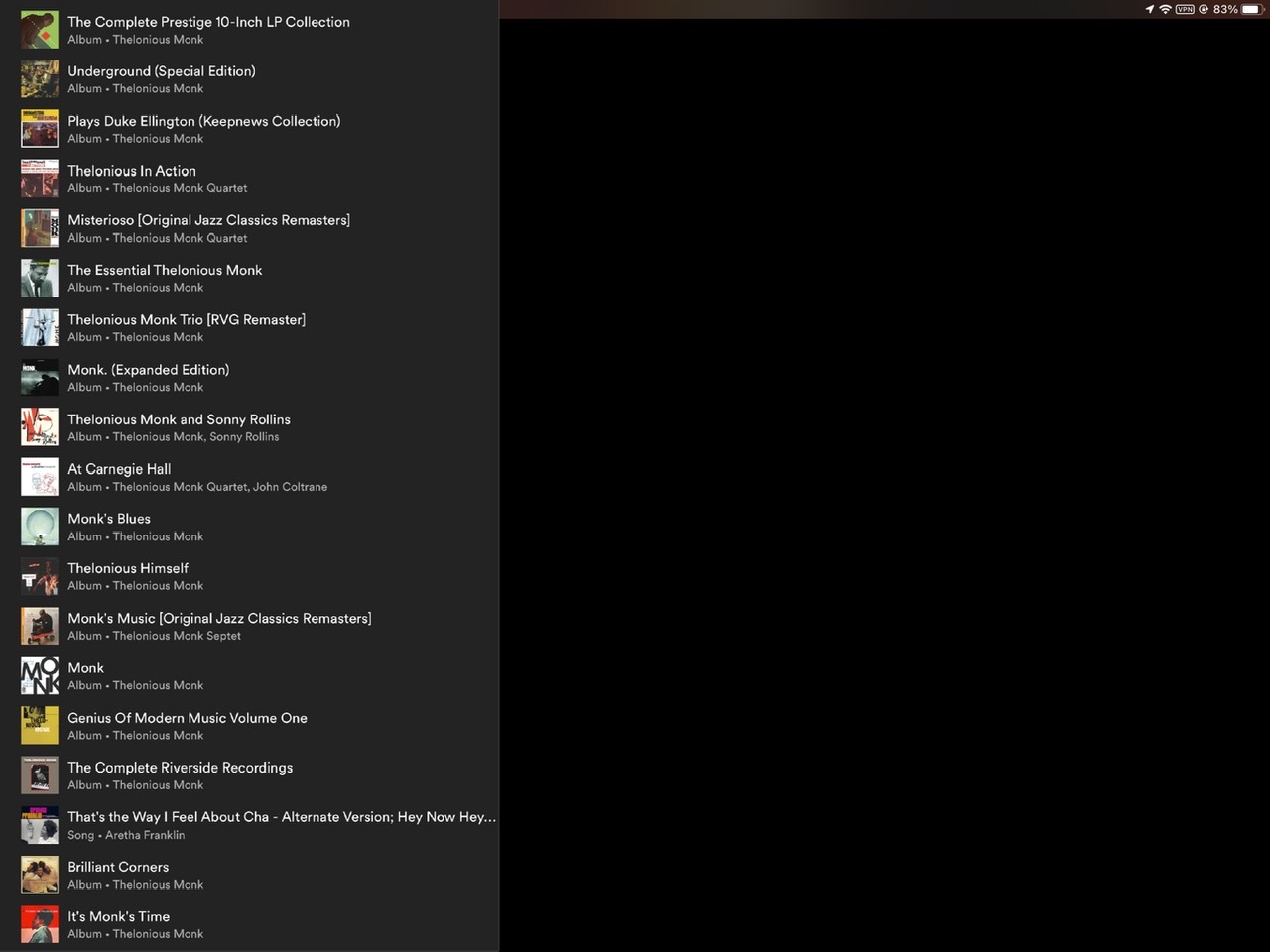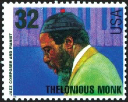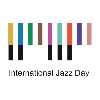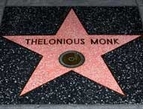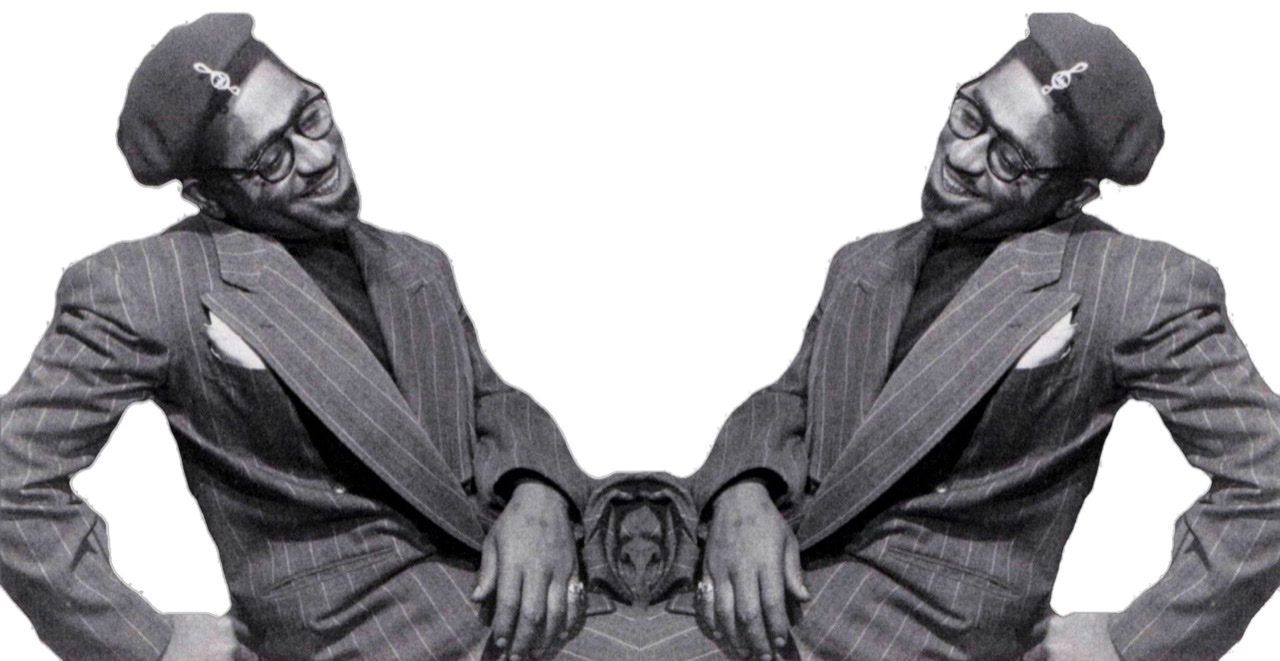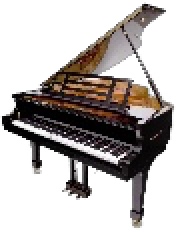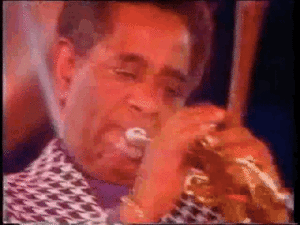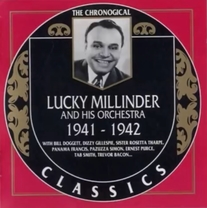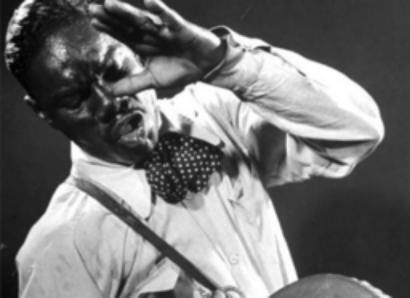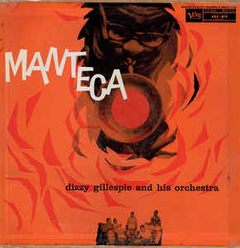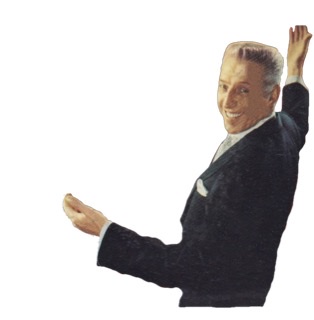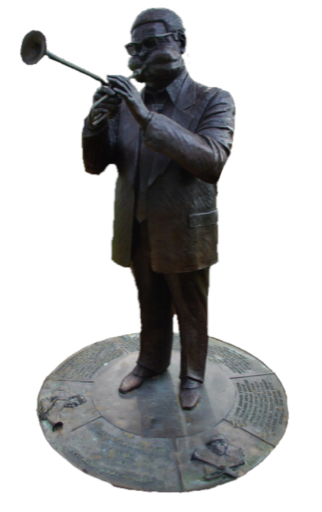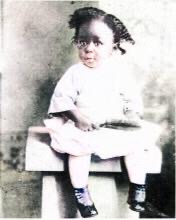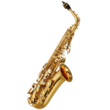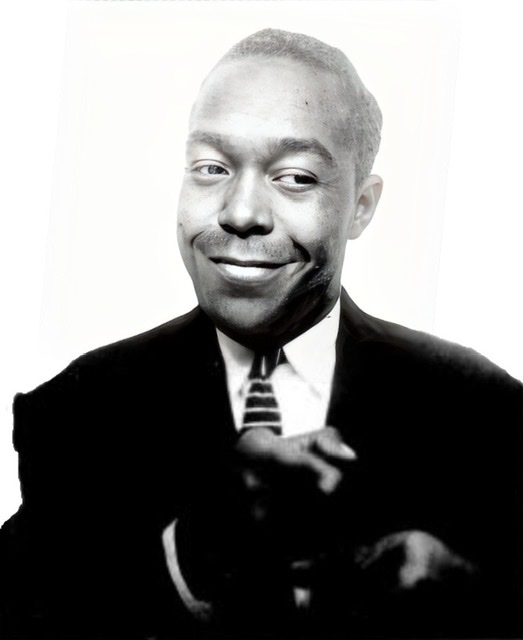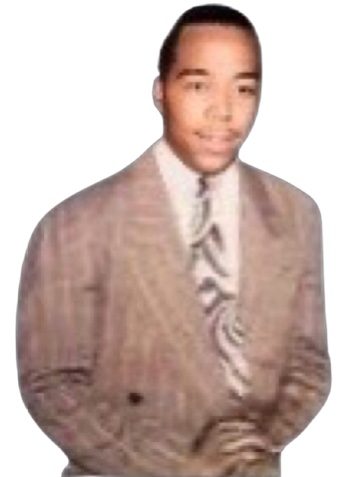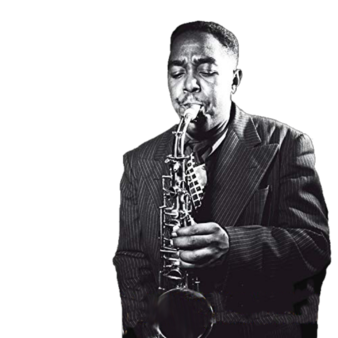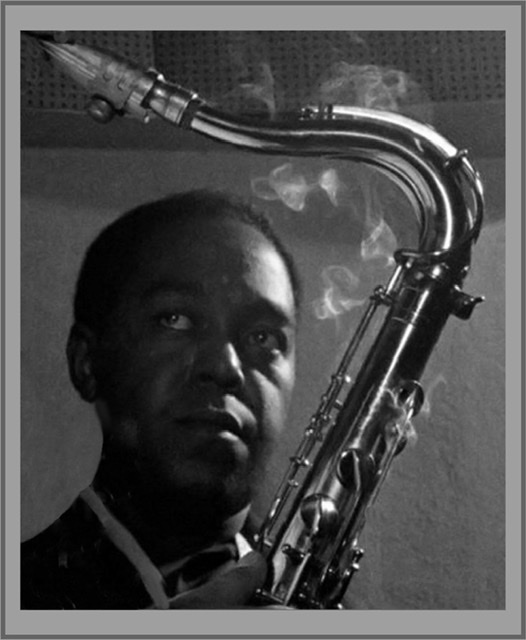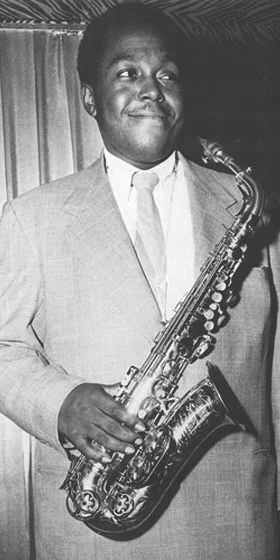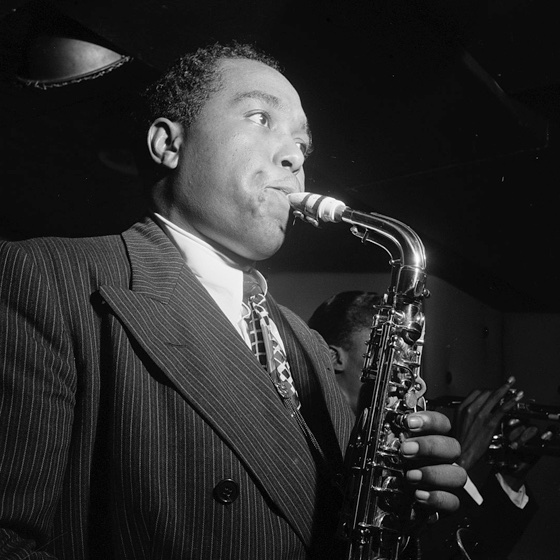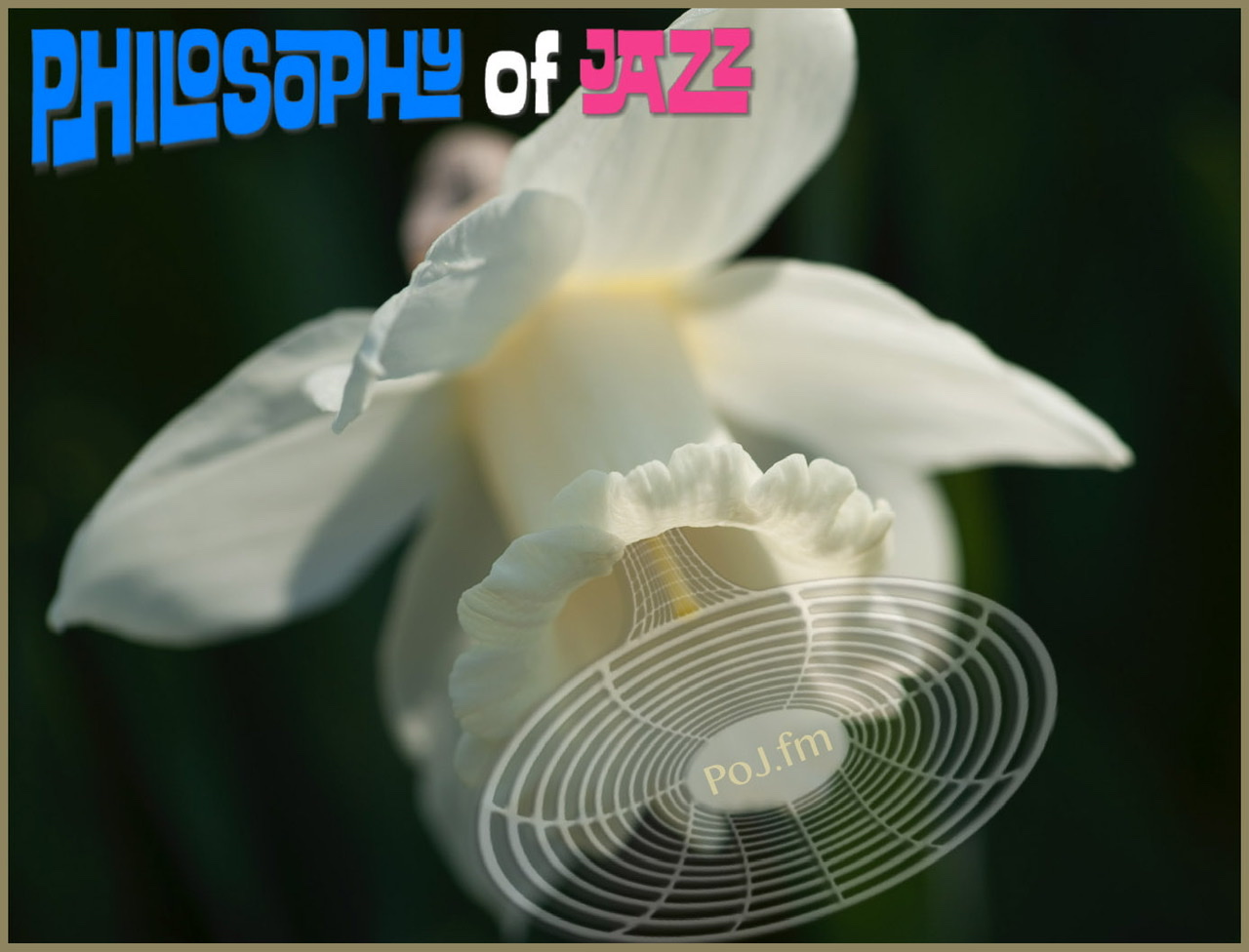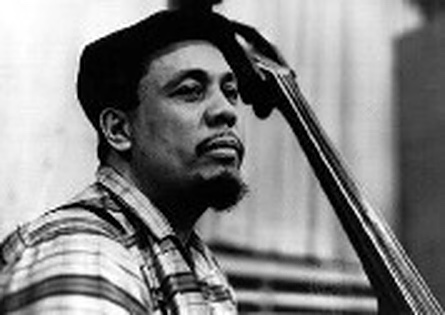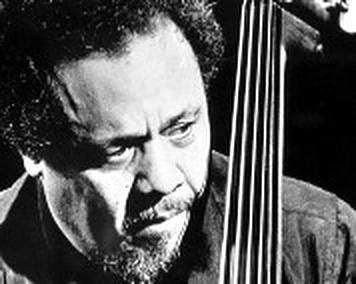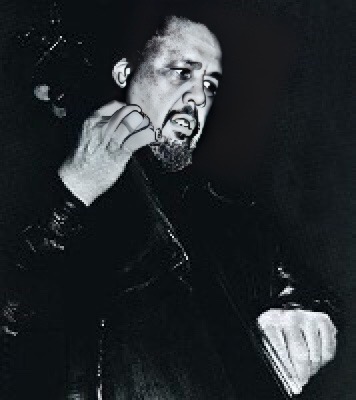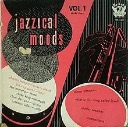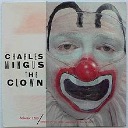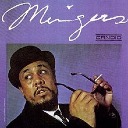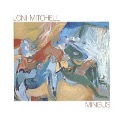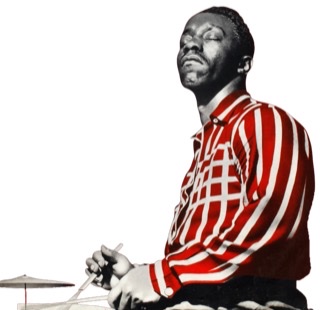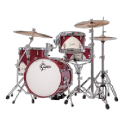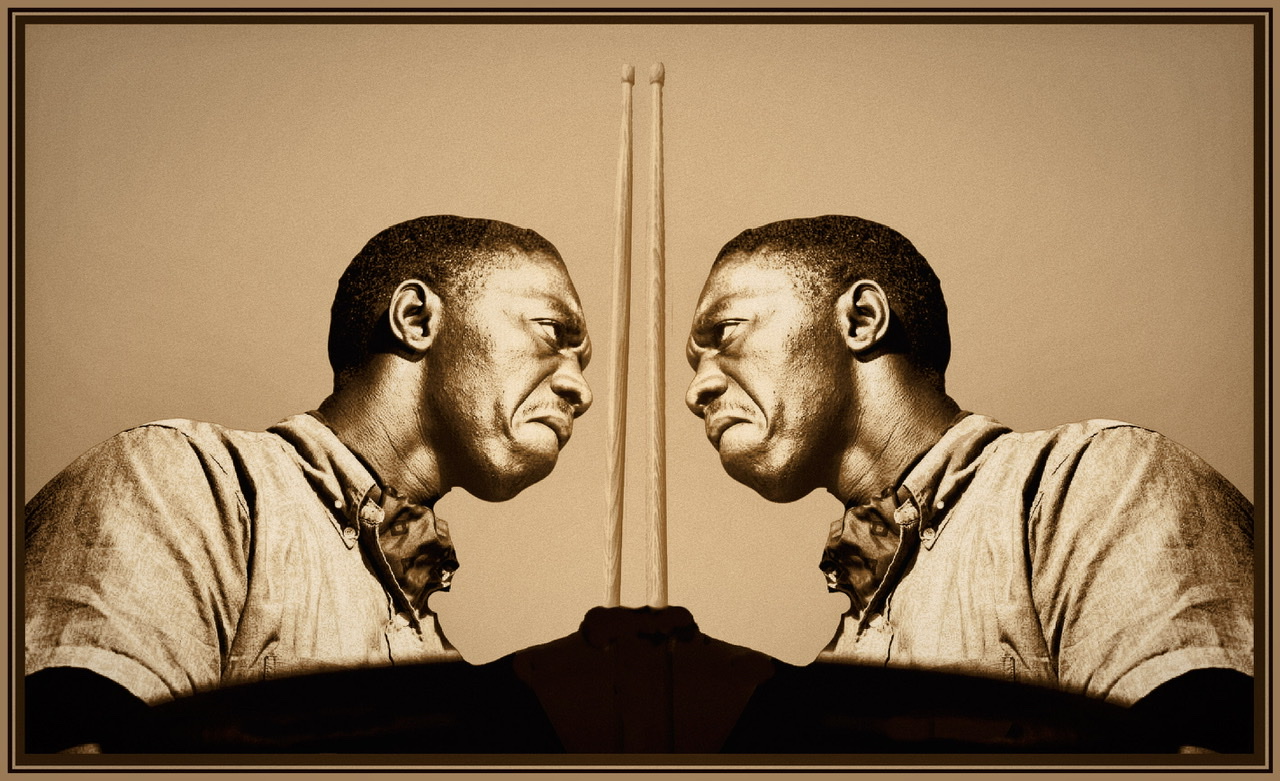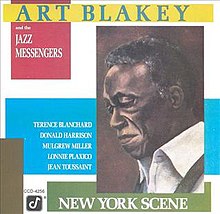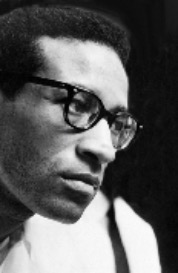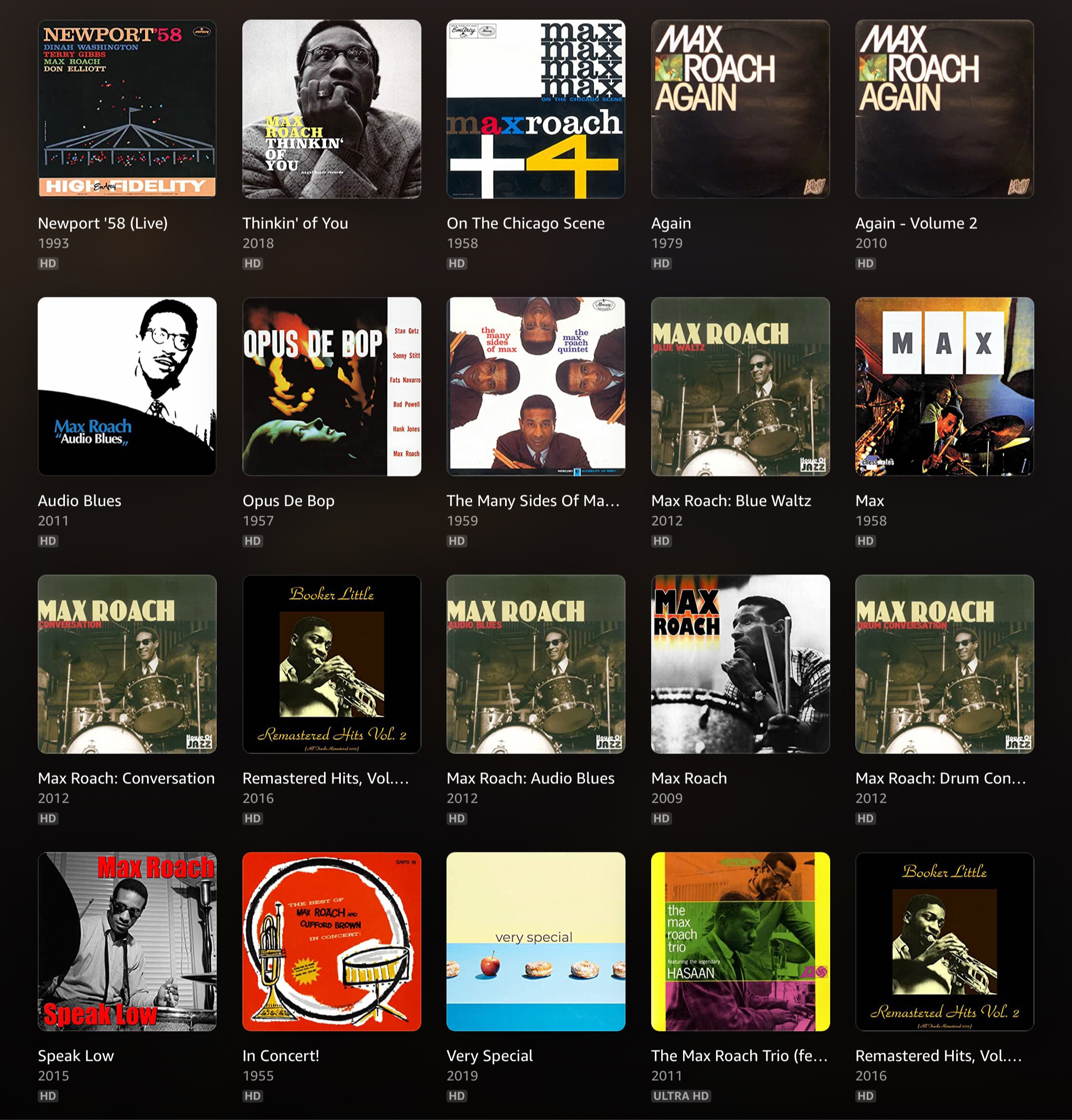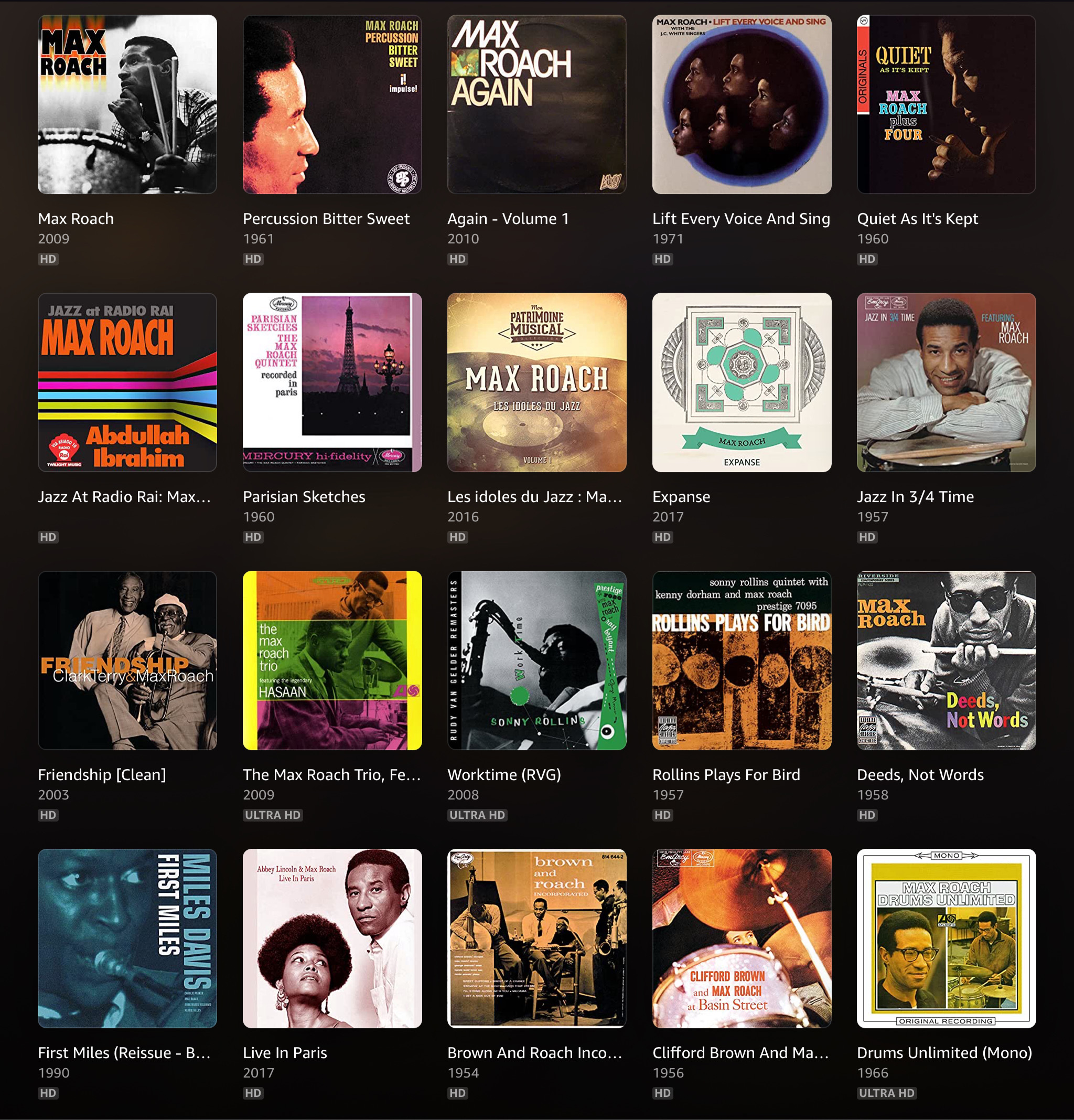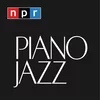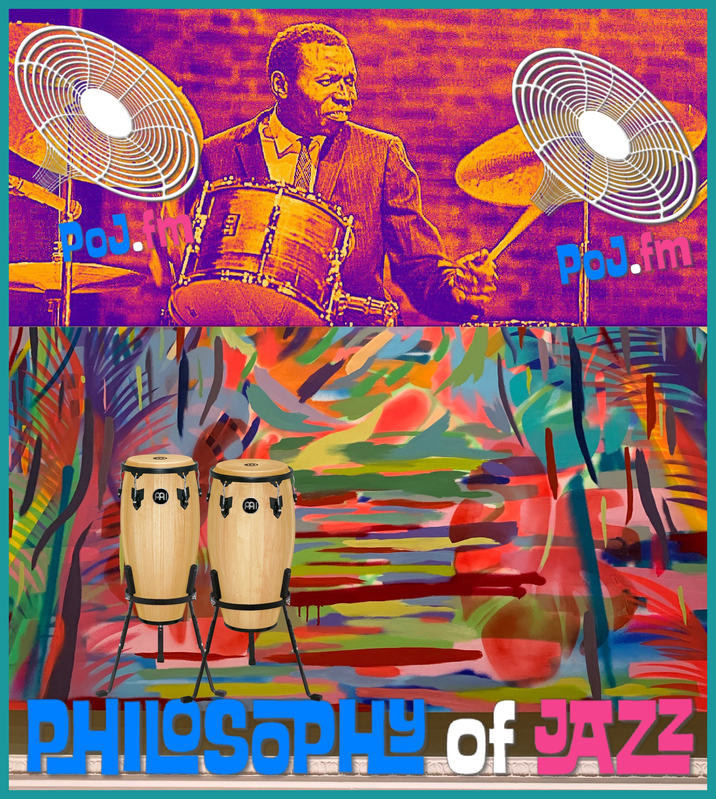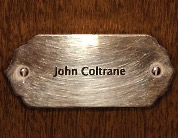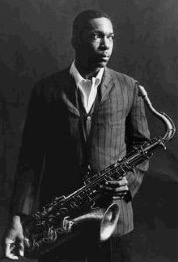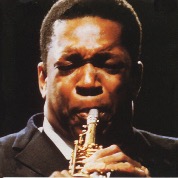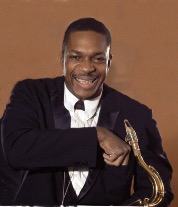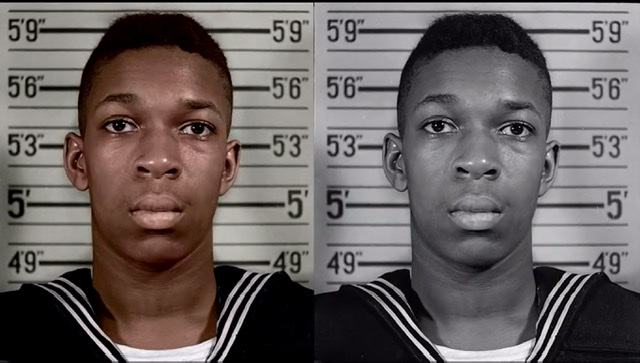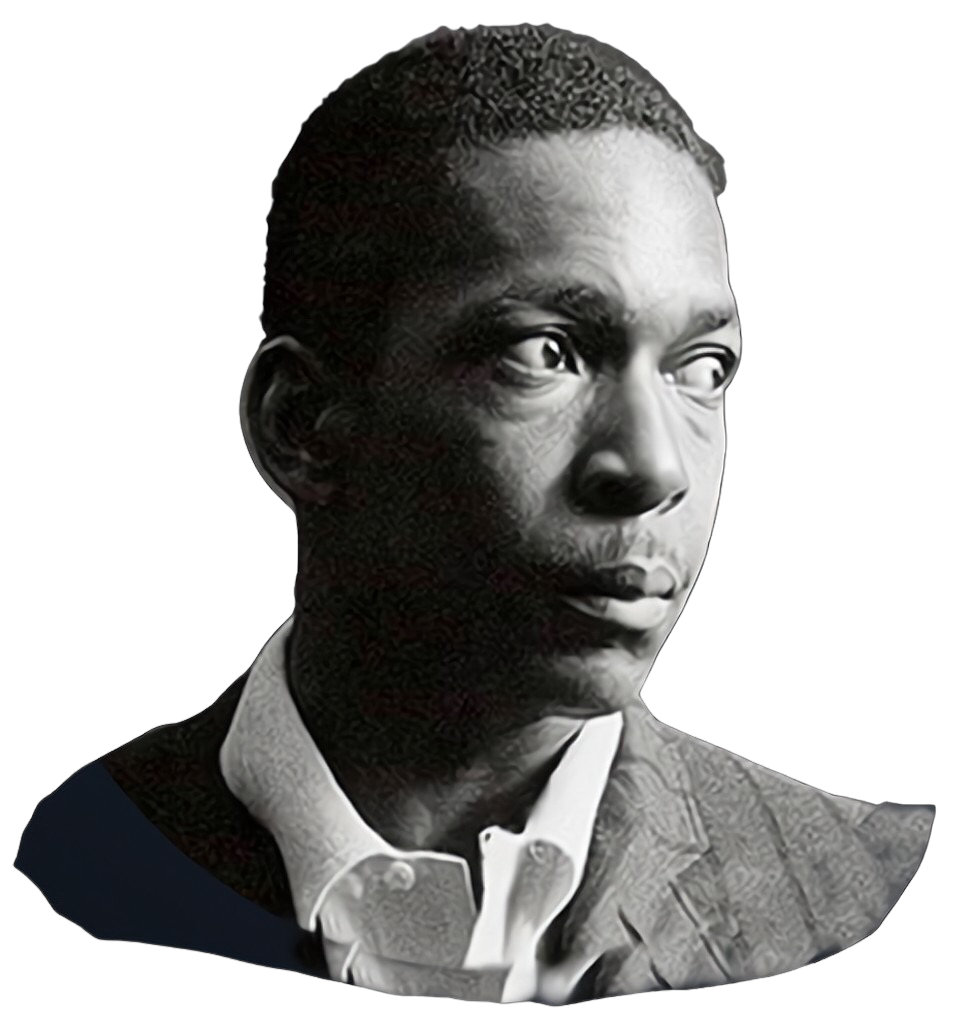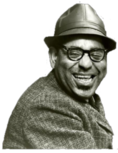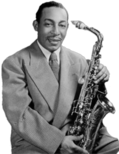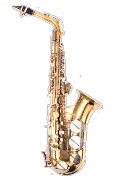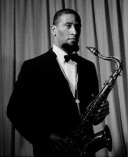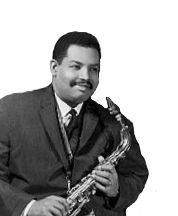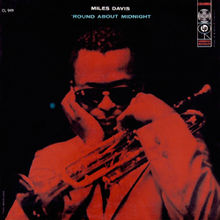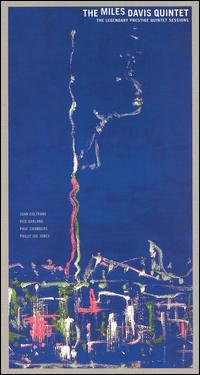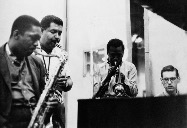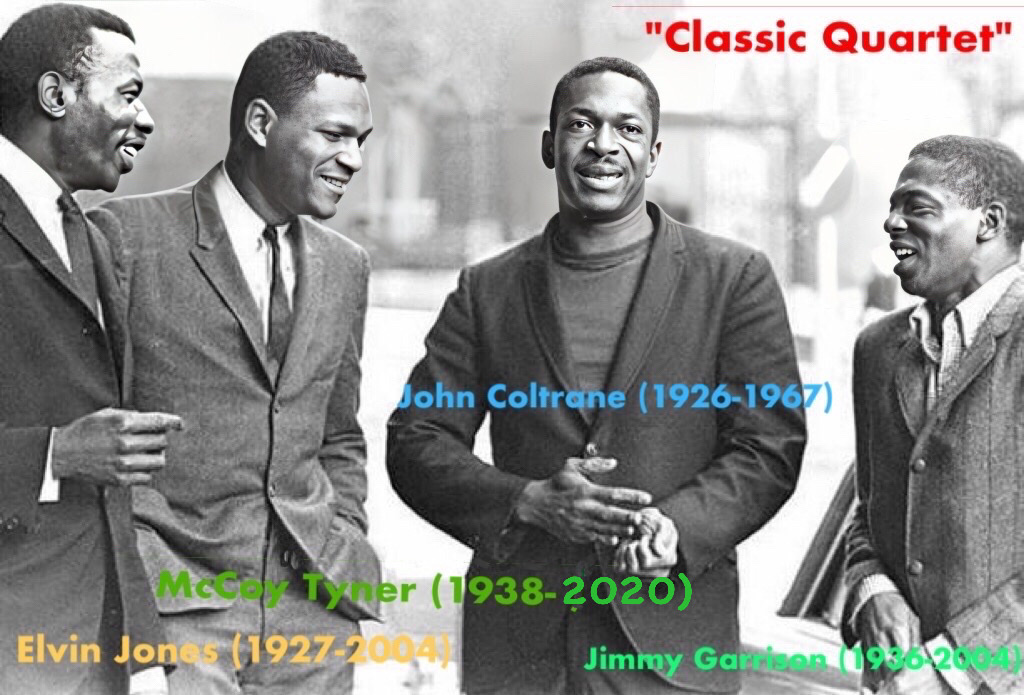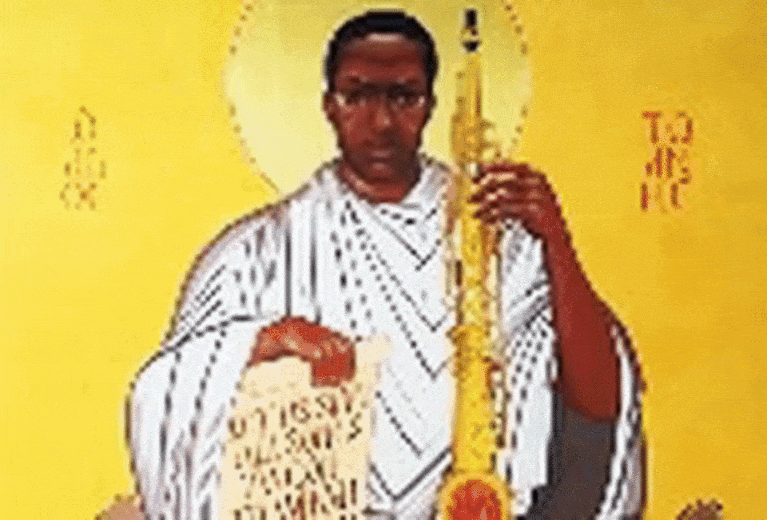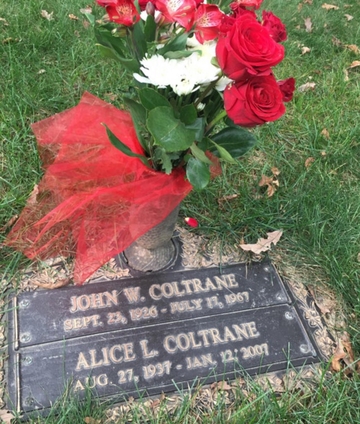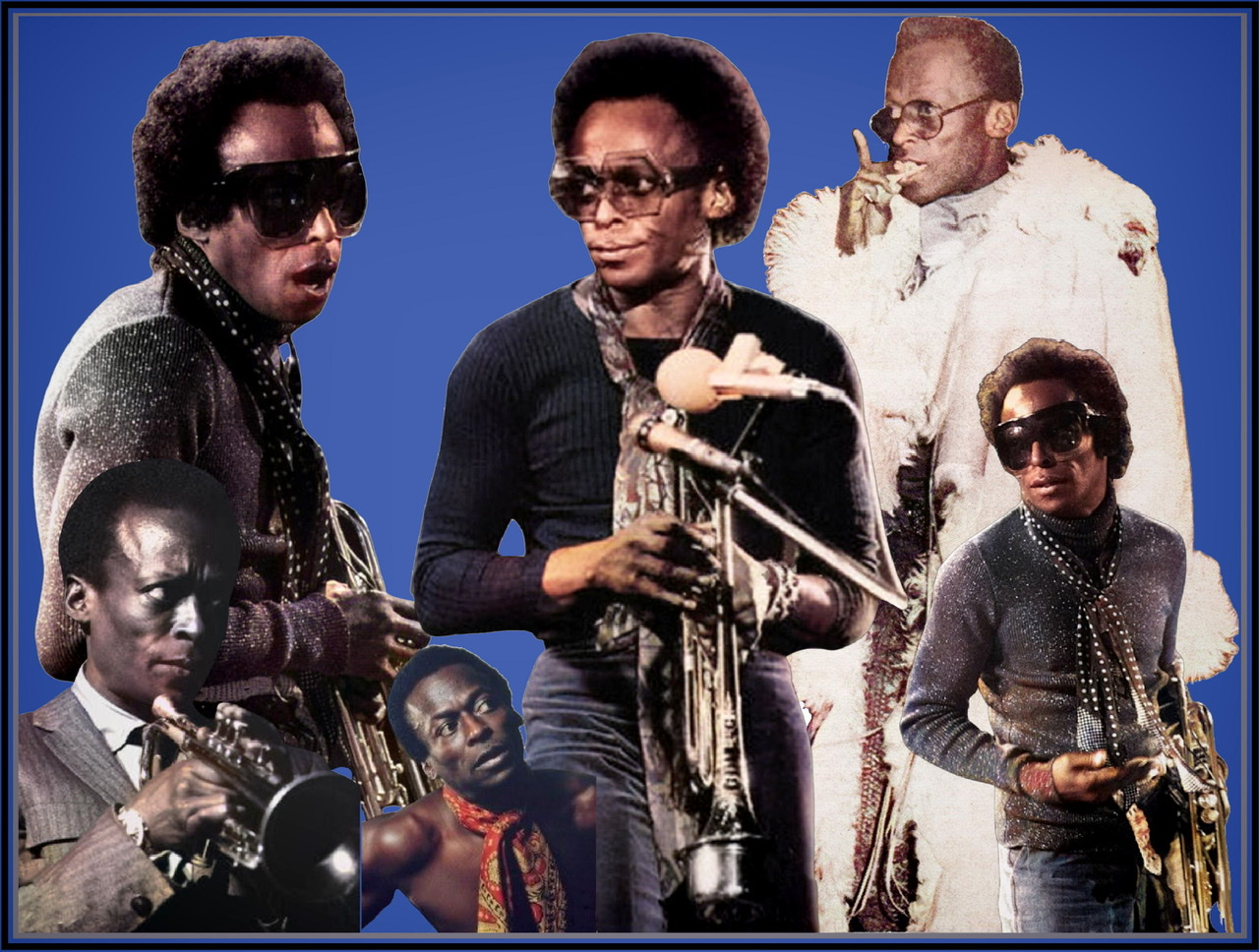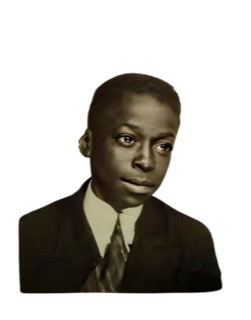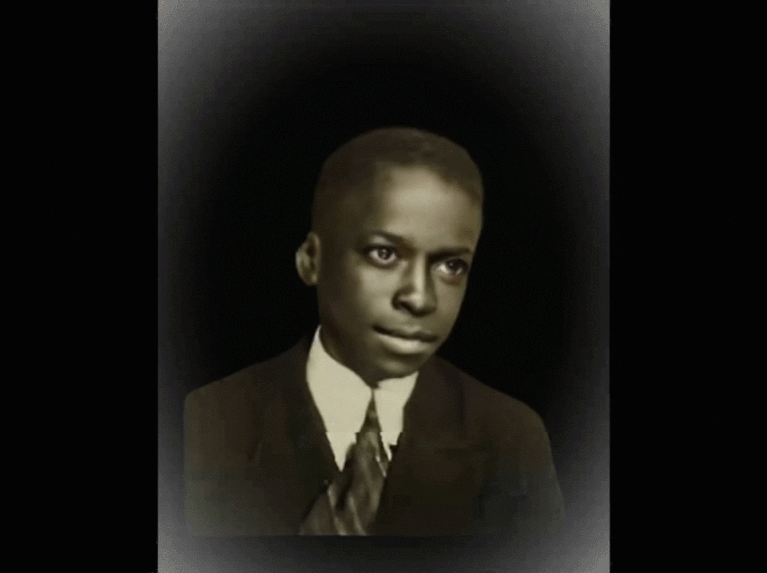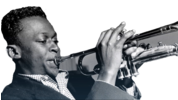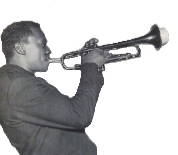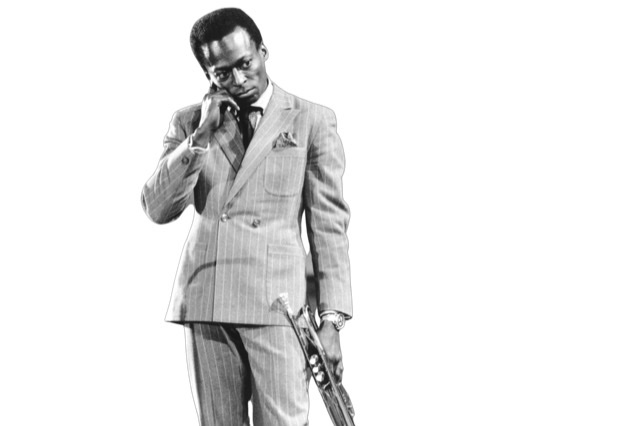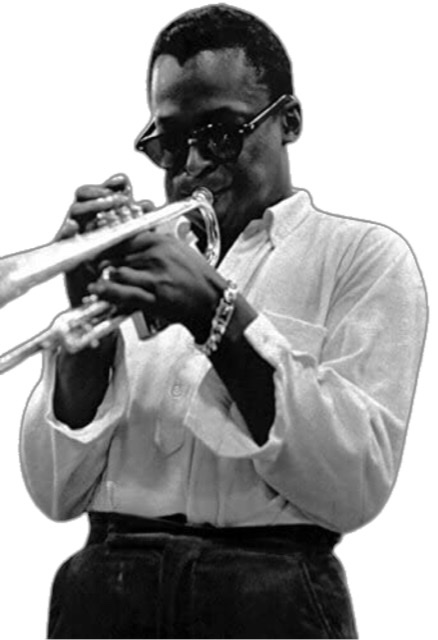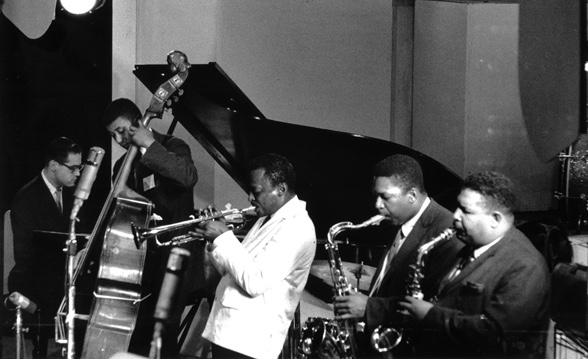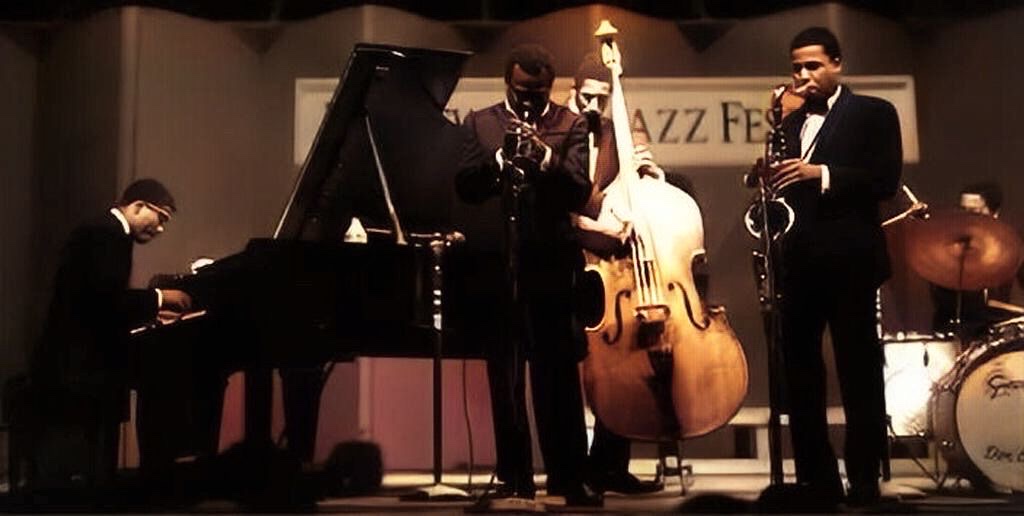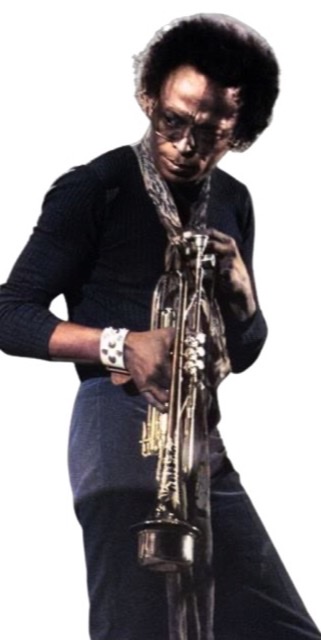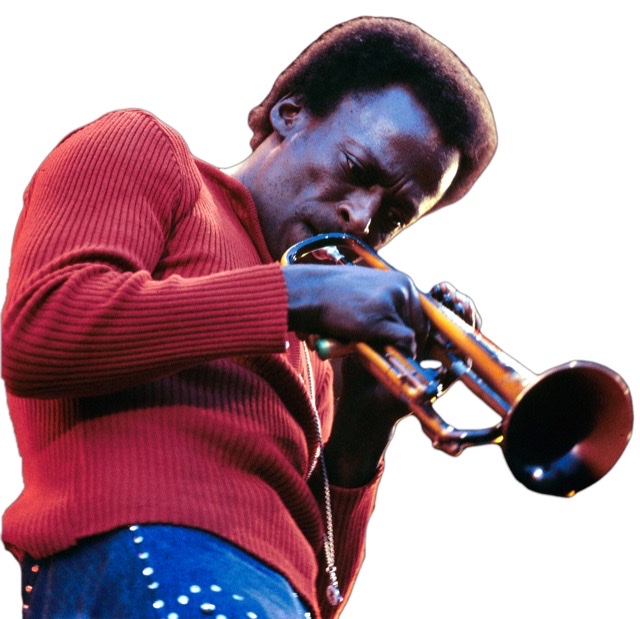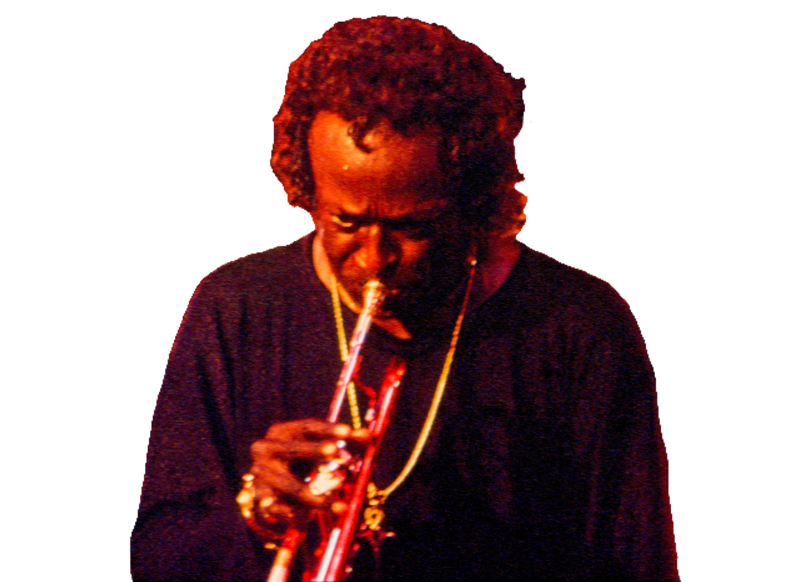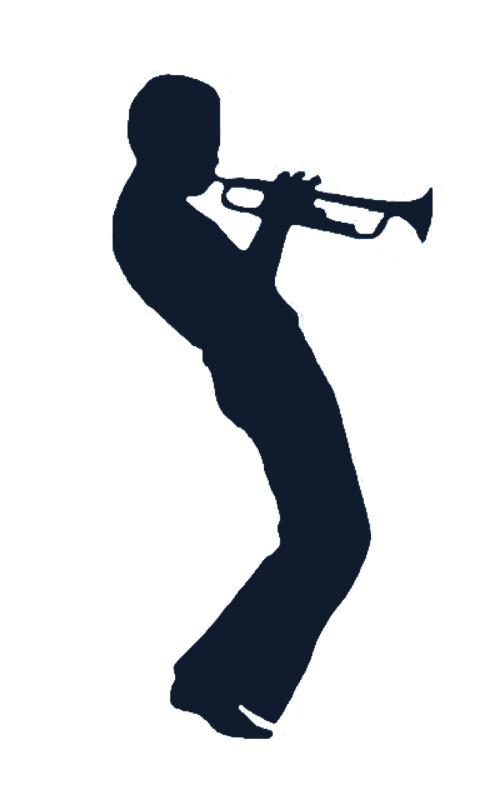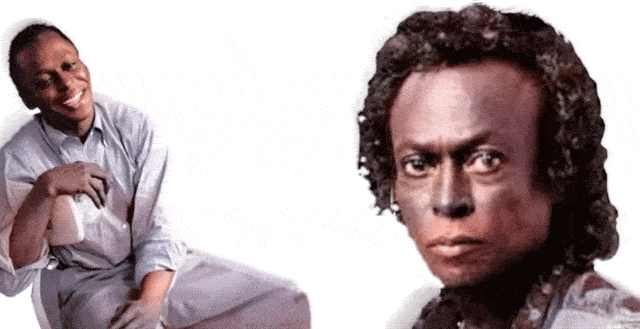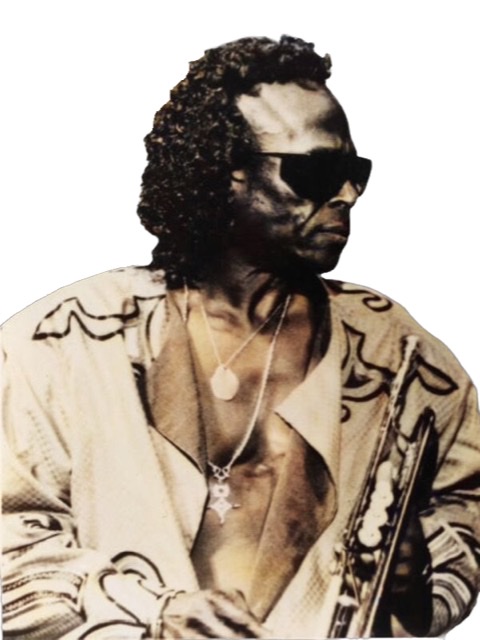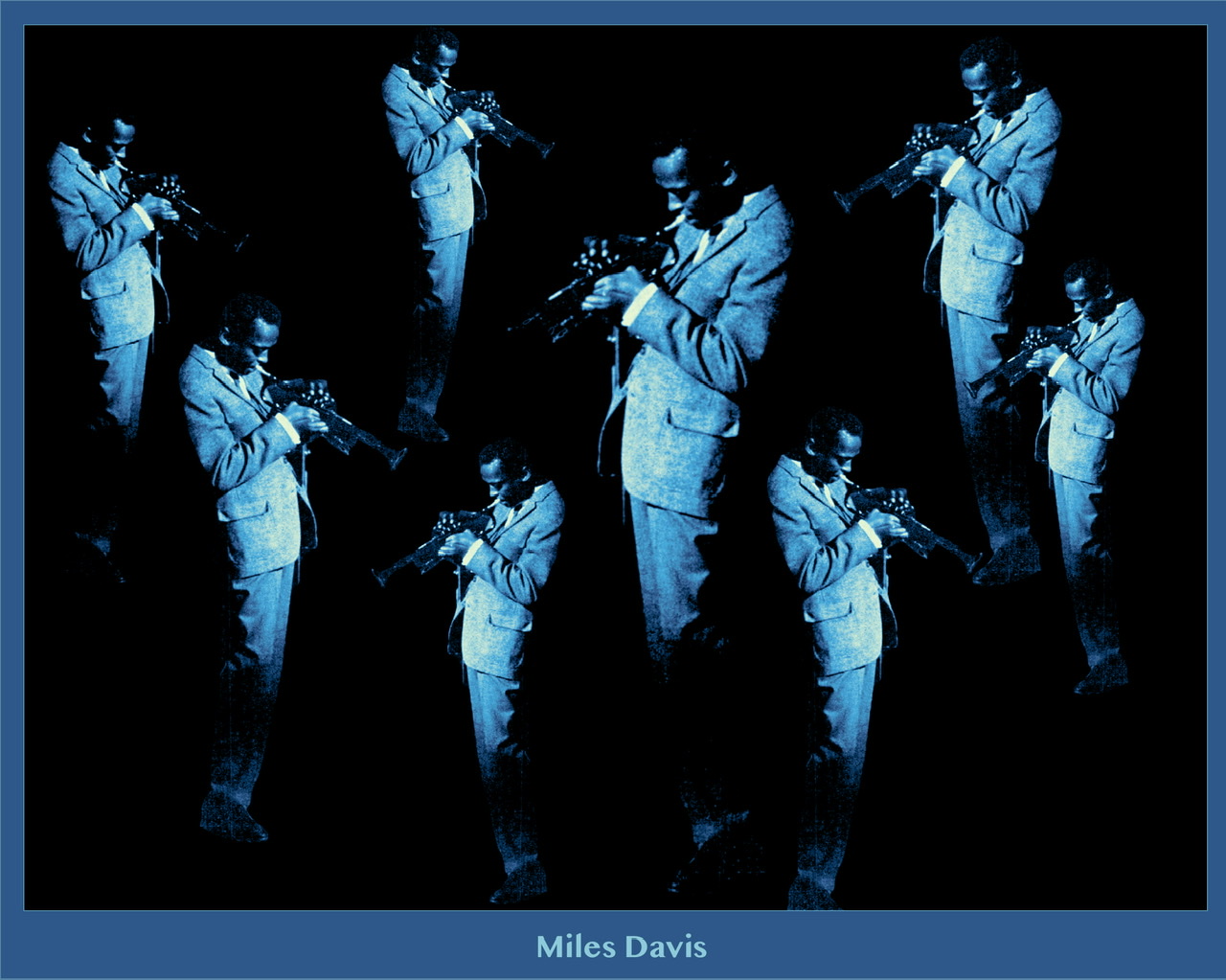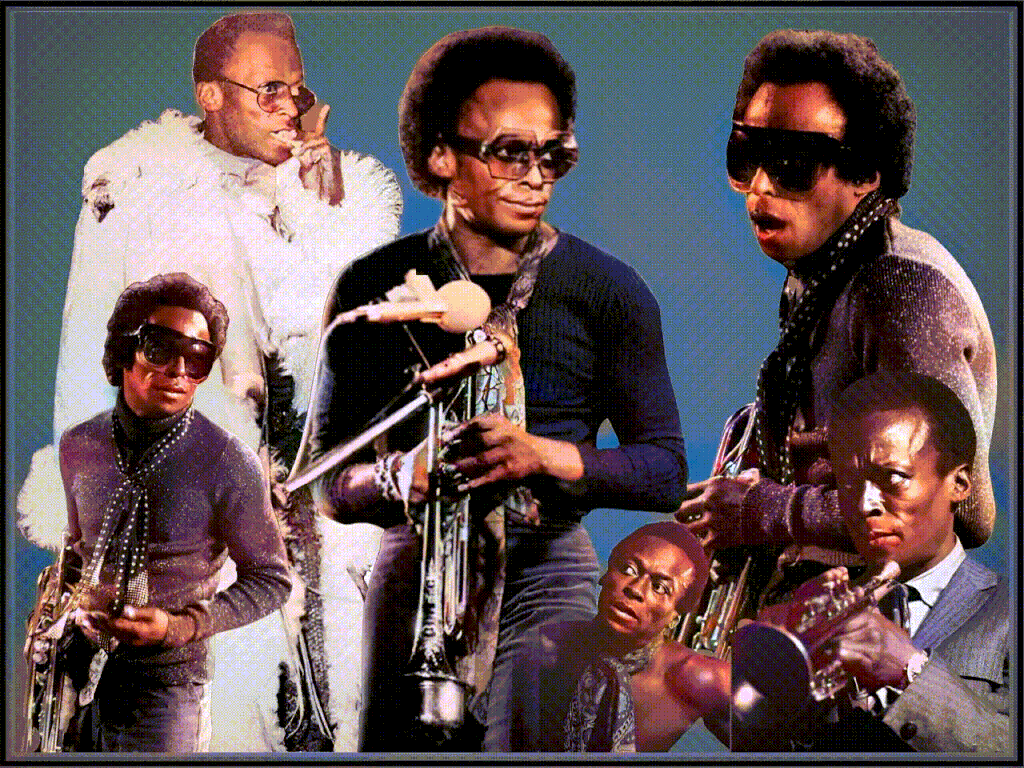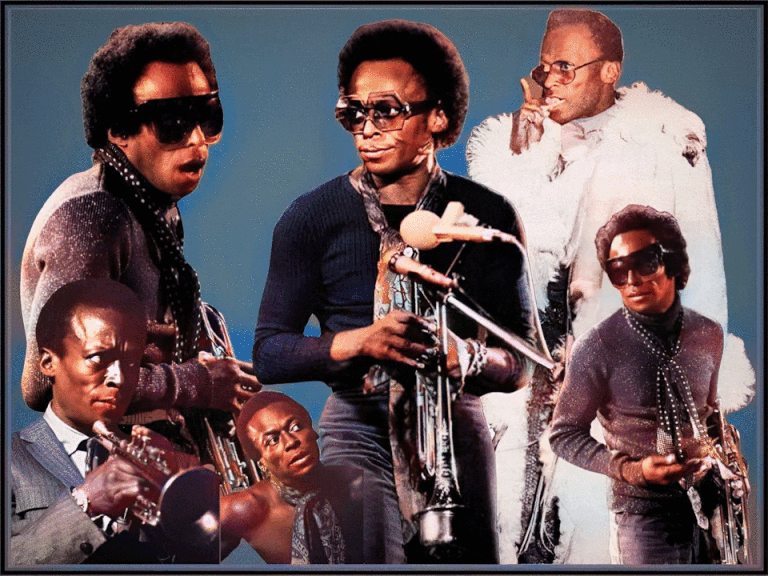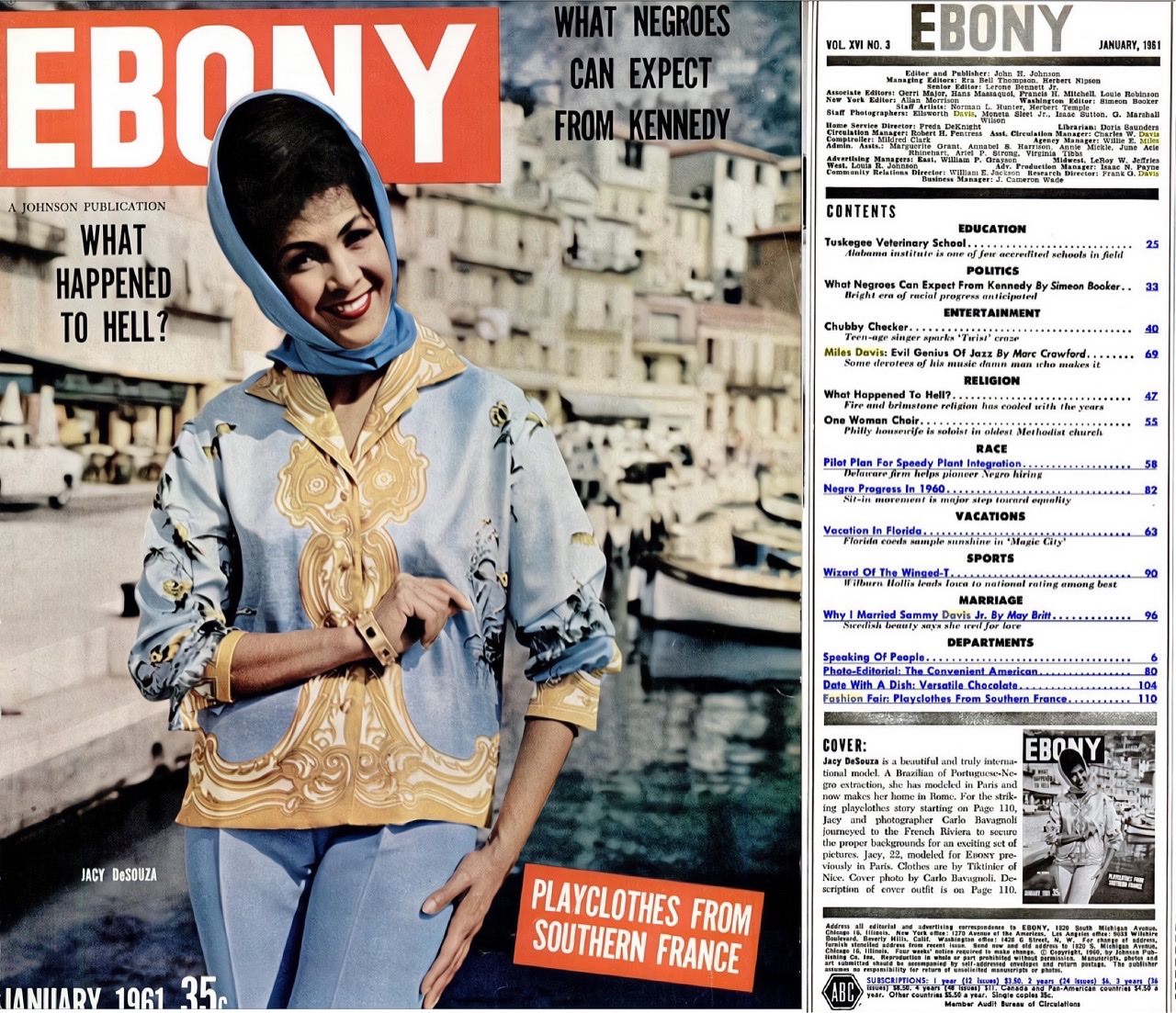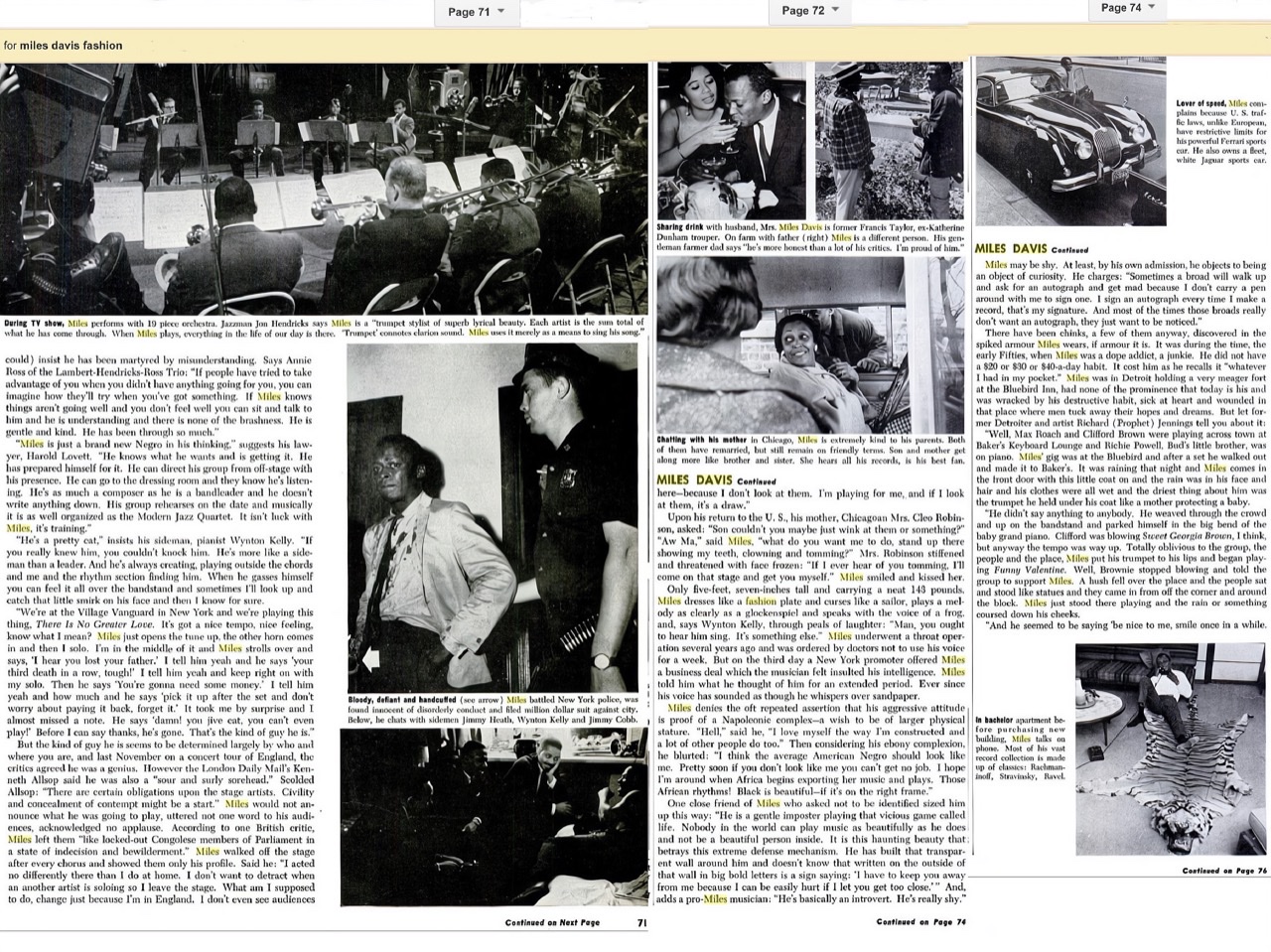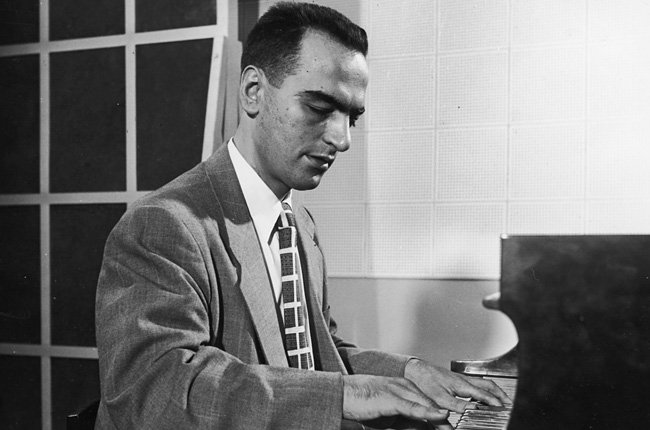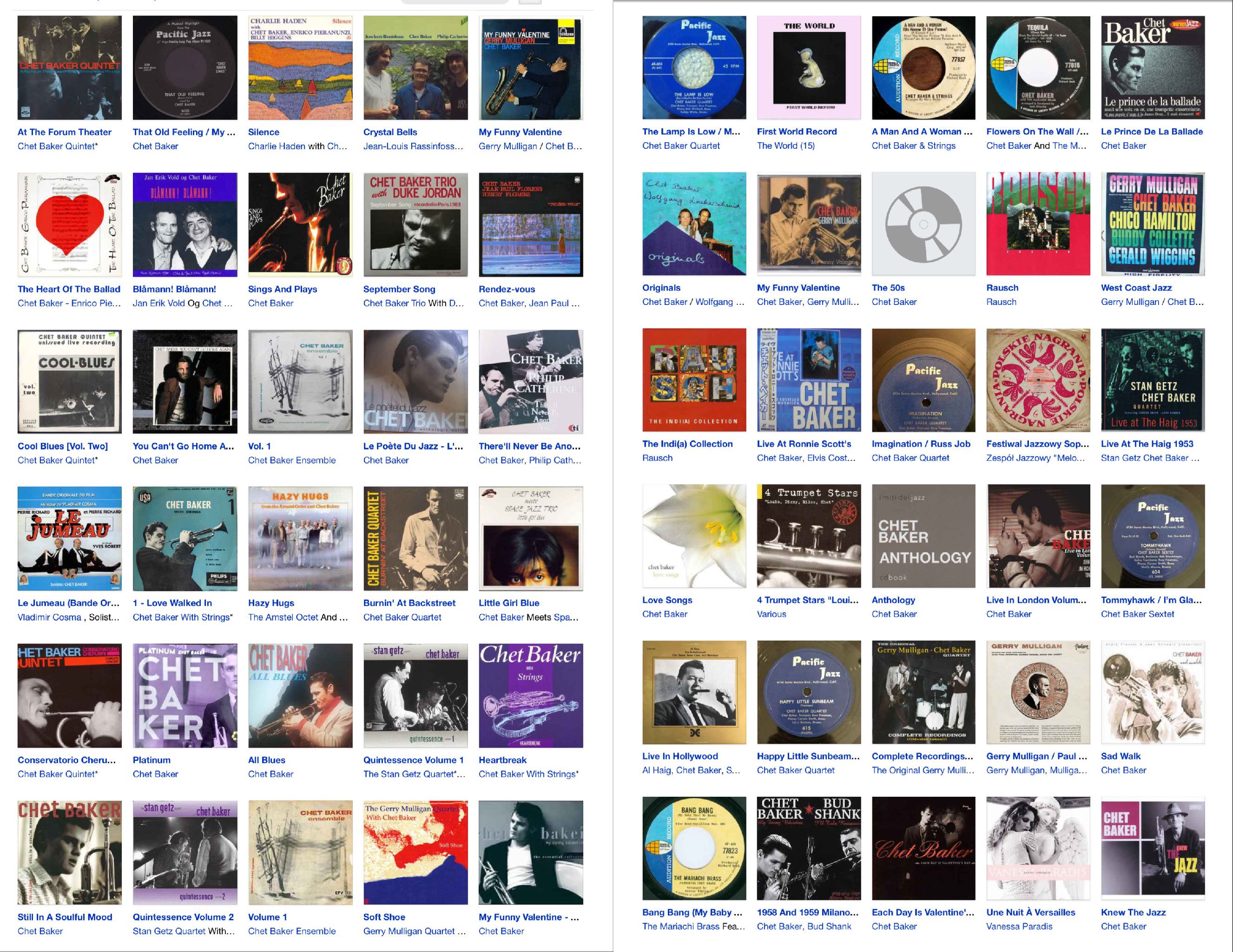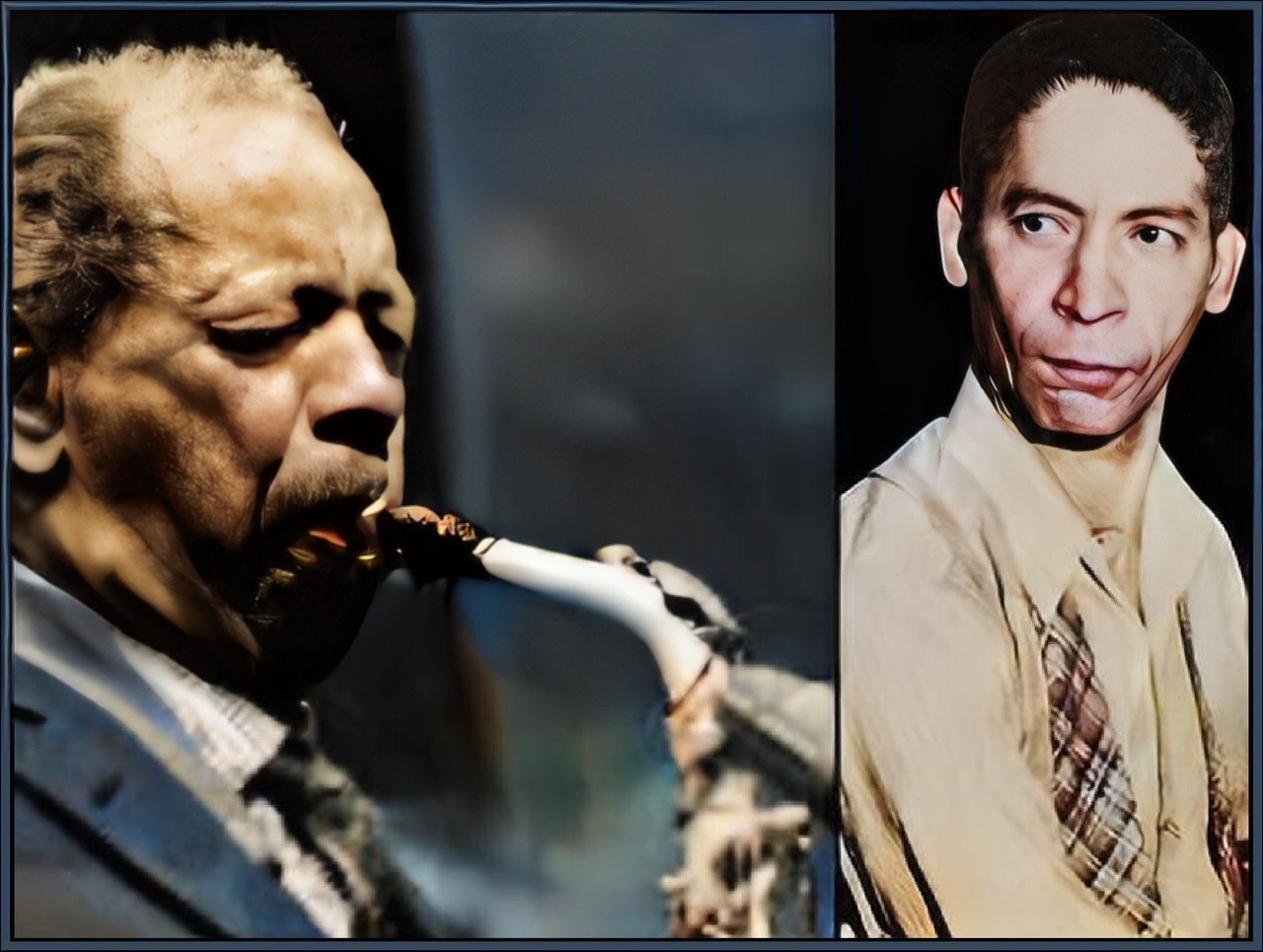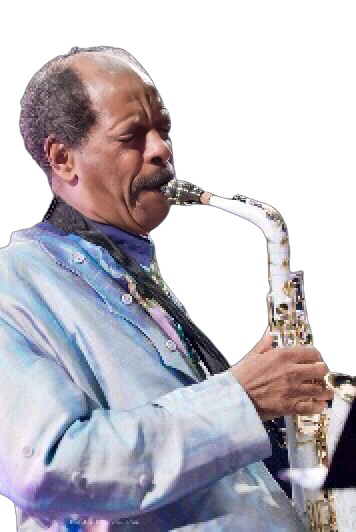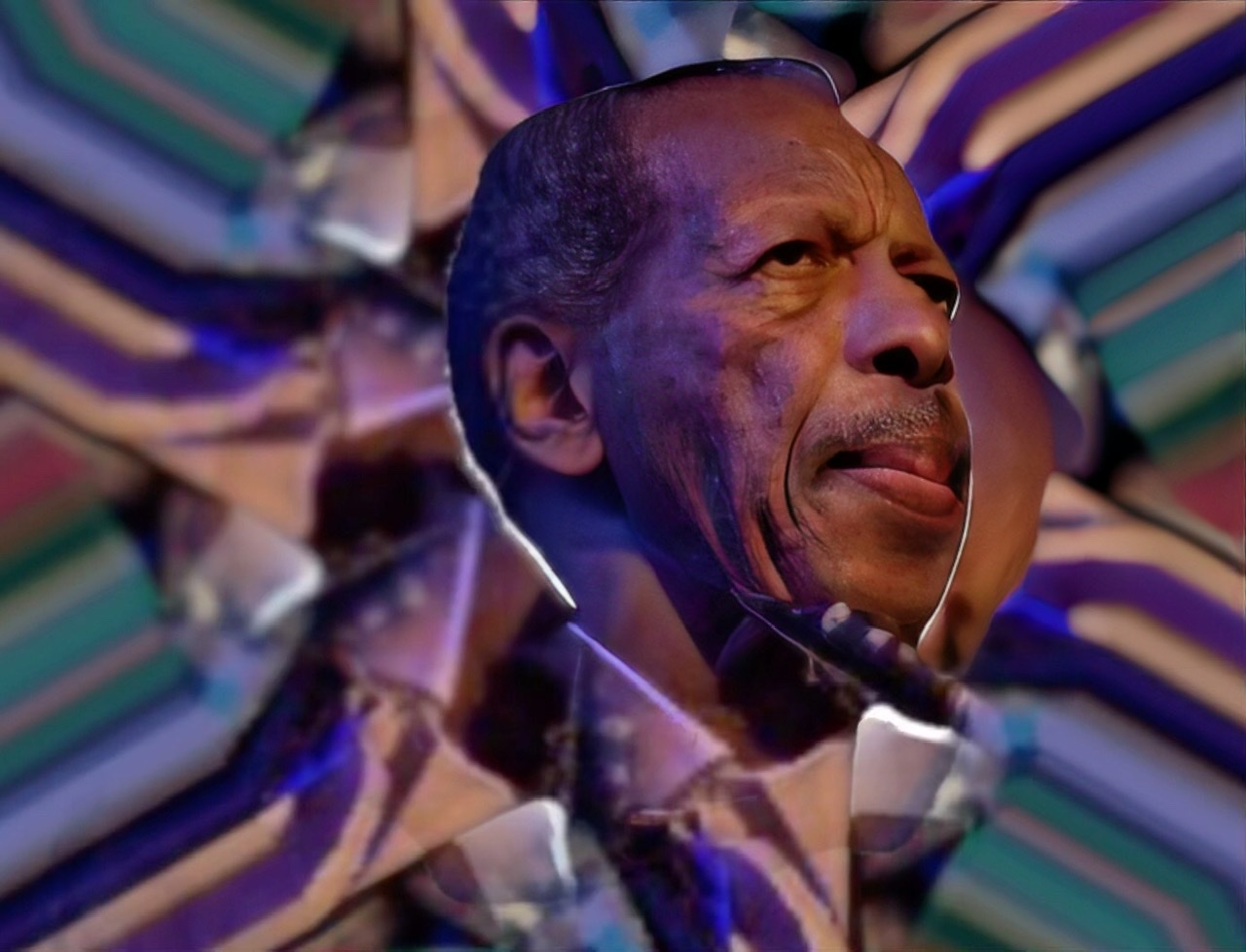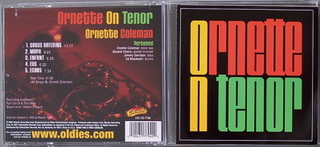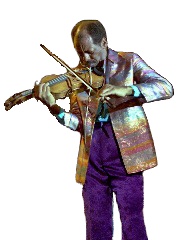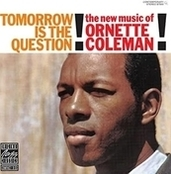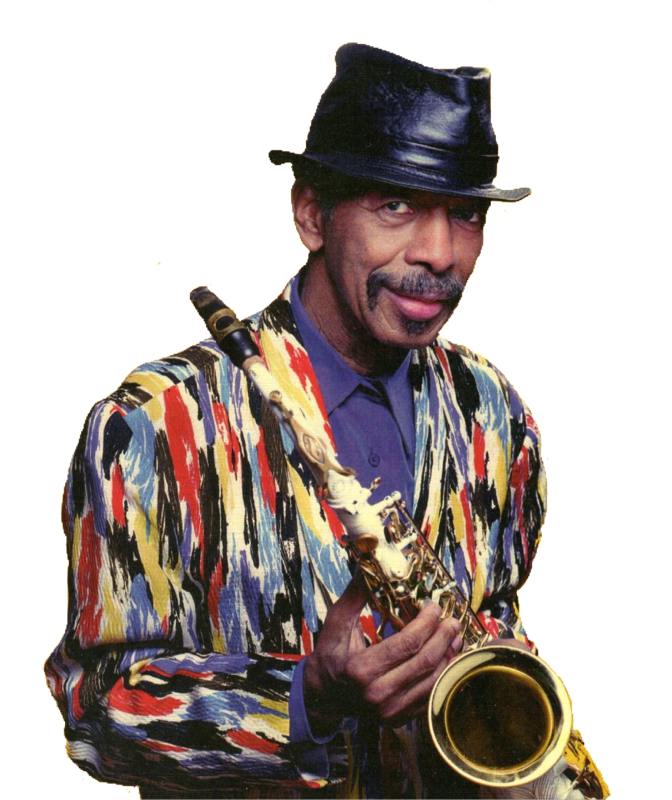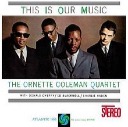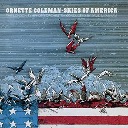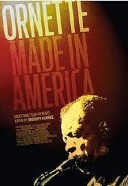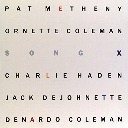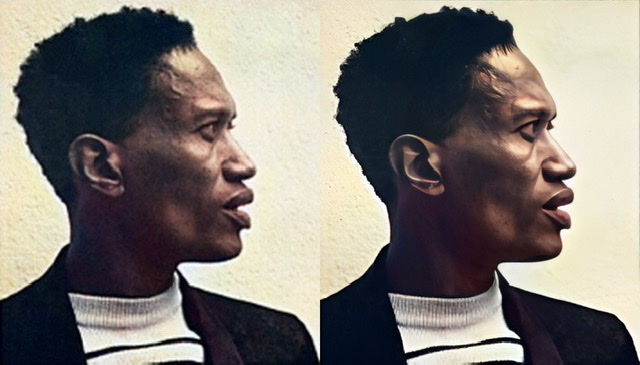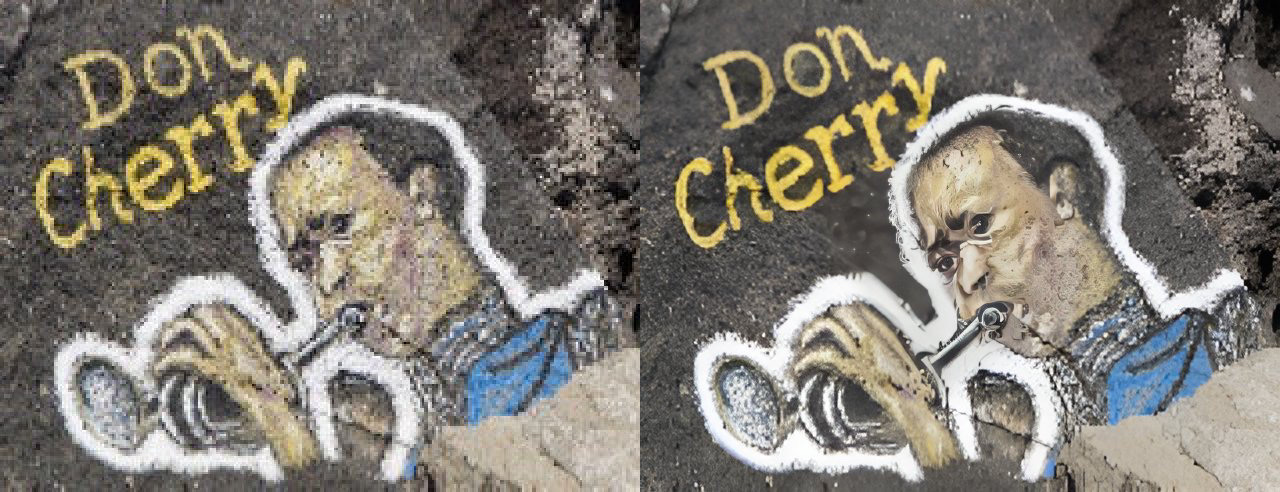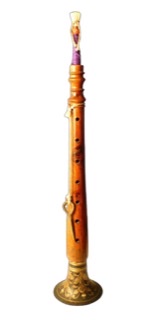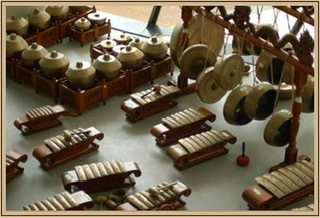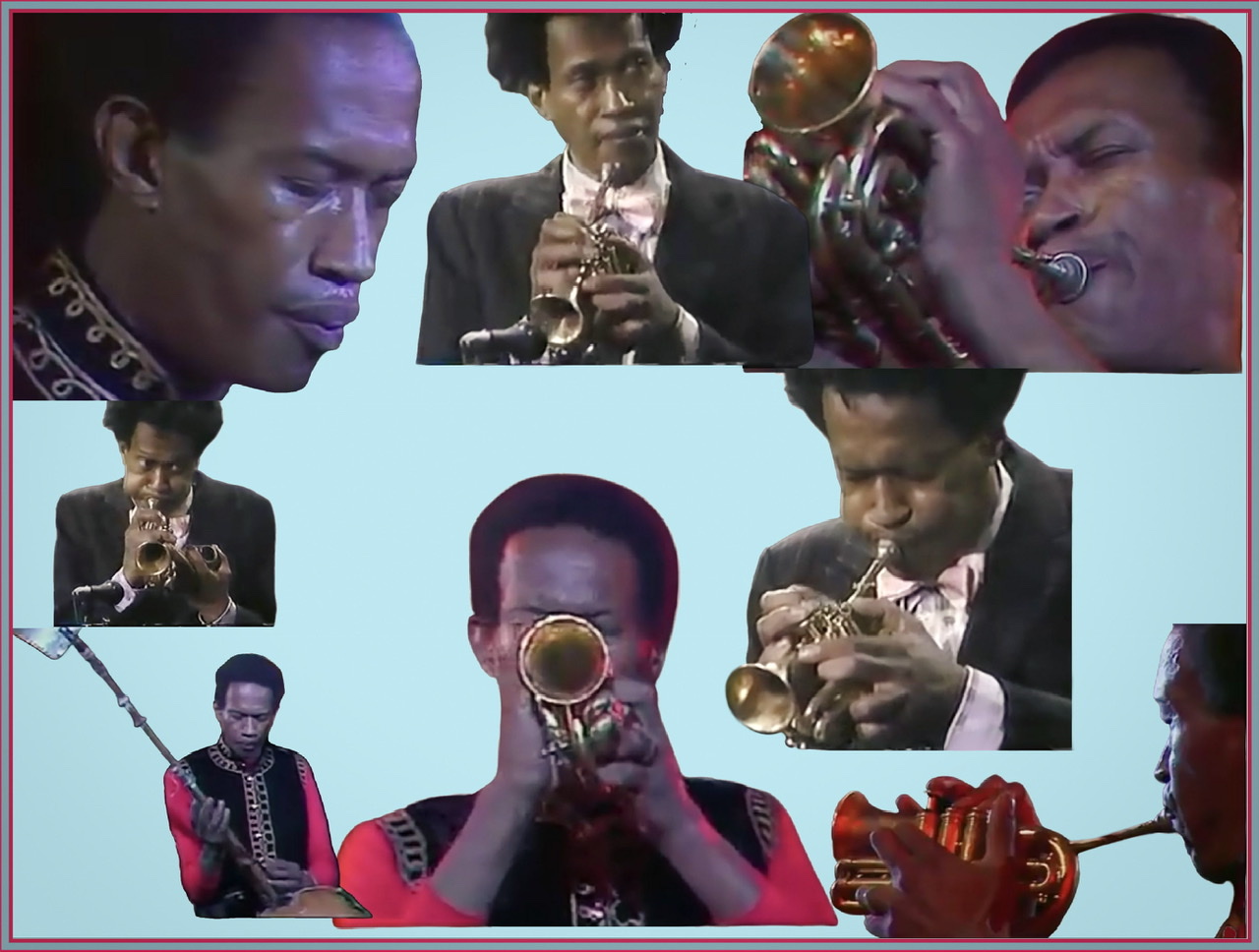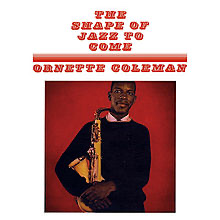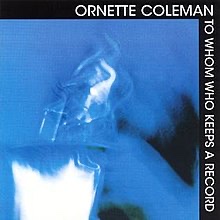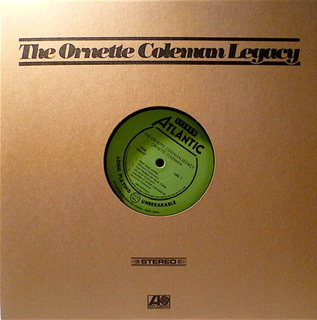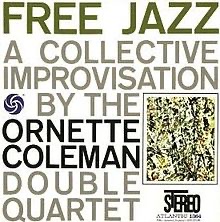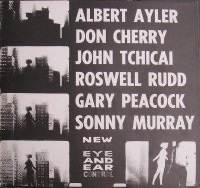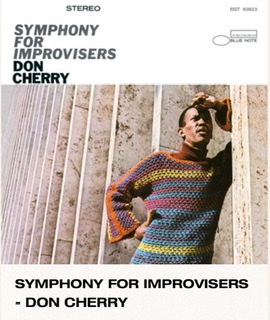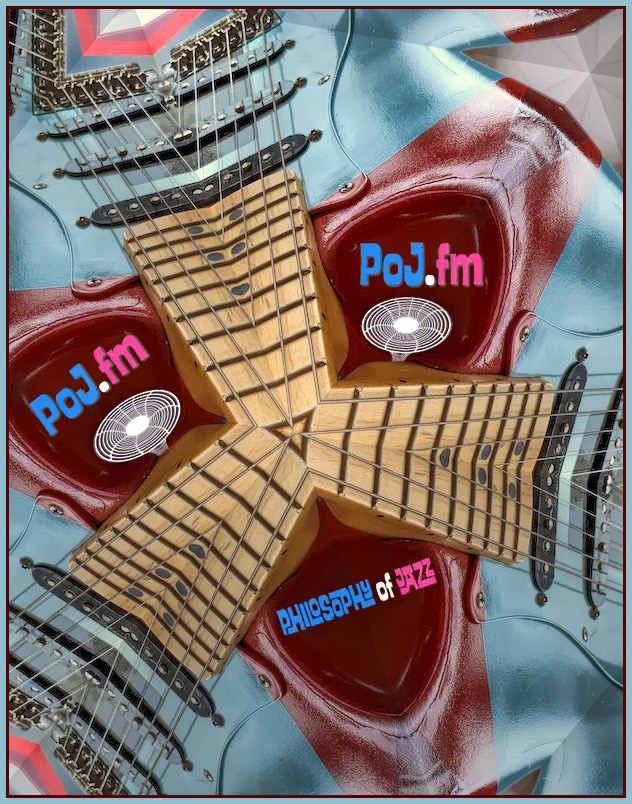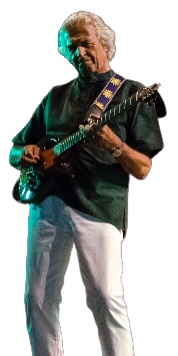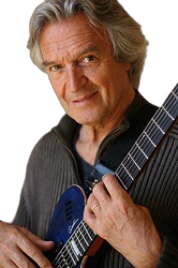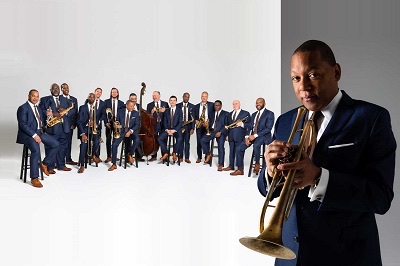Ep16*. What are jazz legend's notable accomplishments
Contents
- 1 Discussion
- 2 NEA Jazz Masters
- 3 Ertegun Hall of Fame
- 4 Jazz Resources
- 5 Greatest Jazz Albums
- 6 Jazz: The Smithsonian Anthology
- 7 Jazz Sub-Genres
- 8 Tables of jazz legend's notable achievements 1890-1990
- 8.1 Buddy Bolden
- 8.2 Jelly Roll Morton
- 8.3 Louis Armstrong
- 8.4 Sydney Bechet
- 8.5 Duke Ellington
- 8.6 Coleman Hawkins
- 8.7 Lester Young
- 8.8 Count Basie
- 8.9 Mary Lou Williams
- 8.10 Kenny Clarke
- 8.11 Charlie Christian
- 8.12 Thelonious Monk
- 8.13 Dizzy Gillespie
- 8.14 Charlie Parker
- 8.15 Charles Mingus
- 8.16 Art Blakey
- 8.17 Max Roach
- 8.18 John Coltrane
- 8.19 Miles Davis
- 8.20 Lennie Tristano
- 8.21 Chet Baker
- 8.22 Ornette Coleman
- 8.23 Don Cherry
- 8.24 Lee Morgan
- 8.25 John McLaughlin
- 8.26 Wynton Marsalis
- 8.27 Internet Resources on Jazz's Notable Achievements
- 9 NOTES
Discussion[edit]
NOTE: Most images are clickable hyperlinks to more information about that item.
NEA Jazz Masters[edit]
![]() 2023 NEA Jazz Masters: violinist Regina Carter (b. 1966), alto and tenor saxophonist and flutist Kenny Garrett (b. 1960), drummer and bandleader Louis Hayes (b. 1937), and record producer and band manager Sue Mingus (1930–September 24, 2022).
2023 NEA Jazz Masters: violinist Regina Carter (b. 1966), alto and tenor saxophonist and flutist Kenny Garrett (b. 1960), drummer and bandleader Louis Hayes (b. 1937), and record producer and band manager Sue Mingus (1930–September 24, 2022).
![]() Read about their 2022 live streaming concert.
Read about their 2022 live streaming concert.
Left to right from back (top) row: George Russell, Dave Brubeck; second row: David Baker, Percy Heath, Billy Taylor; third row: Nat Hentoff, Jim Hall, James Moody; fourth row: Jackie McLean, Chico Hamilton, Gerald Wilson, Jimmy Heath; fifth row: Ron Carter, Anita O'Day; sixth row: Randy Weston, Horace Silver; standing next to or in front of balustrade: Benny Golson, Hank Jones, Frank Foster (seated), Cecil Taylor, Roy Haynes, Clark Terry (seated) Louie Bellson and Dana Gioia (chairman of NEA). (Only Ron Carter b. 1937, Benny Golson b. 1929, Roy Haynes b. 1925, and Dana Gioia b. 1950 are still alive as of 2023)
(NEA Jazz Masters)
(January 2012)
Legends in jazz, blues and beyond can be elected into the DownBeat Hall of Fame by way of the annual Critics Poll (designated by “C”), Readers Poll (“R”) or Veterans Committee (“V”). The Readers poll began in 1952 with the Critics in 1961 and the Veterans Committee in 2008.
Ertegun Hall of Fame[edit]
To be nominated to the Ertegun Jazz Hall of Fame  at Jazz at Lincoln Center's Jazz Academy,
at Jazz at Lincoln Center's Jazz Academy,  an artist must have:
an artist must have:
-
 Achieved innovation in a style or a concept of playing.
Achieved innovation in a style or a concept of playing.
-
 Created an original concept with a body of music or body of arrangements.
Created an original concept with a body of music or body of arrangements. -
 Spoke/speaks across generations, unbound to his or her generation’s concept of style.
Spoke/speaks across generations, unbound to his or her generation’s concept of style. -
 Originated a definitive style.
Originated a definitive style. -
 Popularized a style without compromising the aesthetic quality of the music.
Popularized a style without compromising the aesthetic quality of the music. -
 Occupies a significant position within the jazz lineage.
Occupies a significant position within the jazz lineage. -
 Influenced musicians across time.
Influenced musicians across time.
Artists in alphabetical order and year inducted into the hall with vocalists in bold font are:
Julian “Cannonball” Adderley (2019)
Louis Armstrong (2004)
Count Basie (2005)
Sidney Bechet (2004)
Bix Beiderbecke (2004)
Art Blakey (2013)
Jimmie Blanton (2018)
Clifford Brown (2007)
Benny Carter (2007)
Betty Carter (2014)
Charlie Christian (2007)
Nat “King” Cole (2018)
Ornette Coleman (2008)
John Coltrane (2004)
Miles Davis (2004)
Roy Eldridge (2005)
Duke Ellington (2004)
Bill Evans (2010)
Gil Evans (2008)
Ella Fitzgerald (2005)
Dizzy Gillespie (2004)
Benny Goodman (2005)
Dexter Gordon (2015)
Freddie Green (2020)
Lionel Hampton (2013)
Coleman Hawkins (2004)
Fletcher Henderson (2014)
Earl Hines (2005)
Johnny Hodges (2005)
Billie Holiday (2004)
J.J. Johnson (2016)
James P. Johnson (2015)
Elvin Jones (2014)
Jo Jones (2005)
Lee Konitz (2020)
John Lewis (2020)
Charles Mingus (2005)
Wes Montgomery (2014)
Jelly Roll Morton (2004)
Thelonious Monk (2004)
King Oliver (2005)
Bud Powell (2010)
Charlie Parker (2004)
Tito Puente (2017)
Don Redman (2017)
Django Reinhardt (2007)
Max Roach (2005)
Sonny Rollins (2005)
Wayne Shorter (2016)
Nina Simone (2018)
Bessie Smith (2008)
Billy Strayhorn (2010)
Art Tatum (2004)
Clark Terry (2013)
Lennie Tristano (2015)
Frank Trumbauer (2019)
McCoy Tyner (2017)
Sarah Vaughan (2010)
Fats Waller (2005)
Dinah Washington (2019)
Chick Webb (2019)
Ben Webster (2016)
Mary Lou Williams (2008)
Teddy Wilson (2020)
Lester Young (2004)
Jazz Resources[edit]
-
 JazzOnTheTube the biggest annotated and indexed online collection of jazz videos on earth – and it’s free.
JazzOnTheTube the biggest annotated and indexed online collection of jazz videos on earth – and it’s free.
- United Kingdom's National Jazz Archive a searchable database related to everything jazz. They describe themselves: “The National Jazz Archive holds the UK’s finest collection of written, printed and visual material on jazz, blues and related music, from the 1920s to the present day. Since the Archive was founded by Digby Fairweather in 1988, its vision has been to ensure that the rich cultural heritage of jazz is safeguarded for future generations of enthusiasts, professionals and researchers.”
Greatest Jazz Albums[edit]
NOTE: Click on the page to go to its source. These two pages represent great jazz albums released between 1959 and 1979. At least one album, Louis Armstrong's Hot 5 and 7, was recorded much earlier between 1925 and 1928.
- Vinyl Me, Please's "The 10 Best Albums For A Jazz Beginner" by Andrew Martin and Ryan Kowal
- The Jazz Resource's "15 Jazz Albums for Musicians"
- The Jazz Resource's "Top 25 Jazz Albums of All Time"
- The Jazz Resource's "Best Jazz Pianists" with videos
- UDiscoverMusic's "The 50 Greatest Jazz Albums . . . Ever" Published on December 30, 2014 By Sam Armstrong
- UDiscoverMusic's "The 50 Greatest Live Jazz Albums published on February 27, 2017 by Sam Armstrong
- "Top 10 Jazz Albums for People Who Don't Know Sh*t About Jazz by Sean J. O'Connell, May 15, 2012
- Amazon.com's "100 Greatest Jazz Albums of All Time" 2009 with a lot of critical reaction critiquing this list at NoiseAddicts.com
- RateYourMusic.com's "Best Jazz Albums of All Time - 22 Lists Combined" A list by erikfish who found 22 "top jazz albums of all time" lists in books, magazines and web sites, then combined them into one meta-list. The list here includes all albums contained on three or more of the 22 original source lists. (Last update: October 30, 2011)
- Jazz100's "Top 100 Jazz Albums: The Best Jazz Ever Released Digitally" by Peter Sykes & Jazz 100
- Jazz 100's "Next 100 Jazz Albums: The Best Jazz Ever Released Digitally" by Peter Sykes & Jazz 100
- ESurveysPro's "Top Classic Jazz albums"
- Jazz 100's "New (Contemporary jazz recordings over the past ten years 2004-2014) Jazz Top 100: The Best Jazz Ever Released Digitally" See New Jazz Notes
- Jazz 100's "Basic Collection of Jazz" 20 Basic Jazz Records
- Scott Yanow's—desert 🌵 island 🌴 jazz recommendations with album covers

(Years active 1919–1921)

Jazz: The Smithsonian Anthology[edit]
- Jazz: The Smithsonian Anthology (Box Set) 111 tracks of the best of jazz throughout its history from early to the present (release date March 29, 2011)
Disc: 1
1. Maple Leaf Rag (Dick Hyman) 2. In Gloryland (Bunk's Brass Band) 3. Livery Stable Blues (Original Dixieland Jazz Band) 4. Dipper Mouth Blues (King Oliver's Creole Jazz Band) 5. The Stampede (Fletcher Henderson & Orchestra) 6. Black Bottom Stomp (Jelly Roll Morton & His Red Hot Peppers) 7. Singin the Blues [Till My Daddy Comes Home] (Frankie Trumbauer & Orchestra) 8. Back Water Blues (Bessie Smith & James P. Johnson) 9. Black & Tan Fantasy (Duke Ellington & Orchestra) 10. From Monday On (Bix Beiderbecke/Paul Whiteman & Orchestra) 11. West End Blues (Louis Armstrong & His Hot Fives) 12. Weather Bird (Louis Armstrong & Earl Hines) 13. That's a Serious Thing (Eddie Condon's Hot Shots) 14. Handful of Riffs (Eddie Lang & Lonnie Johnson) 15. You've Got to Be Modernistic (James P. Johnson) 16. Moten Swing (Bennie Moten & Kansas City Orchestra) 17. Everybody Loves My Baby (Boswell Sisters) 18. Maple Leaf Rag (Sidney Bechet) 19. Dinah (Fats Waller & His Rhythm) 20. Swing That Music (Louis Armstrong & Orchestra) 21. Honky Tonk Train Blues (Meade Lux Lewis) 22. Mean to Me (Billie Holiday with Teddy Wilson & Orchestra) 23. For Dancers Only (Jimmie Lunceford & Orchestra) 24. 1 O'clock Jump (Count Basie & Orchestra) 25. Harlem Congo (Chick Webb & Orchestra)
Disc: 2
1. Minor Swing (Quartet du Hot Club de France) 2. Mary's Idea (Mary Lou Williams/Andy Kirk & the Clouds of Joy) 3. When Lights Are Low (Lionel Hampton) 4. Body & Soul (Coleman Hawkins & Orchestra) 5. Honeysuckle Rose (Bennie Goodman & Orchestra) 6. Tiger Rag (Art Tatum) 7. Ko-Ko (Duke Ellington & His Famous Orchestra) 8. Hard Times [Topsy Turvy] (Cab Calloway & Orchestra) 9. I Can't Believe That You're in Love with Me (Chocolate Dandies) 10. Stardust (Artie Shaw & Orchestra) 11. Let Me Off Uptown (Gene Krupa & Orchestra) 12. Shaw Nuff (Dizzy Gillespie's Allstar Quintet) 13. Manteca (Dizzy Gillespie & Orchestra) 14. Virgo f/ Zodiac Suite (Mary Lou Williams) 15. Dexter Rides Again (Dexter Gordon) 16. I Want to Be Happy (Lester Young/Buddy Rich Trio) 17. Indiana (Bud Powell) 18. Embraceable You (Charlie Parker Quintet) 19. 4 Brothers (Woody Herman & Orchestra) 20. Misterioso (Thelonious Monk Quartet) 21. Lady Bird (Tadd Dameron Sextet) 22. Tanga (Machito & his Afro-Cuban Orchestra) 23. Sept in the Rain (George Shearing Quintet) 24. WOW (Lennie Tristano Sextet)
Disc: 3
1. Boplicity (Miles Davis Nonet) 2. Golden Bullet (Count Basie Octet) 3. Popo (Shorty Rogers & His Giants) 4. Walkin Shoes (Gerry Mulligan Quartet with Chet Baker) 5. 23 Degrees N. 82 Degrees W. (Stan Kenton) 6. Daahoud (Clifford Brown/Max Roach Quintet) 7. Django (Modern Jazz Quartet) 8. The Preacher (Horace Silver & the Jazz Messengers) 9. I'll Remember April (Erroll Garner Trio) 10. Jonaleh (Chico Hamilton Quintet) 11. Tricrotism (Lucky Thompson Trio) 12. St. Thomas (Sonny Rollins) 13. Call For All Demons (Sun Ra & His Arkestra) 14. When I Grow Too Old to Dream (Nat King Cole & Trio) 15. Stompin t the Savoy (Louis Armstrong & Ella Fitzgerald) 16. Blues in the Closet (Stan Getz & J.J. Johnson) 17. Ol Man River (Oscar Peterson Trio) 18. Summertime (Miles Davis orchestrated by Gil Evans)
Disc: 4
1. Moanin' (Art Blakey & the Jazz Messengers) 2. Meet BB (Count Basie & Orchestea) 3. So What (Mikes Davis Sextet) 4. Giant Steps (John Coltrane Quartet) 5. Better Git It in Your Soul (Charles Mingus) 6. Blue Rondo à la Turk (Dave Brubeck Quartet) 7. Ramblin (Ornette Coleman Quartet) 8. Work Song (Cannonball Adderley) 9. Wrap your Troubles in Dreams (Sarah Vaughan) 10. My Favorite Things Pt1 [Sngl Ver] (John Coltrane Quartet) 11. Waltz for Debby (Bill Evans) 12. Round Midnight (George Russell Sextet) 13. Cotton Tail (Ella Fitzgerald with the Duke Ellington Orchestra)
Disc: 5
1. 1 by 1 (Art Blakey & the Jazz Messengers) 2. The Girl from Ipanema (Stan Getz & Astrud Gilberto) 3. Love Supreme Pt 1: Acknowledgement (John Coltrane Quartet) 4. E.S.P. (Miles Davis Quintet) 5. Haig & Haig (Clark Terry/Bob Brookmeyer Quintet) 6. King of the Road (Jimmy Smith & Wes Montgomery) 7. Isfahan (Duke Ellington & Orchestra) 8. New National Anthem [f/ A Genuine Tong Funeral] (Gary Burton) 9. Matrix (Chick Corea) 10. Miles Runs the Voodoo Down (Miles Davis) 11. Celestial Terrestrial Commuters (Mahavishnu Orchestra) 12. Watermelon Man (Herbie Hancock) 13. Long Yellow Rd (Toshiko Akiyoshi/Lew Tabackin Big Band) 14. Jitney #2 (Cecil Taylor) 15. Bright Size Life (Pat Metheny)
Disc: 6
1. Maple Leaf Rag (Anthony Braxton & Muhal Richard Abrams) 2. Birdland (Weather Report) 3. My Song (Keith Jarrett) 4. Iya (Irakere) 5. Bush Magic (Art Ensemble of Chicago) 6. Steppin (World Sax Quartet) 7. Glide Was in the Ride (Steve Coleman Group) 8. Manenberg [Revisited] (Abdullah Ibrahim) 9. Nothing Personal (Michael Brecker) 10. Airegin (Tito Puente) 11. Down the Ave. (Wynton Marsalis Septet) 12. Ting Ning (Nguyen Le) 13. Kilayim (Masada) 14. Hey-Hee-Hi-Ho (Medeski Martin & Wood) 15. Neutralisme (Martial Sola & Johnny Griffin) 16. Suspended Night Variation VIII (Tomasz Stanko)
(52nd Street, New York City, July, 1948)
(Portrait of William P. Gottlieb)
(possibly at WINX radio studios)
(Washington, D.C., ca. 1940)
(Photographed by Delia Potofsky Gottlieb)
Jazz Sub-Genres[edit]
Read more at International JazzDay Inspiring Quotes
Regional scenes:
- Australian jazz
- Azerbaijani jazz
- Bossa nova
- British jazz
- Cuban jazz
- Dutch jazz
- French jazz
- Indo jazz
- Italian jazz
- Japanese jazz
- Jazz in Germany
- Music of Malawi
- Polish jazz
- South African jazz
- Spanish jazz
- Cape jazz
- Kansas City jazz
- Dixieland
- West Coast jazz

(Album cover of "Kitten On the Keys. Popular Music from Pianola Rolls")
(used by permission[4] of Saydisc Records)
(with PoJ.fm logos added)
Tables of jazz legend's notable achievements 1890-1990 [edit]
NOTE: The majority of images have hyperlinks that are clickable for more information about that item.
NOTE: Also see PoJ.fm's Sp7. Women and Jazz.
Buddy Bolden [edit]
| Charles Joseph “Buddy” Bolden 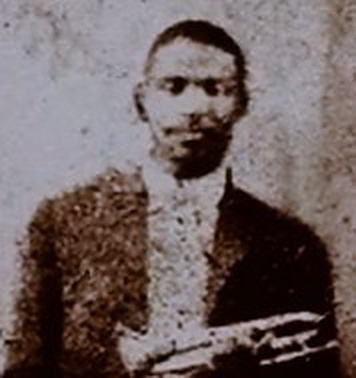 
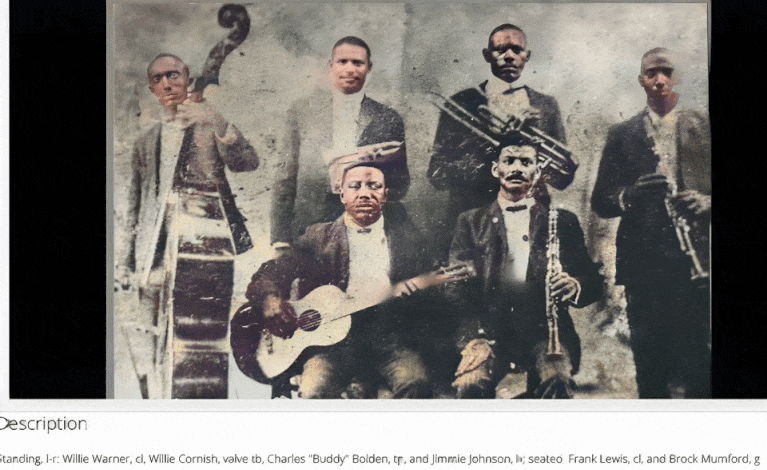
“Clarinetist Alphonse Picou (1878–1961) said: “He was the loudest there ever was because you could hear Buddy’s cornet as loud as what Louis Armstrong played through the mike.”[13] (bold not in original) 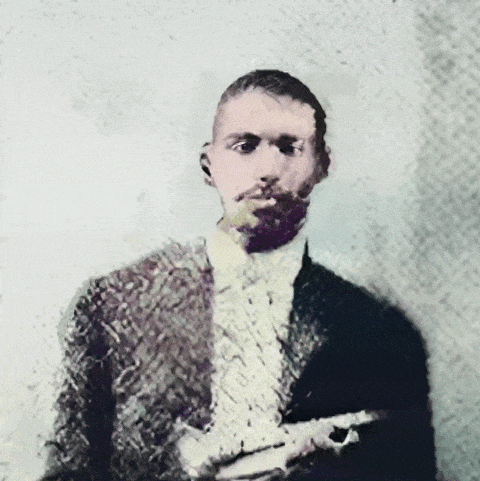
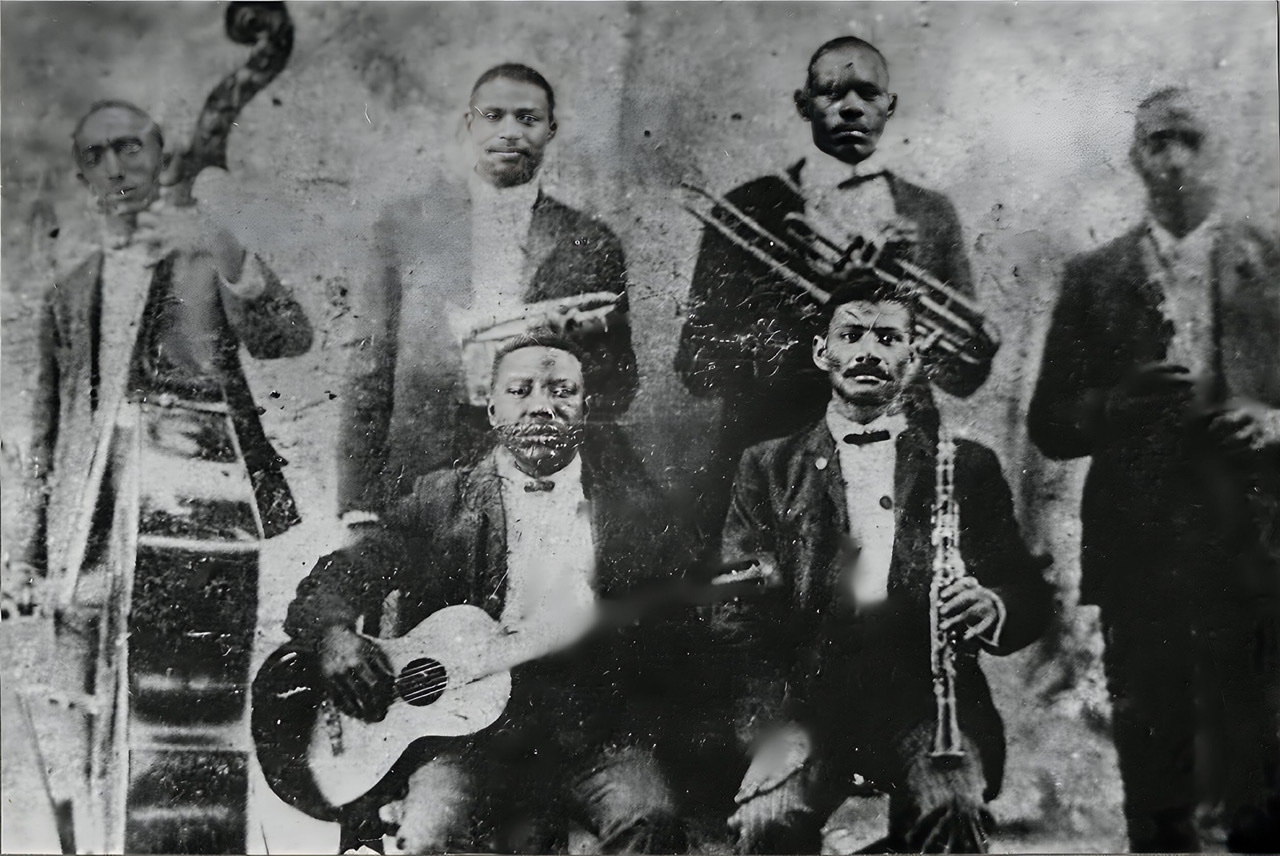
|
Jelly Roll Morton [edit]
| Ferdinand Joseph LaMothe
File:TeenageJellyRollMorton.jpeg
(According to jazz historian William (Bill) Russell (1905–1992)
(Jelly Roll Morton is buried at Calvary Cemetery in East Los Angeles, California)
|
Louis Armstrong [edit]
| Louis Armstrong (1901–1971) 
 (Photo by Gianluigi Destefanis in 2010])
(Photo by William P. Gottlieb July, 1946 — colorized)
“Armstrong was jazz's first superstar. Satchmo's explosive creativity defied conventions of early New Orleans jazz; he was a charismatic showman and dazzling trumpet player who was, literally, too good for his band. His performances were largely responsible for shifting the focus from the group to the soloist, and he was also quite an innovator when it came to scat. Perhaps most importantly, his acceptance by the social elite helped popularize jazz across racial and social boundaries.”[29] (bold not in original)
Cover of Life magazine, April 15, 1966.
|
Sydney Bechet[edit]
| Name & Pictures | |
|
|---|---|---|
| |
    
|
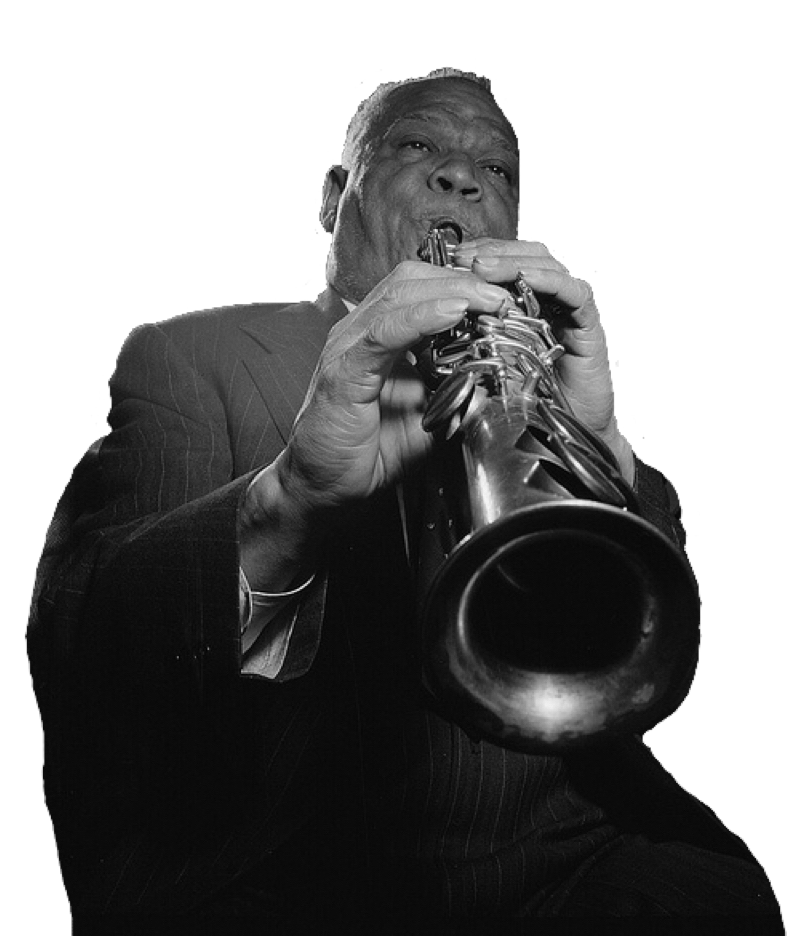 (Photo by William P. Gottlieb)
|
Duke Ellington[edit]
|
Duke Ellington   (Photo by William P. Gottlieb) (Photo by William P. Gottlieb)  (Portrait of Duke Ellington (center), Cat Anderson (left), and Sidney De Paris(?) (right), unknown far right)
“That Ellington was "beyond category" is indisputable. Following his own dictum of keeping one foot in the academy and one in the street, Ellington evolved a musical language that imposed formal order on the rhythms, timbres, and attitudes of African-American everyday life. He struck a fine balance between organizational discipline and individual expressive freedom; and merged the traditionally distinct roles of composer and bandleader by embedding the writing process in a Deweyian social process of performative experimentation.”[45]
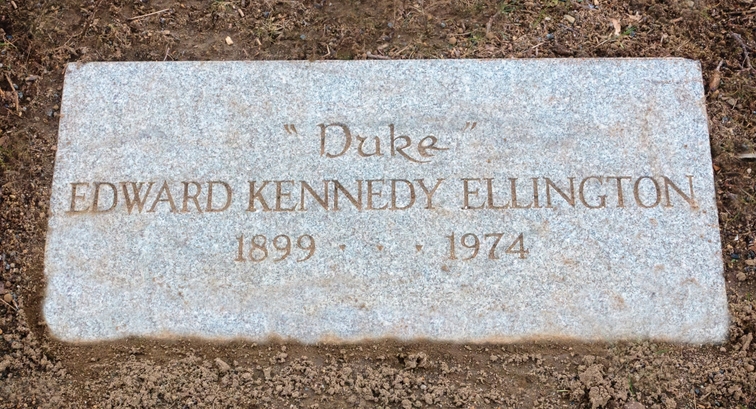 (Duke Ellington gravestone at Woodlawn Cemetery in the Bronx, New York]) |
Coleman Hawkins[edit]
| Name & Pictures | |
|
|---|---|---|
 Coleman Hawkins  (Photo by William P. Gottlieb)  (Hawkins 1967 photo by Roberto Polillo)   (Spotlite Club, NYC, 1946)   |

|
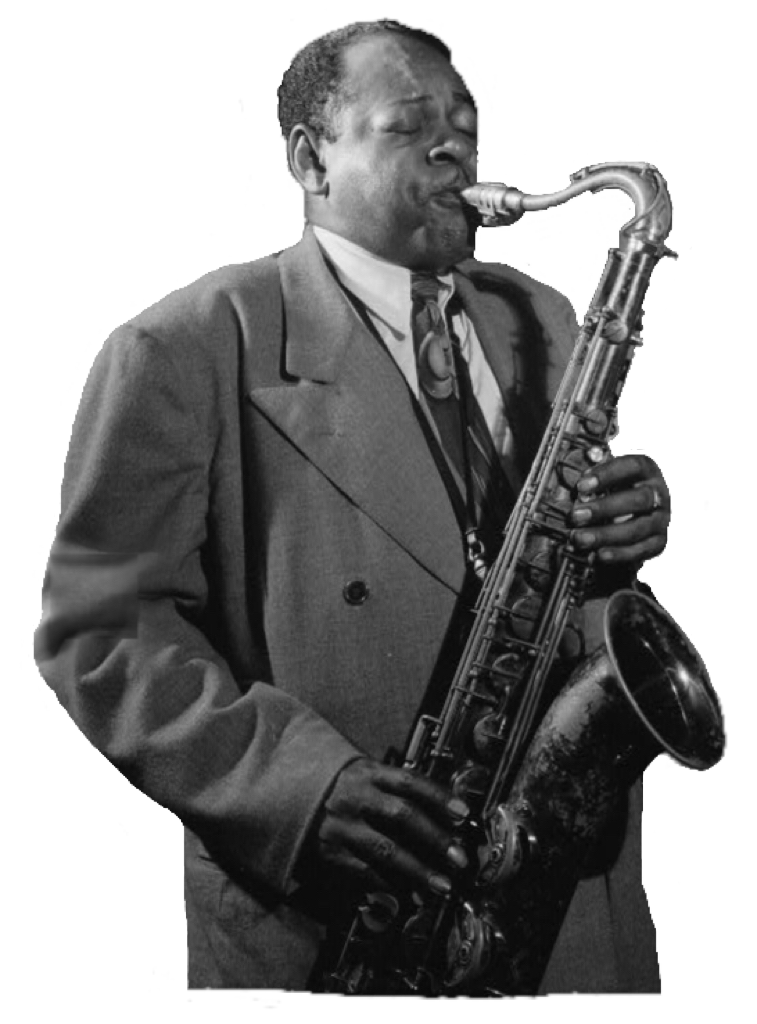
|
Lester Young[edit]
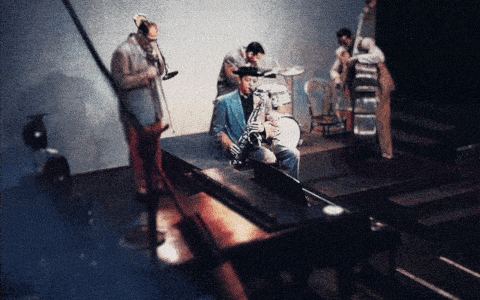 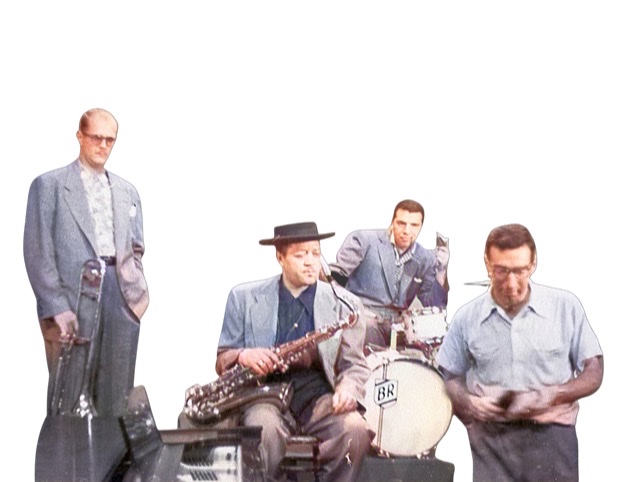 (Colorized and enhanced photograph of Prez photo #4 at Jazz Rhythm by Paul Nodler) Lester Young  (Portrait of Lester Young, Famous Door, New York, N.Y., ca. September, 1946) 
 (Photo by Jean Pierre Leloir (1931–2010))
 (Pete Johnson (1904–1967) at piano on left with trumpeter Red Allen (1908–1967) in middle)
 (Colorized and enhanced detail of photo used by permission[60] of Kansas City Museum, Kansas, MO)
 (Colorized and enhanced detail of Prez photo #4 at Jazz Rhythm by Paul Nodler)  (Colorized and enhanced detail of Prez photo #2 at Jazz Rhythm by Paul Nodler)
|
Count Basie[edit]
| Name & Pictures | |
|
|---|---|---|
| Count Basie    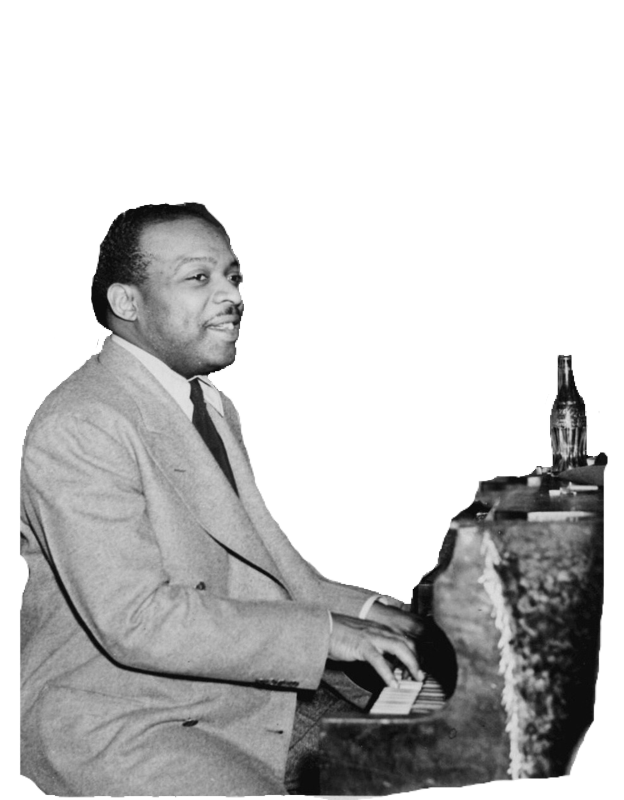 (Detail of Count Basie and Bob Crosby, Howard Theater, Washington, D.C. (ca. 1941) (Photo by William P. Gottlieb)   |
 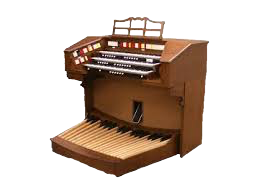    
|
|
Mary Lou Williams[edit]
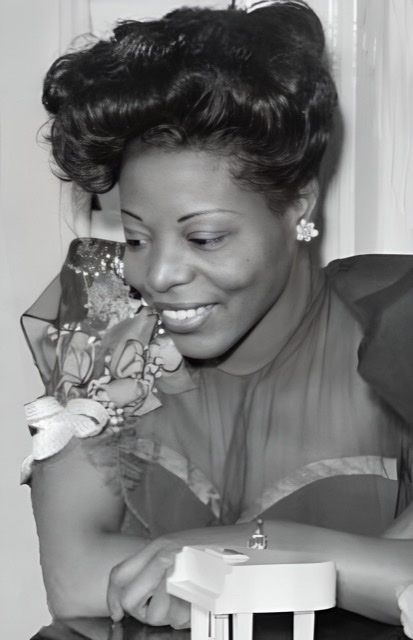 (her Harlem apartment, New York, N.Y., ca. August 1947) Mary Lou Williams /
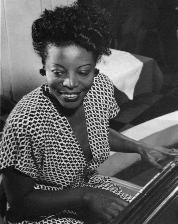 (New York, NY ca. 1946)
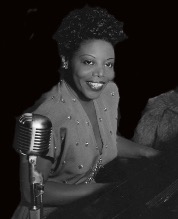 (Café Society Downtown, New York, N.Y., ca. June 1947)
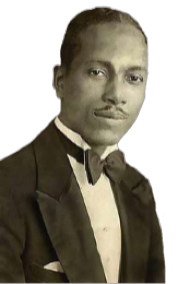 (Andy Kirk (1898-1992)) Twelve Clouds of Joy band until April 1930, at which time she became a regular member.
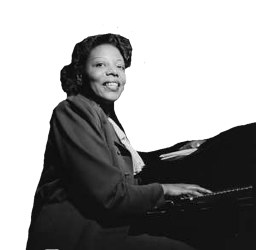 (Photo taken around 1947)
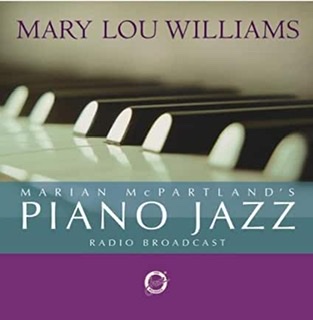
|

Kenny Clarke[edit]
| Name & Pictures | |
|
|---|---|---|
| |
 |
|
Charlie Christian[edit]
 Charlie Christian 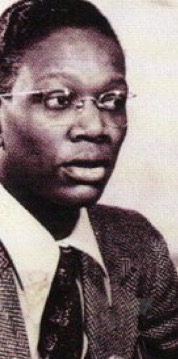   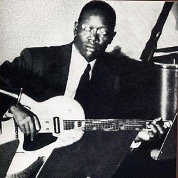

 


|
Thelonious Monk[edit]
|
 (Detail of Art Kane's (1925 – 1995) photograph for Esquire magazine from "A Great Day in Harlem" (1958))
 (Thelonious (husband), Nellie (wife), Barbara (daughter) |
Dizzy Gillespie[edit]
| Dizzy Gillespie  (Portrait of Dizzy Gillespie, 52nd Street, New York, N.Y., between 1946 and 1948)
 (Photo taken between 1946-1948 by William P. Gottlieb)

(Bronze Statue of Dizzy at Dizzy's Nightclub in the Viking Crown Lounge on the Explorer of the Seas - Pacific Coastal Cruise 🚢)
|

(Charles Mingus, Roy Haynes, Thelonious Monk, and Charlie Parker (l. to r.) jam at The Open Door in Greenwich Village, September, 1953)
(Photo by Bob Parent (1923–1987) — enhanced and colorized)
Charlie Parker[edit]
 Charlie "Bird" Parker   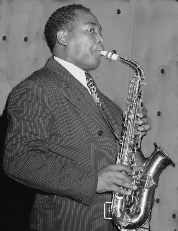 (First photo in this row is of a photographic detail taken at the Three Deuces club in New York City, ca. August 1947)   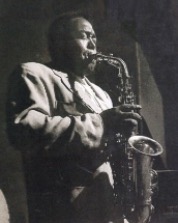 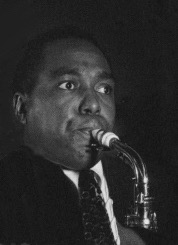 (Detail of portrait of Charlie Parker and Tommy Potter, Three Deuces Club, New York, N.Y., ca. Aug. 1947)
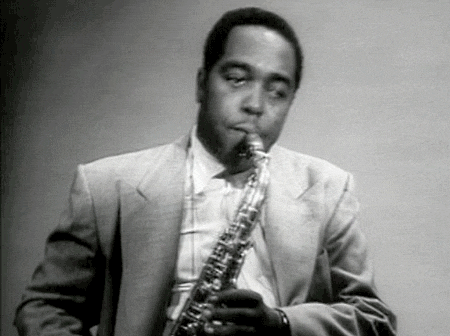 
 
|
Charles Mingus[edit]
|
|
![]() See and hear Mingus announcing this song title: "Cell Block F Tis' Nazi USA 🇺🇸".
See and hear Mingus announcing this song title: "Cell Block F Tis' Nazi USA 🇺🇸".
Art Blakey[edit]
| Art Blakey (1919–1990)
|
Max Roach[edit]
| Name & Pictures | |
|
|---|---|---|
| Max Roach (1924–2007)   (Portrait of Max Roach by William P. Gottlieb)          |
          |
|
John Coltrane[edit]
|
John Coltrane (1926–1967)
“By the time he (Coltrane) got to Hawaii, in late 1945, the Navy was already rapidly downsizing. Coltrane's musical talent was quickly recognized, though, and he became one of the few Navy men to serve as a musician without having been granted musician's rating when he joined the Melody Masters, the base swing band. As the Melody Masters was an all-white band, however, Coltrane was treated merely as a guest performer to avoid alerting superior officers of his participation in the band. He continued to perform other duties when not playing with the band, including kitchen and security details. By the end of his service, he had assumed a leadership role in the band. His first recordings, an informal session in Hawaii with Navy musicians, occurred on July 13, 1946. Coltrane played alto saxophone on a selection of jazz standards and bebop tunes.”
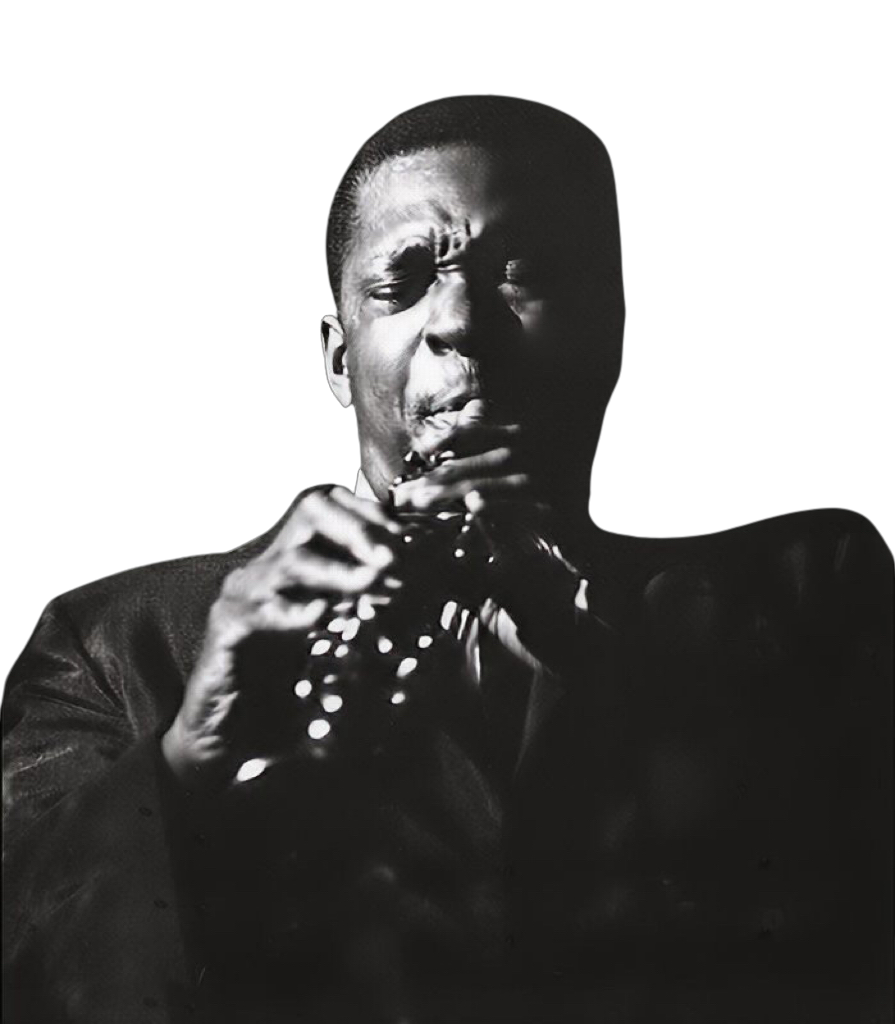
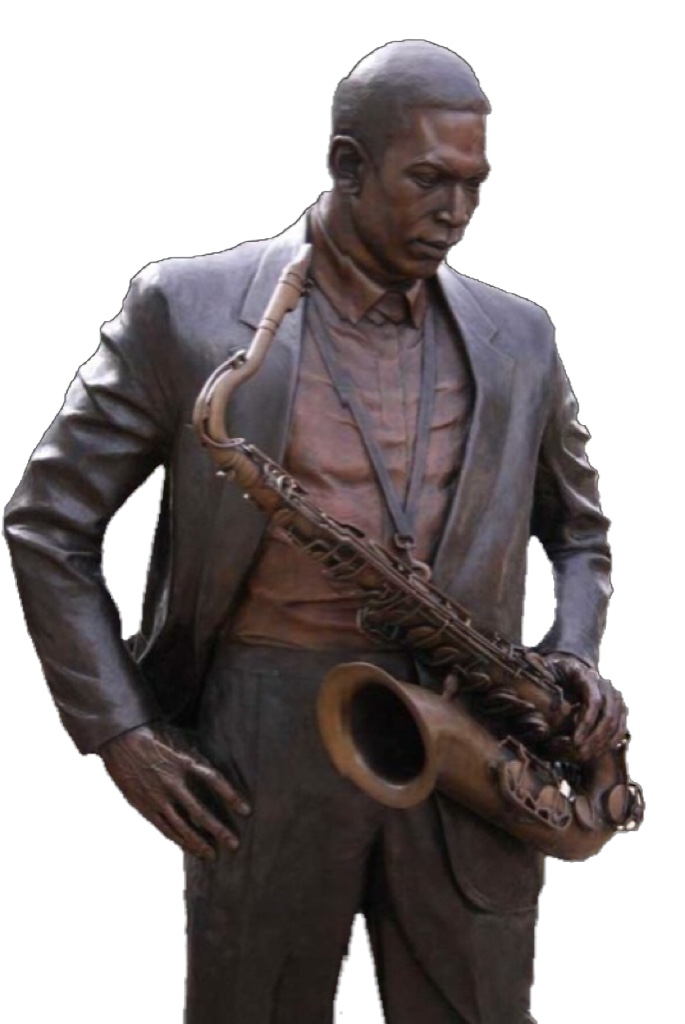 (Photo by John Martin)
|
Miles Davis[edit]
| Miles Davis (1926–1991)
  (Montreux, Switzerland 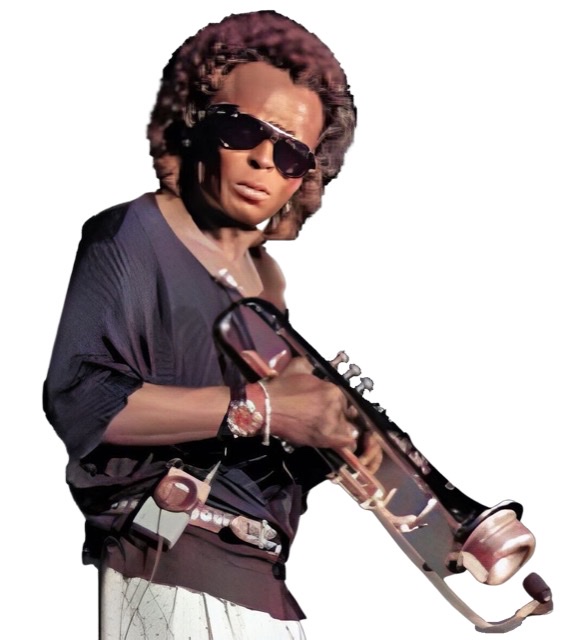 (Photo by Lajos Jardai at Colozine but colorized)  (Photo on right by Tom Palumbo)

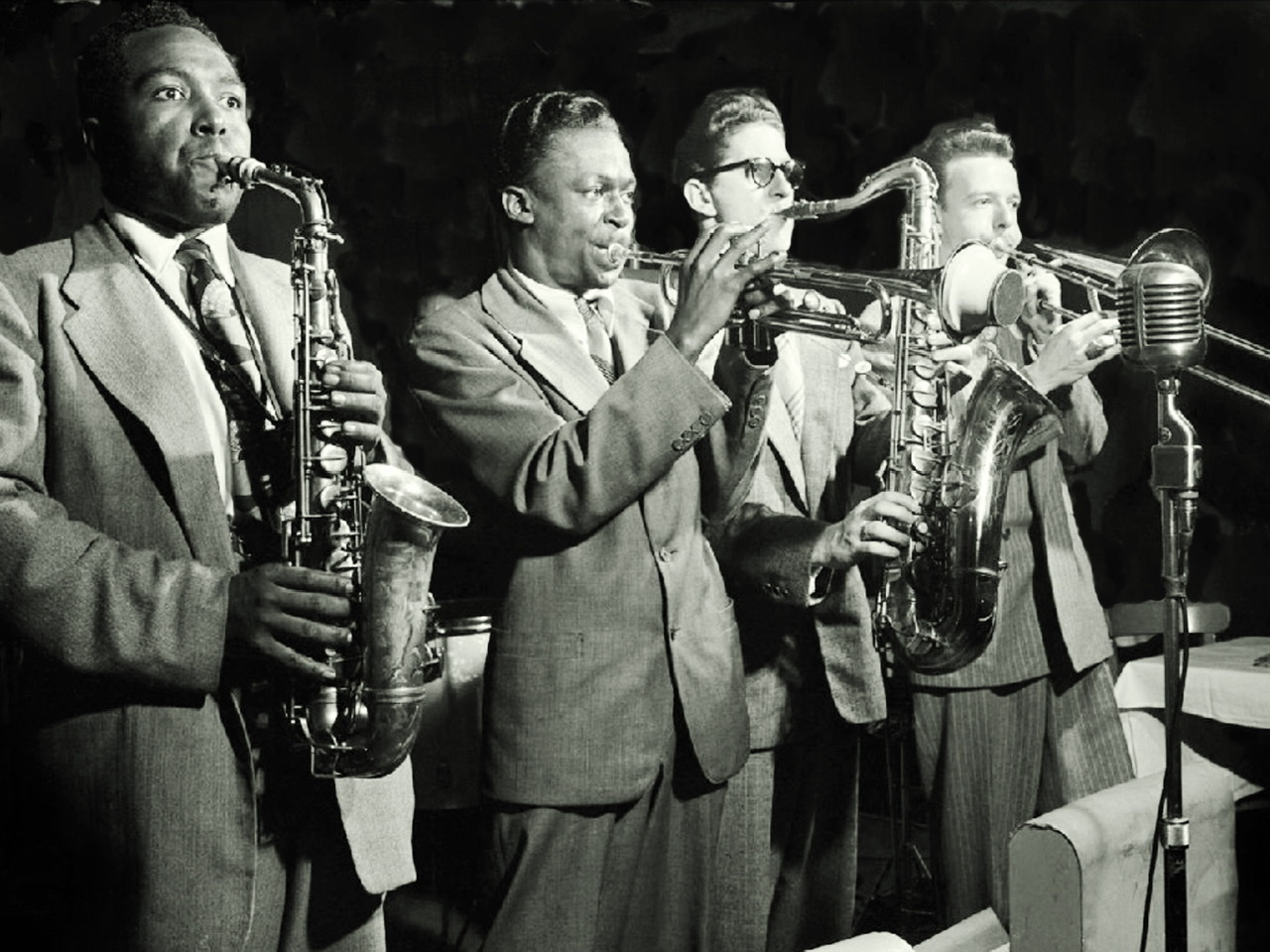 (Charlie Parker, Miles Davis, Allen Eager, and Kai Winding) (Original Photo by Herman Leonard (1923–2010))
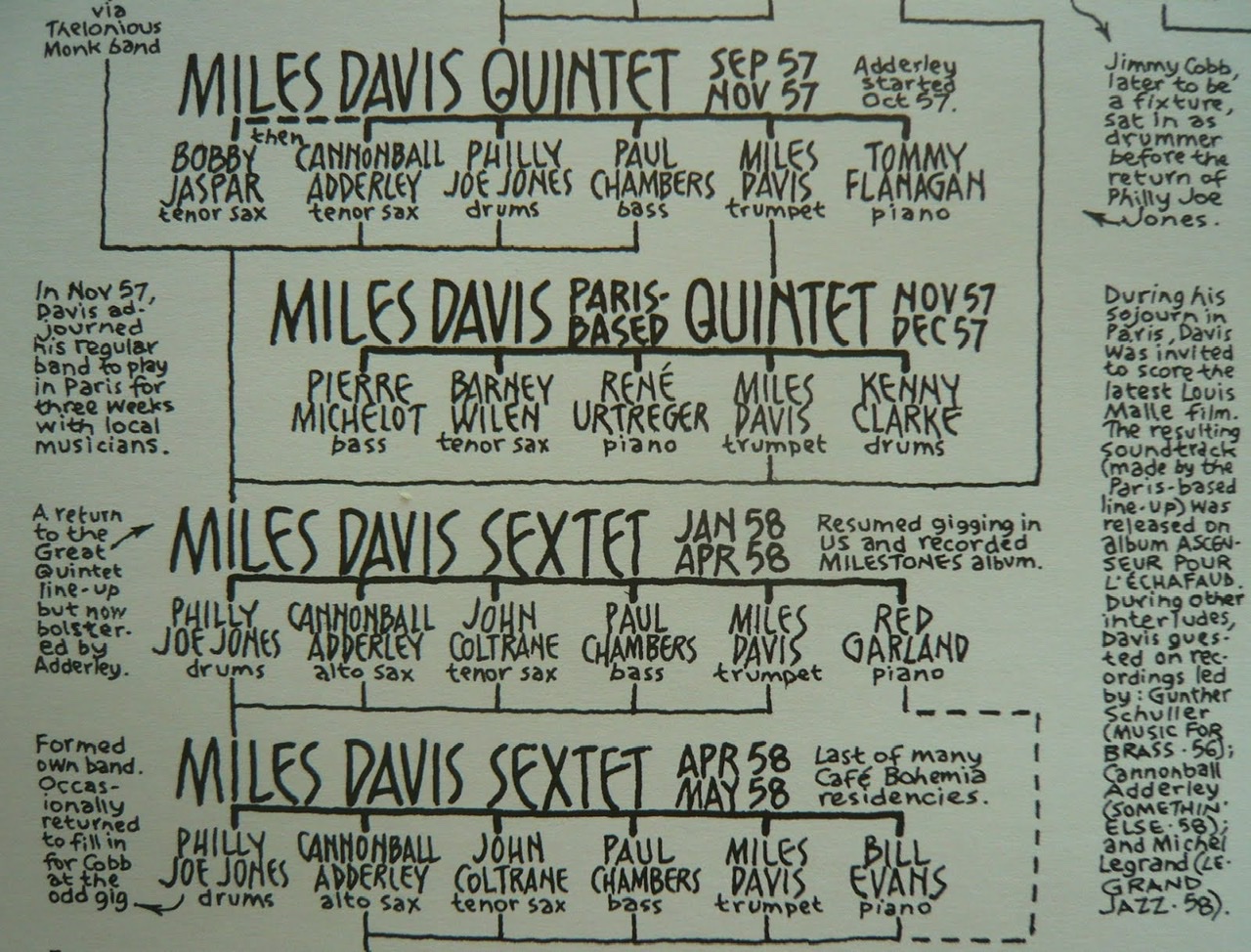 (Detail of Jazz Tree of "Miles Davis Live Bands (1955–1975) by Paul Barber as published in Even More Rock Family Trees Paperback—November 1, 2011 by Pete Frame (b. 1942)) 🔵 "Kind of Blue: How Miles Davis Changed Jazz"
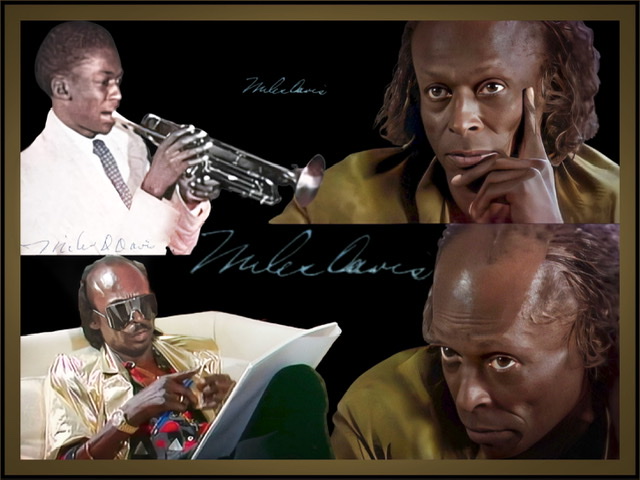
Miles Davis's Interviews:
| ||||

(Background photos by NASA and the Hubble Space Telescope using false but natural colors in 2012 with PoJ.fm logos added)
Lennie Tristano[edit]
Lennie Tristano   (Pied Piper jam, New York, N.Y., September, 1947) 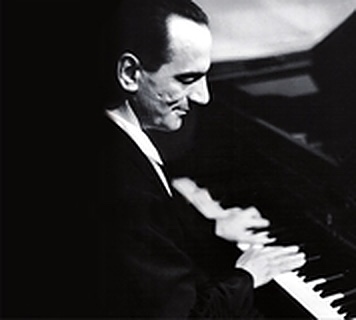

 (New York, N.Y., ca. Aug. 1947)
|
Chet Baker[edit]
|
Chet Baker (1929–1988)
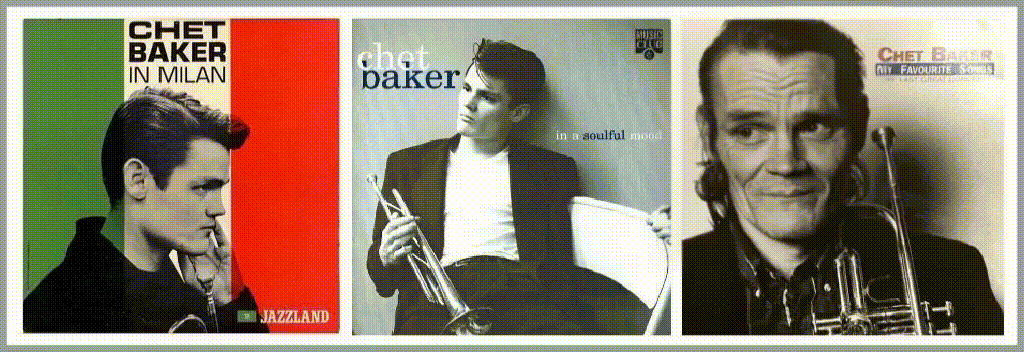
 |
Ornette Coleman[edit]
|
(Randolph Denard) Ornette Coleman 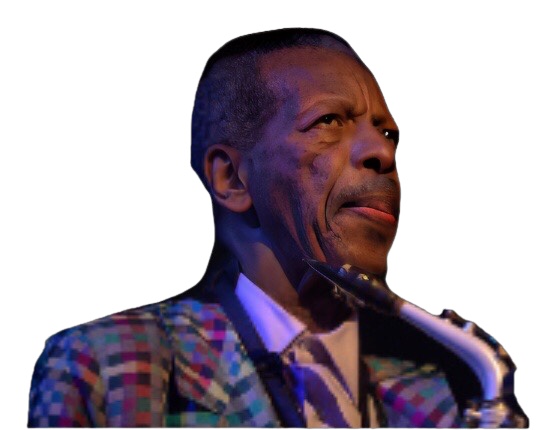 (Photo by Tom Beetz, taken July 9, 2010) 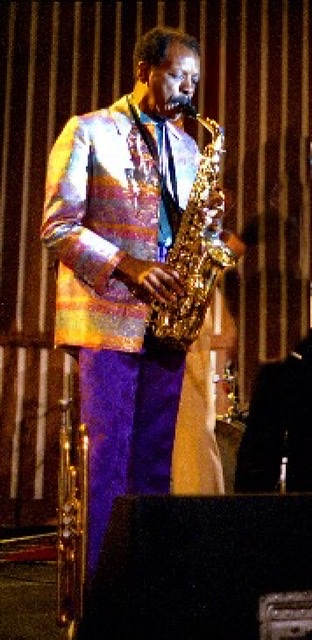 (Caravan of Dreams, Fort Worth, TX, 1985 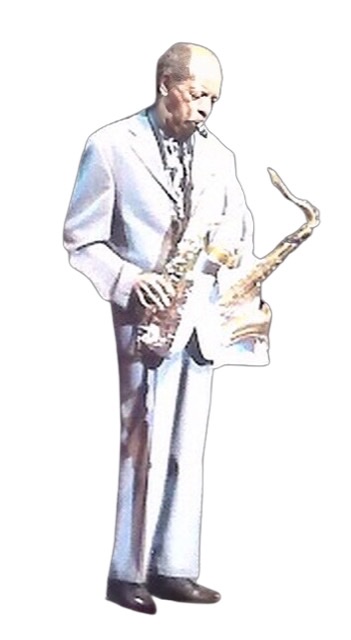 (The Roots at the Royal Festival Hall, June 13, 2009) 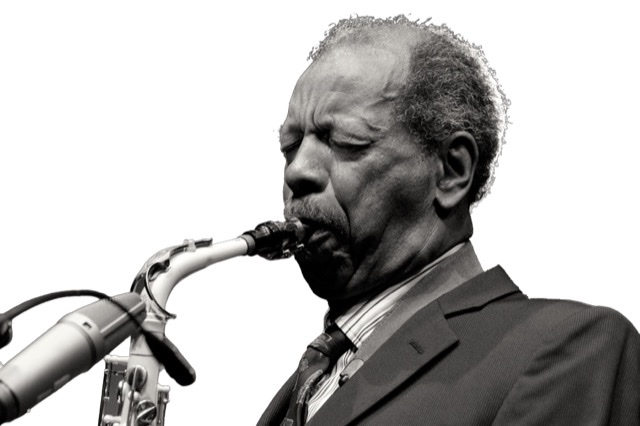 (Photo by Nomo Michael Hoefner) 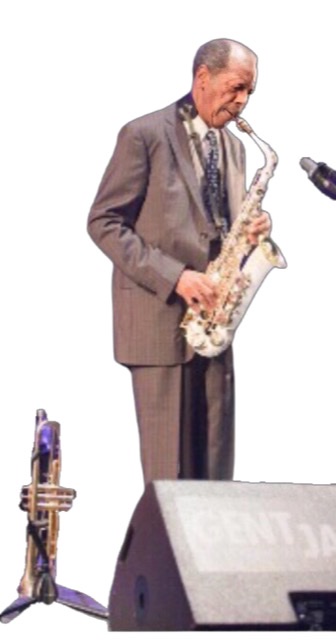 (Photo by Bruno Bollaert, taken July 8, 2010)  (Ornette Coleman at Royal Festival Hall in London, England at the Meltdown Festival June 21, 2009)  (Photo by Tom Beetz, taken July 9, 2010)
“Gunther Shuller: 'I remember vividly Ornette Coleman just going out of his mind the first time he heard Jelly Roll Morton’s "Black Bottom Stomp"—he thought it was the best thing he’d ever heard in his life. I played a lot of Louis Armstrong, Bessie Smith, God knows what, and a lot of it was a revelation to him about his own heritage.'”[142] (bold not in original)
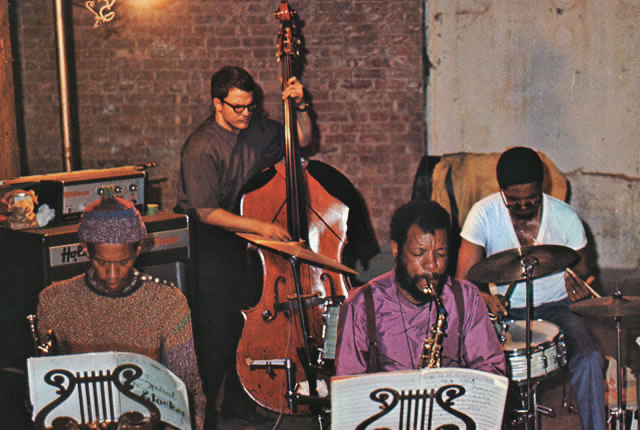 (l. to rt. Don Cherry, Charlie Haden, Ornette Coleman, Ed Blackwell)
“For the players, however, it was something that, according to Haden, they “worked out as we went along. We did it all by ear. At first when we were playing and improvising, we kind of followed the pattern of the song, sometimes. Then, when we got to New York, Ornette wasn’t playing on the song patterns, like the bridge and the interlude and stuff like that. He would just play. And that’s when I started just following him and playing the chord changes that he was playing: on-the-spot new chord structures made up according to how he felt at any given moment. And Cherry was kind of playing like that, too, so Billy [Higgins] and I kind of followed it. “The truth is,” he continues, “that when we had first met, we were kind of all hearing that way already. We just happened to be at the right place at the right time, all together, to make this thing happen. And it just kept getting better and better.”[144] (bold not in original)
|
Don Cherry[edit]
| Don Cherry 🍒 (1936–1995)
“Very few “name” players are identified with pocket cornets. Certainly the best known would be the late “free jazz” player Don Cherry, who played a 1930’s vintage Besson MEHA pocket cornet (almost always identified as a “pocket trumpet”). I’ve read that he first played a Pakistani pocket cornet—the first photo shows him playing something other than his Besson. You can see (and hear) several videos of Cherry playing his BessonA at the website YouTubeB.”[157] (bold and bold italic not in original)
  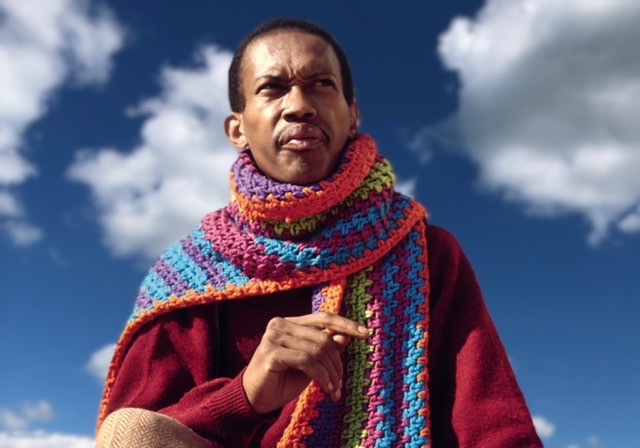  (Click on any of the three .gif pictures to listen to a special mix of "Don Cherry Around the World." Click on center 2D picture to see the 3D version, then hit back arrow of browser to return to PoJ.fm)
“On the occasion of the release of the first book in the history of humanity on this too little-known genius of Great Black Music, we take you on a real world tour thanks to the many cosmopolitan encounters Don Cherry made during his life as a volunteer nomad. On the [musical] program of this unprecedented and certified organic trip: India 🇮🇳, Germany 🇩🇪, Morocco 🇲🇦, Greece 🇬🇷, or Republic of the Gambia 🇬🇲.”[158] (bold not in original)
|
Lee Morgan[edit]
| Name & Pictures | |
|
|---|---|---|
| |
|
|
John McLaughlin[edit]
| Name & Pictures | |
|
|---|---|---|
| |
  (Photo courtesy of Alfred Publishing)
|
|
Wynton Marsalis[edit]
|
Internet Resources on Jazz's Notable Achievements[edit]
![]() "A Flourish of Jazz," Time magazine, July 5, 1976.
"A Flourish of Jazz," Time magazine, July 5, 1976.
![]() "Top Jazz albums" from acclaimedmusic.net
"Top Jazz albums" from acclaimedmusic.net
![]() "Top Avant-garde jazz albums" from acclaimedmusic.net
"Top Avant-garde jazz albums" from acclaimedmusic.net
![]() "Top BeBop albums" from acclaimedmusic.net
"Top BeBop albums" from acclaimedmusic.net
![]() "Top Hard Bop albums" from acclaimedmusic.net
"Top Hard Bop albums" from acclaimedmusic.net
![]() "Top Big Band albums" from acclaimedmusic.net
"Top Big Band albums" from acclaimedmusic.net
![]() "Top Swing albums" from acclaimedmusic.net
"Top Swing albums" from acclaimedmusic.net
![]() "Top Vocal Jazz albums" from acclaimedmusic.net
"Top Vocal Jazz albums" from acclaimedmusic.net
![]() "Top artists from 1890–1949" from acclaimedmusic.net includes twelve jazz musicians out of the top twenty and six out of the top ten, including first place (Duke Ellington), second place (Louis Armstrong), and third place (Billie Holiday).
"Top artists from 1890–1949" from acclaimedmusic.net includes twelve jazz musicians out of the top twenty and six out of the top ten, including first place (Duke Ellington), second place (Louis Armstrong), and third place (Billie Holiday).
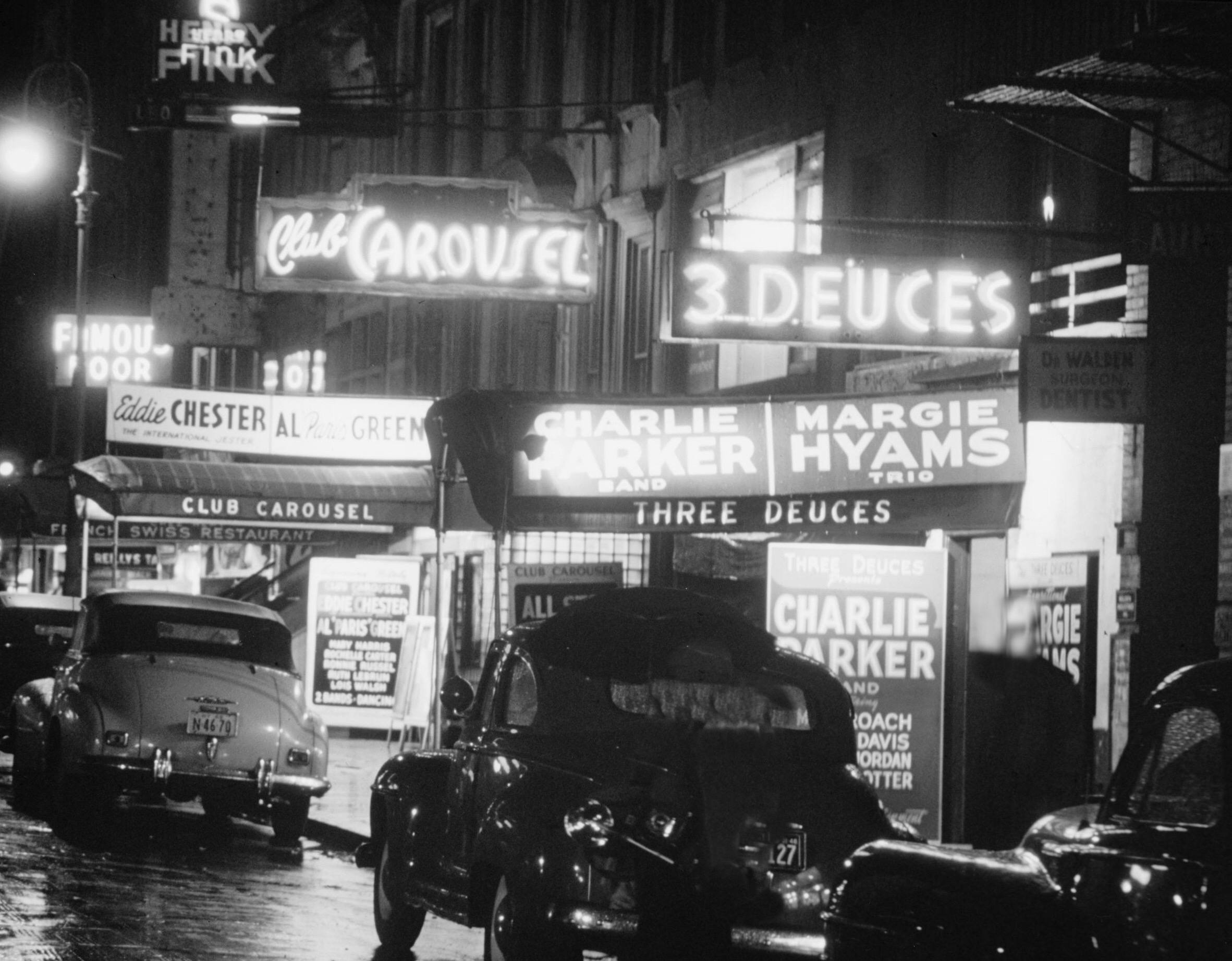
(Photo of the South side of 52nd Street between 5th & 6th Avenues looking east from 6th Avenue (c. 1948) by William P. Gottlieb)
• Cannonball Adderley
• Gene Ammons
• Albert Ayler
• Chet Baker
• Art Blakey
• Jimmy Blanton
• Tina Brooks
• Clifford Brown
• Dave Brubeck
• Ray Bryant
• Donald Byrd
• Sonny Clark
• Chick Corea
• Sonny Criss
• Paul Desmond
• Eric Dolphy
• Lou Donaldson
• Kenny Dorham
• Kenny Drew
• Bill Evans
• Ella Fitzgerald
• Tommy Flanagan
• Red Garland
• Stan Getz
• Dexter Gordon
• Grant Green
• Johnny Griffin
• Al Haig
• Hampton Hawes
• Joe Henderson
• Billie Holliday
• Milt Jackson
• Keith Jarrett
• Elvin Jones
• Philly Joe Jones
• Duke Jordan
• Wynton Kelly
• Rahsaan Roland Kirk
• Scott LaFaro
• Booker Little
• Branford Marsalis
• Jackie McLean
• Pat Metheny
• Hank Mobley
• Wes Montgomery
• Lee Morgan
• Fats Navarro
• Phineas Newborn Jr.
• Duke Pearson
• Art Pepper
• Oscar Peterson
• Bud Powell
• Max Roach
• Sonny Rollins
• Pharoah Sanders
• Shirley Scott
• Archie Shepp
• Wayne Shorter
• Horace Silver
• Zoot Sims
• Bobby Timmons
• Stanley Turrentine
• McCoy Tyner
• Mal Waldron
NOTES[edit]
- ↑ "The Making of a GREAT DAY FOR JAZZ," Issue 2004, No. 1.
- ↑ “Thank you for contacting the National Endowment for the Arts (NEA) and for your interest in the NEA Jazz Masters photo. As long as you are not looking to use the photograph for financial gain, rather for informational purposes, you may use it with the following credit: Photo by Tom Pich for the NEA. We wish you the best in all your creative endeavors. Signed: Allison Hill, Staff Assistant in Public Affairs, National Endowment for the Arts, 400 7th Street SW, Washington DC 20506, hilla@arts.gov; 202-682-5037; 202-682-5084.
- ↑ ‘’Wikipedia’’: William P. Gottlieb.
- ↑ May 1, 2020. "We are happy for you to use the picture from the front of the "Kitten on the Keys" with our wording removed. As the picture is our copyright (the original was a greyscale image) we would appreciate a credit to Saydisc Records, if this is possible. I imagine you will be including details of our albums "Kitten on the Keys", “Pianola Jazz” and “Pianola Ragtime” on your website." After having been sent the finished image that was being put on the PoJ.fm website, Gef wrote back via email on May 2, 2020 that "Yes, the picture's fine and we are happy to confirm that we grant permission for use as you describe. A hyperlink to our website is acceptable." With best wishes, Gef Lucena, Saydisc Records, The Barton, Inglestone Common, Badminton, S. Glos. GL9 1BX, England. E-mail: Saydiscrecords@aol.com. Web site: www.saydisc.com.
- ↑ 5.0 5.1 5.2 Ted Gioia, The History of Jazz, 2nd edition (New York: Oxford University Press, 2011), 33.
- ↑ "The People of Traditional New Orleans Jazz: Buddy Bolden: Calling His Children Home 1877–1931, National Park Service, New Orleans Jazz, National Historical Park Louisiana.
- ↑ For musical examples see:
‣ "Essential Solos: 40 Great Improvisations: (100) Jazz artists and critics pick their favorite solos from the music's past and present," Jazz Times, November 2, 2017.
‣ "Perfect Jazz Recordings," Richard Brody, The New Yorker, September 23, 2014.
‣ Also see the Jazz Discography Project. - ↑ "Charles "Buddy" Bolden," National Park Service, New Orleans Jazz National Historical Park website, second paragraph, second sentence. Accessed September 7, 2019.
- ↑ Ted Gioia goes so far as to call Bolden “the elusive father of jazz” and “often cited as the first jazz musician” in The History of Jazz, 2nd ed., (New York: Oxford University Press, 2011), 33–34.
- ↑ The date of 1895 can be heard recited here at Jazz Rhythms. It is also referenced at JazzOnTheTube's "Buddy Bolden".
- ↑ Ted Gioia, The History of Jazz, 2nd edition, (New York: Oxford University Press, 2011), 34.
- ↑ 12.0 12.1 Ira Steingroot, "Arts: Yoshi’s Honors Memory of Jazz Legend Clifford Brown," The Berkeley Daily Planet, Special to the Planet, October 21, 2005.
- ↑ Matt Micucci, "A Short History of . . . The Legend of Buddy Bolden," Jazziz magazine, March 6, 2019.
- ↑ Wikipedia: Buddy Bolden confirms his notable accomplishments under the sub-heading "Musical career and early decline":
“ . . . known as King Bolden, his band was popular in New Orleans (the city of his birth) from about 1900 until 1907, when he was incapacitated by schizophrenia (then called dementia praecox). Bolden was known for his loud sound and improvisation. He made a big impression on younger musicians.” - ↑ See these further biographies and discographies:
‣ Ferdinand "Jelly Roll Morton" Lamothe
‣ Doctor Jazz's Jelly Roll Morton website
‣ Doctor Jazz's Jelly Roll late news and references - ↑ Morton often gave his birthdate as being 1885 to make it more likely he could have invented jazz. This date was false, as reported at AllMusic.com, Uncle Dave Lewis, "Don't You Leave Me Here: Tributary of a Blues Stream," Aug. 13, 2009: “The discovery in 2005 of a visa Morton had taken out to work in Mexico in 1921 reveals that Jelly Roll Morton really knew that he'd been born in 1890. But by 1938, he was backdating himself to appear five years older—for the longest time "1885" was the accepted birthdate for Morton, only to be undone decades after his death by virtue of a baptismal registry discovered in a New Orleans church.”
- ↑ Robert Walser, ed. Keeping Time: Readings in Jazz History, NY: Oxford, 1999, 16.
- ↑ For musical examples see:
‣ "Essential Solos: 40 Great Improvisations: (100) Jazz artists and critics pick their favorite solos from the music's past and present," Jazz Times, November 2, 2017.
‣ "Perfect Jazz Recordings," Richard Brody, The New Yorker, September 23, 2014.
‣ Also see the Jazz Discography Project. - ↑ "Jazz Milestones: Noteworthy Dates in the History of Jazz Music (1895–1977), entry under 1902: at APassion4Jazz.com.
- ↑ 20.0 20.1 20.2 John Edward Hasse, "Plotting His Way Into Jazz History," Wall Street Journal, September 7, 2018.
- ↑ Encyclopedia Brittanica: "Jelly Roll Morton," first paragraph.
- ↑ Howard Reich and William Gaines, Jelly's Blues: The Life, Music, and Redemption of Jelly Roll Morton (Cambridge, Mass.: Da Capo Press), 2003, 144.
- ↑ Jeffrey Magee, "'King Porter's Stomp' and the Jazz Tradition," Current Musicology, "Special Issue - Jazz Studies," at Jazz Studies Online.
- ↑ See Katy E. Martin, "The Preoccupations of Mr. Lomax, Inventor of the 'Inventor of Jazz'," M.A. thesis, graduate degree program in English and the Graduate Faculty of the University of Kansas, 2008, 2.
Also available in Popular Music and Society, "The Preoccupations of Mr. Lomax, Inventor of the “Inventor of Jazz”," Volume 36, 2013, Issue 1, April 18, 2012, 30–39. Also found in a thesis imprint by ProQuest, UMI Dissertation Publishing (September 1, 2011), .
.
- ↑ John Fordham, "50 great moments in jazz: The arrival of Duke Ellington," Music blog: Jazz, The Guardian, March 27, 2009.
- ↑ "The Fantastic Mr. Jelly Lord," Jazz at Lincoln Center's 2017–18 Opening Weekend concerts, September 14–16, 2017.
“The Jazz at Lincoln Center Orchestra with Wynton Marsalis kicks off the 30th anniversary season with a celebration of New Orleans legend Jelly Roll Morton (1890–1941). Jazz’s first great composer, musical intellect, and piano virtuoso, Morton provided the musical blueprint of an eternal New Orleans and jazz as it is known today. Through both classic and never-before-heard arrangements of essential tunes like “King Porter Stomp,” “Jungle Blues,” “Black Bottom Stomp,” and “The Pearls,” the JLCO (Jazz at Lincoln Center Orchestra) will showcase the contemporary power and depth of possibility in the earliest jazz. The concepts found in these pieces have been explored by master musicians for the past century and made truly modern through the lens of Jelly Roll.” (bold not in original)
- ↑ For musical examples see:
‣ "Essential Solos: 40 Great Improvisations: (100) Jazz artists and critics pick their favorite solos from the music's past and present," Jazz Times, November 2, 2017.
‣ "Perfect Jazz Recordings," Richard Brody, The New Yorker, September 23, 2014.
‣ Also see the Jazz Discography Project. - ↑

- ↑ "Top 20 Musicians of All Time, in Any Genre: #5: Louis Armstrong," Chris Walker, LA Weekly, January 12, 2012.
- ↑ See Armstrong singing in the only known footage of him in a recording studio at Time magazine's Rare footage of Armstrong in recording studio.
- ↑ DownBeat magazine, "The First Recordings," fourth paragraph.
- ↑ Louis Armstrong purchased this modest house in 1943, built by Robert W. Johnson in 1910, and lived there until his death in 1971 of a heart attack. The house was put on the National Register #76001265 in 1976. In 1983, Armstrong's widow, Lucille, willed the house and its contents to New York City for the creation of a museum and study center devoted to Armstrong's career and the history of jazz. The Louis Armstrong House was designated a landmark by the New York City Landmarks Preservation Commission in 1988.
- ↑ For musical examples see:
‣ "Essential Solos: 40 Great Improvisations: (100) Jazz artists and critics pick their favorite solos from the music's past and present," Jazz Times, November 2, 2017.
‣ "Perfect Jazz Recordings," Richard Brody, The New Yorker, September 23, 2014.
‣ Also see the Jazz Discography Project. - ↑ Wikipedia: Sydney Bechet, "Biography," first paragraph, second sentence. The first paragraph of this Wikipedia entry is verbatim from Scott Yanow's artist biography of Bechet from AllMusic.com.
- ↑ AllMusic.com's artist blurb overview.
- ↑ 36.0 36.1 “His (Bechet's) playing style was intense and passionate and had a wide vibrato. He was also known to be proficient at playing several instruments and a master of improvisation (both individual and collective). Bechet liked to have his sound dominate in a performance, and trumpeters found it difficult to play alongside him.” found at Wikipedia: Sidney Bechet, "Career," second paragraph.
- ↑ "Sidney Bechet, master of New Orleans jazz – archive, from September 10, 1956," The Guardian, Friday September 10, 2021, third and fourth paragraph.
- ↑ "Sidney Bechet: Profiles in Jazz," Syncopated Times, Scott Yanow, Profiles In Jazz, second paragraph, July 1, 2017.
- ↑ "Artist Biography by Scott Yanow," AllMusic.com, fourth and last paragraph.
- ↑ Wikipedia: Sydney Bechet, "Biography," 14th paragraph.
- ↑ For musical examples see:
‣ "Essential Solos: 40 Great Improvisations: (100) Jazz artists and critics pick their favorite solos from the music's past and present," Jazz Times, November 2, 2017.
‣ "Perfect Jazz Recordings," Richard Brody, The New Yorker, September 23, 2014.
‣ Also see the Jazz Discography Project. - ↑ 42.0 42.1 His awards, as well as the number of Ellington's performances around the world, and the figure of over 3,000 songs for the number of Ellington's compositions are all stated at "Duke Ellington Biography" at DukeEllington.com, the Official Site of jazz legend Duke Ellington.
- ↑ “I was always awed by Duke Ellington. Everything about him dazzled me--his music, of course, but also his energy, his hipness, his appearance.... handsome, elegant, suave, sophisticated.” William P. Gottlieb in The Golden Age of Jazz.
- ↑ See Terry Teachout's discussion of this situation in his biography of Duke Ellington, Duke: A Life of Duke Ellington, on pp. 66-67 and 399.
- ↑ John Gennari, "But Is It Jazz?," Reviews in American History, Vol. 23, No. 1 (March, 1995), 92.
- ↑ At WyntonMarsalis.com Ellington explains in his own words how and why he tailored specific parts of his compositions for specific members of his orchestra.
“Ellington, for instance, predicated portions of his compositions on what he expected his musicians to invent on the spot: “My aim is and always has been to mold the music around the man,” Ellington wrote in 1942. “I study each man in the orchestra and find out what he can do best, and what he would like to do.” Ellington routinely leaves room for musicians to riff freely, asking them not for specific notes but, instead, for the character of sound, color and rhythm he knows each uniquely can produce.
There’s almost always some open space in most of the Ellington pieces,” says Harbison. “The solo spots are kind of part of the conception, but they’re not specific. Jazz composition includes non-determined elements. And that’s just something that people have to come to terms with, to take a certain stance on. It seems that in the great pieces of Ellington, the building in of the soloist—and even the voice of the soloist—has been a part of the composition.” (quoted from "The Story Behind the First Pulitzer for Jazz") (bold not in original) - ↑ According to Jazz by Gary Giddins and Scott Deveaux, 2009, Ellington compositions are the most recorded in jazz history.
- ↑ Wynton Marsalis, Music: "What jazz is—and isn't," New York Times, 21st paragraph, July 31, 1988.
- ↑ “U.S. #2211 22¢ Duke Ellington Performing Arts Series.
* Issue Date: April 29, 1986
* City: New York, NY
* Quantity: 130,000,000
* Printed By: American Bank Note Co.
* Printing Method: Photogravure
* Perforations: 11
* Color: Multicolored
“This stamp honors popular jazz pianist, composer, and band leader Duke Ellington (1899-1974). Edward Kennedy "Duke" Ellington wrote more than 6,000 songs during his long career, including "Satin Doll" and "Sophisticated Lady." Ellington was hailed by some as the greatest composer American society has ever produced.” (quoted from Mystic Stamp Company). Click on the stamp image to go to their website. - ↑ For musical examples see:
‣ "Essential Solos: 40 Great Improvisations: (100) Jazz artists and critics pick their favorite solos from the music's past and present," Jazz Times, November 2, 2017.
‣ "Perfect Jazz Recordings," Richard Brody, The New Yorker, September 23, 2014.
‣ Also see the Jazz Discography Project. - ↑ 51.0 51.1 51.2 "The Evolution of Jazz Saxophone Styles," "Coleman Hawkins," by Michael Verity, Thoughtco.com: Jazz, Updated August 18, 2017.
- ↑ "Biography of Coleman Hawkins," Scott Yanow, at AllMusic.com.
- ↑ Scott Yanow's Coleman Hawkins biography.
- ↑ For musical examples see:
‣ "Essential Solos: 40 Great Improvisations: (100) Jazz artists and critics pick their favorite solos from the music's past and present," Jazz Times, November 2, 2017.
‣ "Perfect Jazz Recordings," Richard Brody, The New Yorker, September 23, 2014.
‣ Also see the Jazz Discography Project. - ↑ JazzTimes magazine confirms Lester Young's lighter sonic approach to the saxophone contrasting with Coleman Hawkin's that they describe as “intricate, heavy, deadly serious sound that bore down like a dreadnought.” Young's sound contrasts with this because it had an “effervescent tone, seeming as it did to float over the rollicking rhythmic momentum of Count Basie, Freddie Green, Walter Page, and Jo Jones, is impossible to understate. Likewise for a line that, if it wasn’t as complex as Hawk's, was nearly delirious in its bounce. It also sounds spontaneous throughout, even in the obviously prearranged hit on the accents with (Jo) Jones . . . .”
JazzTimes continues by pointing out that when playing with Billie Holiday that “Young’s phrases are cool and sinuous. Even as the track closes, and the other two horn players (trumpeter Buck Clayton and clarinetist Edmond Hall) throw some more juice into the mix, Young is relaxed, detached, and thoroughly beautiful.” - ↑ Loren Schoenberg (b. 1958), "Lester Young," Mosaic Records, liner note excerpts from Mosaic Records: "The Lester Young Count Basie Sessions 1936–1940" and "Classic Columbia, OKeh and Vocalion Lester Young — Lester Young with Count Basie 1936–1940."
- ↑ Joel Dinerstein, "Lester Young and the Birth of the Cool," third paragraph.
- ↑ 58.0 58.1 John Edward Hasse, "How Lester Young Altered the Course of Music," Cultural Commentary, Wall Street Journal, March 13, 2019.
- ↑ Loren Schoenberg (b. 1958), "Lester Young," Mosaic Records, liner note excerpts from Mosaic Records: "The Lester Young Count Basie Sessions 1936–1940" and "Classic Columbia, OKeh and Vocalion Lester Young — Lester Young with Count Basie 1936–1940."
- ↑ Permission granted to use detail of photo by Denise Morrison, Director of Collections & Curatorial Services, Kansas City Museum,
 kansascitymuseum.org, c/o: Union Station Kansas City, 30 W. Pershing Rd., Kansas City, MO 64108, Email:denise.morrison@kcmo.org, Desk Phone: 816-513-7569 on February 8, 2019.
kansascitymuseum.org, c/o: Union Station Kansas City, 30 W. Pershing Rd., Kansas City, MO 64108, Email:denise.morrison@kcmo.org, Desk Phone: 816-513-7569 on February 8, 2019.
- ↑ For musical examples see:
‣ "Essential Solos: 40 Great Improvisations: (100) Jazz artists and critics pick their favorite solos from the music's past and present," Jazz Times, November 2, 2017.
‣ "Perfect Jazz Recordings," Richard Brody, The New Yorker, September 23, 2014.
‣ Also see the Jazz Discography Project. - ↑ 62.0 62.1 62.2 Wikipedia: Count Basie, "Early career," second paragraph.
- ↑ 63.0 63.1 63.2 Wikipedia: Count Basie, second paragraph.
- ↑ William "Count" Basie & Albert Murray, Good Morning Blues: The Autobiography of Count Basie (New York: Da Capo Press, 2002), 127. ISBN 978-0-306-81107-4.
- ↑ Wikipedia: Count Basie, "Kansas City years," first paragraph.
- ↑ Wikipedia: Count Basie, reports that “Right from the start, Basie's band was noted for its rhythm section. Another Basie innovation was the use of two tenor saxophone players; at the time, most bands had just one (tenor saxophonist). When (Lester) Young complained of Herschel Evans' vibrato, Basie placed them on either side of the alto players, and soon had the tenor players engaged in "duels".”
- ↑ 67.0 67.1 67.2 Wikipedia: Count Basie, "John Hammond and first recordings," third and fourth paragraphs.
- ↑ Mary Lou Williams Interview, Melody Maker, April to June, 1954.
- ↑ Cassandra Jensen, "Top 10 Reasons Mary Lou Williams Should Be Your Favorite Jazz Musician," BlackPublicMedia.org, (March 31, 2015), third paragraph.
- ↑ Encyclopedia Brittanica: Mary Lou Williams, first paragraph. Most recently updated on May 25, 2018.
- ↑ Tammy L. Kemodle, "Ch. 5: How Do You Keep the Music Playing?," in Soul on Soul: The Life and Music of Mary Lou Williams (Chicago: University of Illinois Press, 2020), 81.
- ↑ As claimed in the Encyclopedia Brittanica: Mary Lou Williams, second paragraph:
“In 1927, when her husband, saxophonist and bandleader John Williams, moved to Oklahoma to join the popular Andy Kirk and his Clouds of Joy, Mary Lou Williams took over the leadership of his band. She began a successful arranging career in 1929, when she moved to Oklahoma to join her husband with Kirk. During her time with Kirk, the band became well known for her stunning solo piano and highly original arrangements, including “Froggy Bottom,” “Walkin’ and Swingin’,” “Little Joe from Chicago,” “Roll ’Em,” and “Mary’s Idea.” She is widely credited as a major influence for the Kansas City–Southwest Big Band sound that Twelve Clouds of Joy helped to popularize.” (bold not in original)
- ↑ Barry Kernfeld (editor), "Mary Lou Williams," The New Grove Dictionary of Jazz.
- ↑ 74.0 74.1 74.2 Encyclopedia Brittanica: Mary Lou Williams, fourth paragraph.
- ↑ Alexa Peters, "10 Women Instrumentalists Who Redefine Jazz," Paste magazine, December 1, 2016.
- ↑ "Mary Lou Williams," February 23, 2016, TurtleLearning Blog, 8th paragraph. Accessed September 15, 2019.
- ↑ Williams performed the full piece for the first time at Saint Francis Xavier Church (located at 46 West 16th Street near 6th Avenue in New York) November, 1962, and she recorded it in October 1963.
- ↑ “Tammy L. Kernodle provides a second reason for William's exclusion from most jazz historical narratives: her piano style, composing style, and arranging style defied categorization. Williams mastered each new style from the 1930s into the 1970s, and her arrangements similarly evolved with the passage of time.” in "Mary's Ideas: Big Band Music by Mary Lou Williams," "A Woman's Place in Narratives of Jazz," Theodore E. Buehner, Mary Lou Williams: Selected Works in Big Band, edited by Theodore E. Buehner, (Middleton, Wisconsin: A-R Editions, Inc, 2013), xiii.
- ↑ According to John S. Wilson, "Mary Lou Williams, A Jazz Great, Dies," NYTimes Obituary, May 30, 1981, 5th paragraph.
- ↑ John S. Wilson, "Mary Lou Williams, A Jazz Great, Dies," NYTimes Obituary, May 30, 1981, Section 1, 21.
- ↑ For musical examples see:
‣ "Essential Solos: 40 Great Improvisations: (100) Jazz artists and critics pick their favorite solos from the music's past and present," Jazz Times, November 2, 2017.
‣ "Perfect Jazz Recordings," Richard Brody, The New Yorker, September 23, 2014.
‣ Also see the Jazz Discography Project. - ↑ For musical examples see:
‣ "Essential Solos: 40 Great Improvisations: (100) Jazz artists and critics pick their favorite solos from the music's past and present," Jazz Times, November 2, 2017.
‣ "Perfect Jazz Recordings," Richard Brody, The New Yorker, September 23, 2014.
‣ Also see the Jazz Discography Project. - ↑ This is a colorized photograph of Charlie Christian when he was three years old.
 .
.
- ↑ 84.0 84.1 84.2 "Christian, Charlie (inducted 2018)," Oklahoma Hall of Fame.
- ↑ Rock & Roll Hall of Fame: Charlie Christian reports that “Charlie Christian elevated the guitar as a lead instrument on par with the saxophone and trumpet in jazz and popular music.”
- ↑ Gene Lees in his liner notes to "Solo Flight: The Genius of Charlie Christian" (Columbia G 30779, 1972), wrote that "Many critics and musicians consider that Christian was one of the founding fathers of bebop, or if not that, at least a precursor to it."
- ↑ John Hammond and Irving Townsend, John Hammond on Record: An Autobiography (New York: Ridge Press, 1977). ISBN 0-671-40003-7.
- ↑ George T. Simon, The Big Band's, 1971. ISBN 0-02-872430-5.
- ↑ Wikipedia: Thelonious Monk describes Monk's early playing career, “as "hard-swinging," with the addition of runs in the style of Art Tatum. Monk's stated influences included Duke Ellington, James P. Johnson, and other early stride pianists.”
Michael Verity at "What Is Early Jazz Music?," (updated March 08, 2018), provides a description and explanation of how the stride piano style functions:“Directly influenced by ragtime, the stride piano style became popular in New York during World War I. Stride pieces are characterized by a bass line with a half-note pulse played in the left hand while the melody and chords are played in the right hand. The term “stride” comes from the action of the left hand as it strikes a bass note and then moves swiftly up the keyboard to strike chord tones on every other beat. Stride pianists also incorporated improvisation and blues melodies and were keen on technical prowess.” (bold not in original)
- ↑ Wikipedia: Thelonious Monk describes Monk's singular style: “Monk's compositions and improvisations feature dissonances and angular melodic twists and are consistent with his unorthodox approach to the piano, which combined a highly percussive attack with abrupt, dramatic use of switched key releases, silences, and hesitations.” (bold not in original)
- ↑ For musical examples see:
‣ "Essential Solos: 40 Great Improvisations: (100) Jazz artists and critics pick their favorite solos from the music's past and present," Jazz Times, November 2, 2017.
‣ "Perfect Jazz Recordings," Richard Brody, The New Yorker, September 23, 2014.
‣ Also see the Jazz Discography Project. - ↑ In From Jazz Novice to Jazz Connoisseur Monk's piano playing style around 1941 as well as some of his influences are stated: “Monk's style at this time was later described as "hard-swinging," with the addition of runs in the style of Art Tatum. Monk's stated influences included Duke Ellington, James P. Johnson, and other early stride pianists.”
- ↑ Wikipedia: "List of compositions by Thelonious Monk."
- ↑ "Jazz: The Loneliest Monk," Time magazine, Friday, Feb. 28, 1964.
- ↑ "Thelonious Monk biography," Blue Note Records website, opening sentences.
- ↑ International Jazz Day website: "About", first sentence.
- ↑ “Set of conga drums that belonged to Dizzy Gillespie before he gifted them to a fellow musician on May 4, 1987. Dizzy Gillespie used these conga drums when he performed with J.C. Heard and his Orchestra, at the 1987 Montreux-Detroit Jazz Festival. Dizzy and J.C. Heard, were commissioned by Detroit Renaissance to write and perform a song together to commemorate the event. That night Dizzy took a break from his horn and played the conga to ignite the audience by performing a percussion duet with J.C. Heard on drums and Dizzy Gillespie on the congas.” (Dizzy performed with conga drum as described in Guernsey's Auction Catalog, Guernsey’s Jazz Auction Catalogue Addendum, p. 12 of 14.)
- ↑ As reported at Wikipedia: Dizzy Gillespie.
- ↑ "In Love With the Trumpet; Dizzy Author's Query," Claude Brown, New York Times, February 3, 1980, p. 4. “At 16, the future father of bebop entered Laurinburg Institute . . . . In 1935 he left Laurinburg Institute and joined his family at their new home in Philadelphia.”
- ↑ Oklahoma Jazz Hall of Fame.
- ↑ "Dizzy Gillespie Biography," 6th paragraph, Oklahoma Jazz Hall of Fame.
- ↑ "Dizzy Gillespie," 8th and last paragraph, Oklahoma Jazz Hall of Fame.
- ↑ As said at Mark Warner's FERMENTATION: The Daily Wine Blog: “(Parker) gave to the emerging Be-Bop artists a new harmonic paradigm that filled in the sound that progressive jazz artists were exploring as they moved away from the swing genre. Parker's great innovation was his discovery, out of his own imagination, of how to play any note and resolve it in the chord so that it would sound harmonically right.”
- ↑ Music in a New Found Land,
 Wilfred Mellers, Ch. VII: "From jazz back to art," New York: Hiilstone Publishing, 1964/1975, 353.
Wilfred Mellers, Ch. VII: "From jazz back to art," New York: Hiilstone Publishing, 1964/1975, 353.
- ↑ "Charlie Parker: American Musician," written by the Editors of Encyclopaedia Britannica, last updated Aug 25, 2018.
- ↑ "Charlie Parker," Helen Dickson, Kansapedia, created April, 2015 and modified January, 2016.
- ↑ "Miles Davis: Winner Take All," Lionel Olay, originally published in Cavalier, Vol. 21, August, 1954, reproduced in Miles on Miles: Interviews and Encounters with Miles Davis, edited by Paul Maher Jr. and Michael K. Dorr, Chicago: Illinois, Lawrence Hill Books, 2009, 24. ISBN: 978-1-55652-706-7.
- ↑ See "Mingus: Bass Prodigy."
- ↑ "Charles Mingus: American musician," Encyclopedia Brittanica, 3rd paragraph.
- ↑ AllMusic Review by Steve Huey.
- ↑ For musical examples see:
‣ "Essential Solos: 40 Great Improvisations: (100) Jazz artists and critics pick their favorite solos from the music's past and present," Jazz Times, November 2, 2017.
‣ "Perfect Jazz Recordings," Richard Brody, The New Yorker, September 23, 2014.
‣ Also see the Jazz Discography Project. - ↑ 112.0 112.1 "Max Roach: Speak Brother Speak," Martin Smith, Socialist Review, September 2007, p. 317.

- ↑ 113.0 113.1 113.2 113.3 113.4 113.5 113.6 113.7 MacArthur Foundation profile.
- ↑ Jeru: In the Words of Gerry Mulligan, "Miles Davis," third paragraph, from "The Gerry Mulligan Collection."
- ↑ 115.0 115.1 115.2 115.3 115.4 115.5 "Max Roach, a Founder of Modern Jazz, Dies at 83" Peter Keepnews, New York Times, August 16, 2007.
- ↑ "All That Jazz," Erin Allen, 4th paragraph, January 31, 2014.
- ↑ “Roach led his own groups, notably a pioneering quintet co-led with trumpeter Clifford Brown as well as his percussion ensemble M'Boom.”
Wikipedia: Max Roach, second paragraph. - ↑ Music: "What jazz is—and isn't," Wynton Marsalis, New York Times, 17th and 18th paragraphs, July 31, 01988.
- ↑ "Jazz Luminaries to Honor Life of Drummer Max Roach at UMass Amherst March 25," UMass Amherst News & Media Relations webpage, March 19, 2008.
- ↑ NPR'S "Max Roach on Piano Jazz."
- ↑ For musical examples see:
‣ "Essential Solos: 40 Great Improvisations: (100) Jazz artists and critics pick their favorite solos from the music's past and present," Jazz Times, November 2, 2017.
‣ "Perfect Jazz Recordings," Richard Brody, The New Yorker, September 23, 2014.
‣ Also see the Jazz Discography Project. - ↑ Lewis Porter, Chris DeVito, David Wild, Yasuhiro Fujioka, Wolf Schmale, The John Coltrane Reference, February 16, 2013.
Personnel: John Coltrane, alto saxophone, possibly clarinet; unknown piano, guitar. Ca. early to mid-1945 (dates unknown). Unknown venues, Philadelphia, PA. François Postif (1962, p. 13): "My first real 'job,' I took down in Philadelphia in 1945 where I played with a pianist and a guitarist. A sort of cocktail music, but it offered me a living!"
From John Coltrane's completed questionnaire (undated, ca. 1956) for Leonard Feather's Encyclopedia of Jazz (reprinted in Thomas, 1975, photo section following p. 88; and Woideck, 1998, p. 84): HOW DID YOU GET INTO THE MUSIC BUSINESS? "In Philadelphia with a cocktail trio. This job was in 1945. I also joined the musician's union at that same time." - ↑ Wikipedia: John Coltrane Seventh paragraph, first sentence.
- ↑ Wikipedia: John Coltrane affirms Coltrane's music took on an increasingly spiritual aspect up to his death in 1967 from liver cancer at the age of 40. “As his career progressed, Coltrane and his music took on an increasingly spiritual dimension.” (second paragraph, first sentence)
Don't just take Wikipedia's word for it. Consider the liner notes from the collaborative Bob Thiele produced album, "John Coltrane and Johnny Hartman," and the 'effusive' liner notes by poet and author, A. B. Spellman:“The quartet [John Coltrane/tenor saxophone, McCoy Tyner/piano, Jimmy Garrison/double bass, Elvin Jones/drums] has been, till now [up to 1963] , concerned with other things, with the development of a kinetic vernacular which facilitated the release of a kind of group energy that was deeper in content and fuller in emotional color than any music I have experienced, anywhere.” (bold not in original) (quoted in “A Look Back at John Coltrane & Johnny Hartman,” Rusty Aceves, September 19, 2016).
Coltrane was not the first jazz person to promote spirituality in jazz because Duke Ellington and company had already done so in Ellington's "Black, Brown, and Tan Fantasy." See the article by David Metzer, "Shadow Play: The Spiritual in Duke Ellington's "Black and Tan Fantasy," Black Music Research Journal, Vol. 17, No. 2 (Autumn, 1997), 137–158. Additionally, the jazz pianist Mary Lou Williams, a convert to Roman Catholicism in 1956, wrote and performed spiritually oriented music, including especially "Mary Lou's Mass." Here is the relevant section from Wikipedia: Mary Lou Williams:
“One of the masses, "Music for Peace," was choreographed by the Alvin Ailey and performed by the Alvin Ailey Dance Theater as Mary Lou's Mass in 1971. About the work, Ailey commented, "If there can be a Bernstein Mass, a Mozart Mass, a Bach Mass, why can't there be Mary Lou's Mass?" Williams performed the revision of "Mary Lou's Mass," her most acclaimed work, on The Dick Cavett Show in 1971.
She wrote and performed religious jazz music such as "Black Christ of the Andes" (1963), a hymn in honor of the St. Martin de Porres; two short works, "Anima Christi" and "Praise the Lord." In this period, Williams put much effort into working with youth choirs to perform her works, including mass at St. Patrick's Cathedral in New York City before a gathering of over three thousand. . . . As a February 21, 1964 Time article explained, "Mary Lou thinks of herself as a 'soul' player — a way of saying that she never strays far from melody and the blues, but deals sparingly in gospel harmony and rhythm. 'I am praying through my fingers when I play,' she says.'I get that good "soul sound", and I try to touch people's spirits.'"
. . . . In April 1975, she played her highly regarded jazz spiritual, "Mary Lou's Mass" at St. Patrick's Cathedral in New York. It marked the first time a jazz musician had played at the church. (bold not in original)
See Franya J. Berkman (1972-2012), "Appropriating Universality: The Coltranes and 1960s Spirituality," American Studies, Vol. 48, No. 1 (Spring 2007), 41–62. Published by Mid-America American Studies Association.
- ↑ Coltrane himself, when discussing his sheets of sound technique in an interview, said the following in DownBeat magazine, Sept 29, 1960:
“About this time, I was trying for a sweeping sound. I started experimenting because I was striving for more individual development. I even tried long, rapid lines that Ira Gitler termed “sheets of sound” at that time. But actually, I was beginning to apply the three-on-one chord approach, and at that time the tendency was to play the entire scale of each chord. Therefore, they were usually played fast and sometimes sounded like glisses.”
“I found there were a certain number of chord progressions to play in a given time, and sometimes what I played didn’t work out in eighth notes, 16th notes, or triplets. I had to put the notes in uneven groups like fives and sevens in order to get them all in.”
“I could stack up chords, say on a C7, I sometimes superimposed an Eb7 up to an F#7, down to an F. That way I could play three chords on one. But on the other hand, if I wanted to, I could play melodically . . . .” (Quoted at "Sheets Of Sound Explained (John Coltrane)" at thejazzpianosite.com) - ↑ Wikipedia: John Coltrane, second paragraph, second sentence.
- ↑ See the New York Times article about the formation of the church "Sunday Religion, Inspired by Saturday Nights," by Samuel G. Freedman, December 1, 2007, then read the moving descriptions of Coltrane's musically spiritual impact in Carvell Wallace's "A Place For The Soul To Sing: The Church of St. John Coltrane.”
- ↑ For musical examples see:
‣ "Essential Solos: 40 Great Improvisations: (100) Jazz artists and critics pick their favorite solos from the music's past and present," Jazz Times, November 2, 2017.
‣ "Perfect Jazz Recordings," Richard Brody, The New Yorker, September 23, 2014.
‣ Also see the Jazz Discography Project. - ↑ NEA Jazz Masters Bio, opening sentence.
- ↑ 'Wikipedia: Cool aesthetic.
- ↑ Click on word "dresser" and see first definition in Wiktionary: dresser under "Etymology 2". The Guardian newspaper reports that “Davis was the best-dressed man of the 20th century. Starting out, he'd customise his pawnshop Brooks Brothers suits, cutting notches in the lapels in imitation of the Duke of Windsor. After 1949's Birth of the Cool, he favoured the Ivy League look of European tailoring. In the 60s he went for slim-cut Italian suits and handmade doeskin loafers. He was always the coolest-looking man in the room.” (bold not in original)
- ↑ Christian Chensvold, "Miles Ahead: Not just a jazz genius, Miles Davis was also a sartorial chameleon, easily carrying off the Ivy League Look and slim-cut European suits with ass-kicking charm," The Rake, originally published in Issue 6 of The Rake, May 2020.
- ↑ Christian Chensvold, "Miles Ahead: Not just a jazz genius, Miles Davis was also a sartorial chameleon, easily carrying off the Ivy League Look and slim-cut European suits with ass-kicking charm," The Rake: The Modern Voice of Classic Elegance, May, 2020.
- ↑ NEA Jazz Master bio, third paragraph.
- ↑ 135.0 135.1 “Throughout a professional career lasting 50 years, Miles Davis played the trumpet in a lyrical, introspective, and melodic style, often employing a stemless Harmon mute to make his sound more personal and intimate. But if his approach to his instrument was constant, his approach to jazz was dazzlingly protean. To examine his career is to examine the history of jazz from the mid-'40s to the early '90s, since he was in the thick of almost every important innovation and stylistic development in the music during that period, and he often led the way in those changes, both with his own performances and recordings and by choosing sidemen and collaborators who forged new directions. It can even be argued that jazz stopped evolving when Davis wasn't there to push it forward. (AllMusic: "Miles Davis biography," William Ruhlmann, first paragraph)
- ↑ See the documentary on Teo Macero's accomplishments at "Play That, Teo."
- ↑ Quincy Troupe, "Miles Davis: Our 1985 Interview, Part One originally appeared in the November 1985 issue of SPIN magazine, reproduced September 28, 2019.
- ↑ For musical examples see:
‣ "Essential Solos: 40 Great Improvisations: (100) Jazz artists and critics pick their favorite solos from the music's past and present," Jazz Times, November 2, 2017.
‣ "Perfect Jazz Recordings," Richard Brody, The New Yorker, September 23, 2014.
‣ Also see the Jazz Discography Project. - ↑ 139.0 139.1 Jazz: Marking Time in American Culture is designed to complement MUSI 212, the University of Virginia's introductory course in the history of jazz, Lennie Tristano.
- ↑ For musical examples see:
‣ "Essential Solos: 40 Great Improvisations: (100) Jazz artists and critics pick their favorite solos from the music's past and present," Jazz Times, November 2, 2017.
‣ "Perfect Jazz Recordings," Richard Brody, The New Yorker, September 23, 2014.
‣ Also see the Jazz Discography Project. - ↑ For musical examples see:
‣ "Essential Solos: 40 Great Improvisations: (100) Jazz artists and critics pick their favorite solos from the music's past and present," Jazz Times, November 2, 2017.
‣ "Perfect Jazz Recordings," Richard Brody, The New Yorker, September 23, 2014.
‣ Also see the Jazz Discography Project. - ↑ Read Gunther Schuller's 1959 quotation about Ornette Coleman at [1] and also read about the story behind "The Lenox School of Jazz 1959."
- ↑ Robert Palmer, "Ornette Coleman and the Circle with a Hole in the Middle," The Atlantic Monthly, December, 1972, 6th paragraph.
- ↑ Don Heckman, "Charlie Haden: Everything Man: Don Heckman profiles noted bassist and bandleader," JazzTimes, updated April 26, 2019.
- ↑ Francis Davis, "Ornette's Permanent Revolution: A jazzman breaks all the boundaries, The Atlantic, September, 1985, fourth paragraph.
- ↑ Fifth paragraph, first sentence from the Francis Davis article below.
“Jazz musicians have always respected instrumentalists whose inflections echo the natural cadences of speech, and they have always sworn by the blues (although as jazz has increased in sophistication, "the blues" has come to signify a feeling or a tonal coloring, in addition to a specific form). Coleman's blues authenticity—the legacy of the juke joints in his native Fort Worth, Texas, where he had played as a teenager—should have scored him points instantly. Instead, his ragged, down-home sound seems to have cast him in the role of country cousin to slicker, more urbanized musicians—as embarrassing a reminder of the past to them as a Yiddish speaking relative might have been to a newly assimilated Jew. In 1959 the "old country" for most black musicians was the American South, and few of them wanted any part of it.”(Francis Davis,"Ornette's Permanent Revolution: A jazzman breaks all the boundaries, The Atlantic, (September, 1985), fifth paragraph). - ↑ Robert Palmer, "Ornette Coleman and the Circle with a Hole in the Middle," The Atlantic Monthly, (December, 1972), 6th paragraph.
- ↑ Robert Kraut, "Why Does Jazz Matter to Aesthetic Theory," The Journal of Aesthetics and Art Criticism, Vol. 63, No. 1 (Winter, 2005), 7.
- ↑ Richard Brody, "Ornette Coleman’s Big Adventure," The New Yorker, August 29, 2012.
- ↑ Encyclopedia.com: Ornette Coleman, "Was an Outsider in the World of Jazz," seventh paragraph.
- ↑ Writer Bill Milkowski, in "Ornette Coleman: Skies of America," published September 1, 2000, describes Coleman's "Skies of America."
“Coleman’s third symphonic work, the 167-page epic score "Skies of America," is to “Turnaround” or “Ramblin'” what Zappa’s Orchestral Works is to “Valley Girl” or “Don’t Eat the Yellow Snow.” Both symphonic pieces are imposing works that present quite a challenge to listeners and die-hard fans alike. There are more rewards for Ornette devotees on "Skies of America," namely the inclusion of his instantly recognizable alto-sax voice. Recorded in September 1972 with the London Symphony Orchestra, under the baton of David Meacham, the densely textured, cinematic "Skies" is comprised of 21 distinct movements that run the gamut of emotions from giddy to poignant to turbulent. From the polytonal, polyrhythmic opener, “Skies of America,” to the gorgeous, Ivesian closer, “Sunday in America,” this rich symphonic work stands as Coleman’s harmolodic manifesto.”
- ↑ Progarchives.com, "Ornette Coleman & Prime Time biography," second paragraph.
- ↑ Jeffrey Hellmer and Richard Lawn, Jazz Theory and Practice: For Performers, Arrangers and Composers
 , Alfred Music, (May 3, 2005), 234. ISBN 978-1-4574-1068-0.
, Alfred Music, (May 3, 2005), 234. ISBN 978-1-4574-1068-0.
- ↑ Jim Collins, "It Isn't Easy Being a Genius," NYTimes, (September 19, 2005).
- ↑ JazzShelf.com's Reviews many of Ornette Coleman's albums.
- ↑ For musical examples see:
‣ "Essential Solos: 40 Great Improvisations: (100) Jazz artists and critics pick their favorite solos from the music's past and present," Jazz Times, November 2, 2017.
‣ "Perfect Jazz Recordings," Richard Brody, The New Yorker, September 23, 2014.
‣ Also see the Jazz Discography Project. - ↑ Nick DeCarlis, "Pocket Players," Pocket Cornets website, accessed November 5, 2021.
- ↑ "Mix Special: Don Cherry Around the World."
- ↑ For musical examples see:
‣ "Essential Solos: 40 Great Improvisations: (100) Jazz artists and critics pick their favorite solos from the music's past and present," Jazz Times, November 2, 2017.
‣ "Perfect Jazz Recordings," Richard Brody, The New Yorker, September 23, 2014.
‣ Also see the Jazz Discography Project. - ↑ For musical examples see:
‣ "Essential Solos: 40 Great Improvisations: (100) Jazz artists and critics pick their favorite solos from the music's past and present," Jazz Times, November 2, 2017.
‣ "Perfect Jazz Recordings," Richard Brody, The New Yorker, September 23, 2014.
‣ Also see the Jazz Discography Project. - ↑ "John McLaughlin Returns to New York's Town Hall with the 4th Dimension," November 1, 2010, World Music Central News Department, second paragraph.
- ↑ For musical examples see:
‣ "Essential Solos: 40 Great Improvisations: (100) Jazz artists and critics pick their favorite solos from the music's past and present," Jazz Times, November 2, 2017.
‣ "Perfect Jazz Recordings," Richard Brody, The New Yorker, September 23, 2014.
‣ Also see the Jazz Discography Project. - ↑ Michael Rydzynski, "Wynton Marsalis and Jazz at Lincoln Center Orchestra to interpret the music of Duke Ellington at Barclay," Los Angeles Times, September 27, 2018.
